Landing in pittwater: That Beach-Estuary-Lagoon looks like a great place to touchdown!
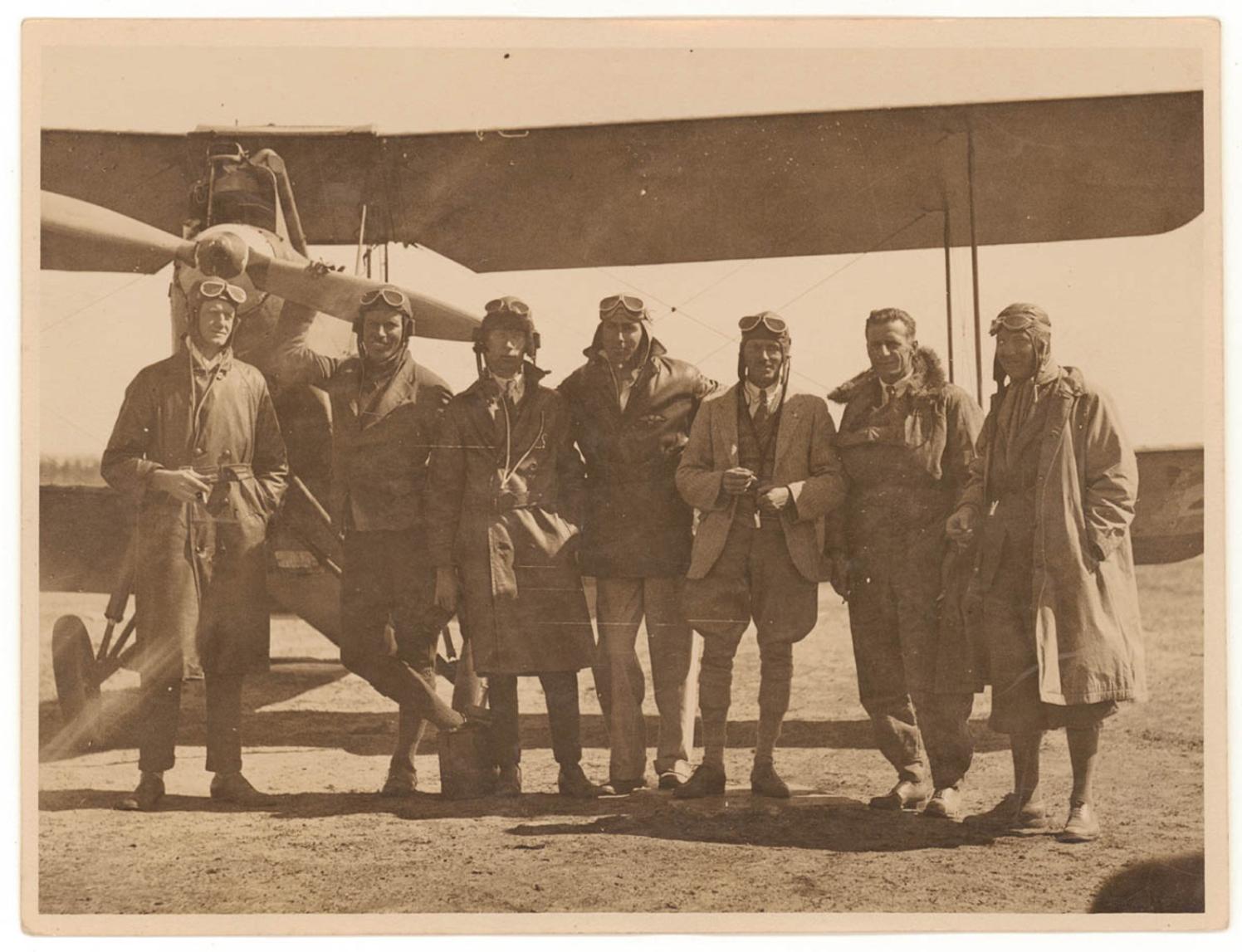
Although the instances when pilots have had to take the recourse of landing on our beaches have been few, there has been very few beaches that have missed out on a sudden visitation, and of course, these events occurred when our area was far less populated than it is today.
The reaction of residents and visitors was one of surprise, of course, but the incidents and the marvelling over those 'magnificent men (and women) in their flying machines' stayed in the memories of the witnesses and made the newspapers and journals of their times. This recollection, sent in by Ken 'Sava' Lloyd, recalls one such 'drop in' at Narrabeen:
A Few Memories Of Early Years At Narrabeen: The Plane Sailing Day Of 1944
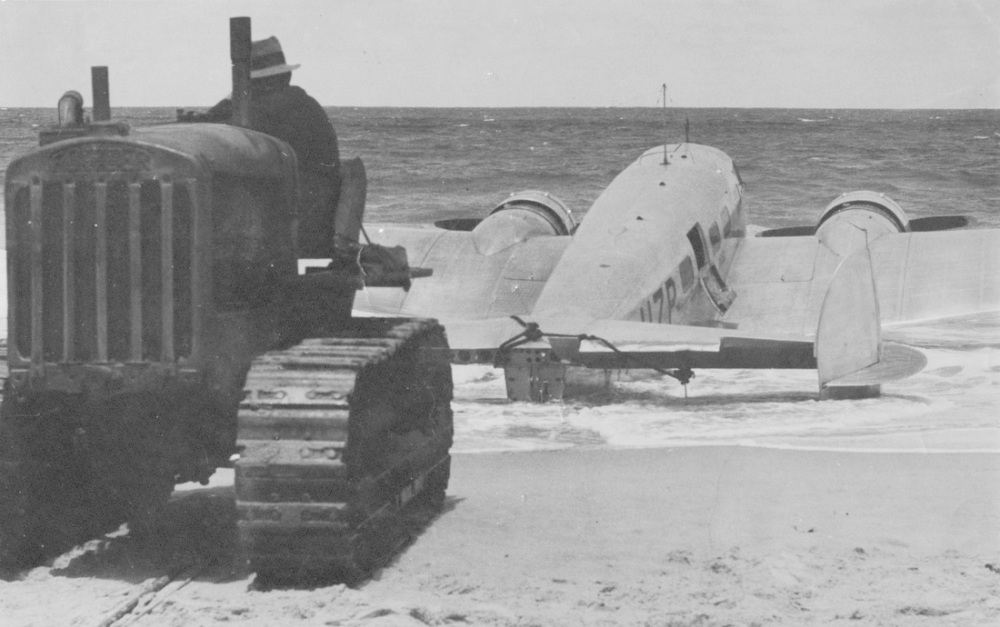
ACE FLIER LANDS DYING PLANE SAFELY ON NARRABEEN BEACH
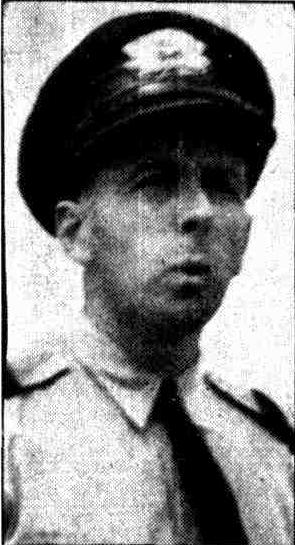 Right: Pilot Captain "Jimmy" Broadbent, of Point Piper, famous Australian airman who was piloting the plane which made a forced landing on Narrabeen Beach.
Right: Pilot Captain "Jimmy" Broadbent, of Point Piper, famous Australian airman who was piloting the plane which made a forced landing on Narrabeen Beach.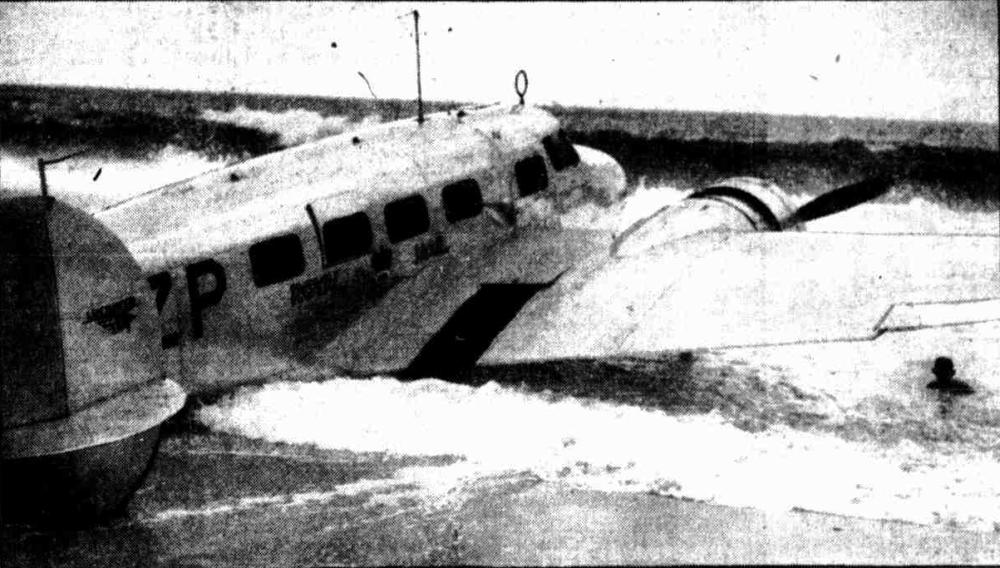
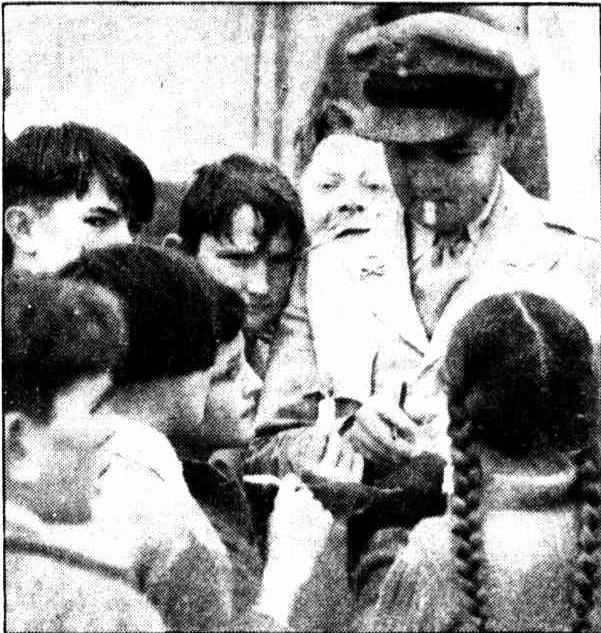
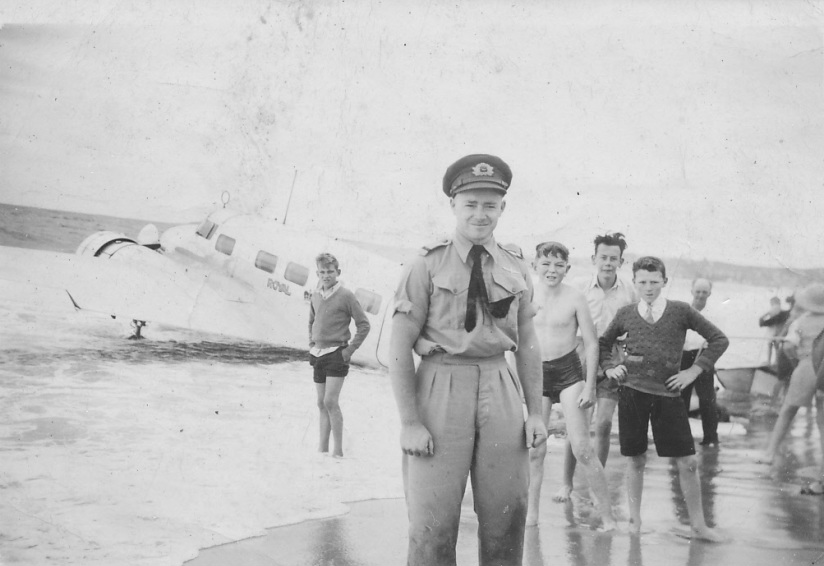
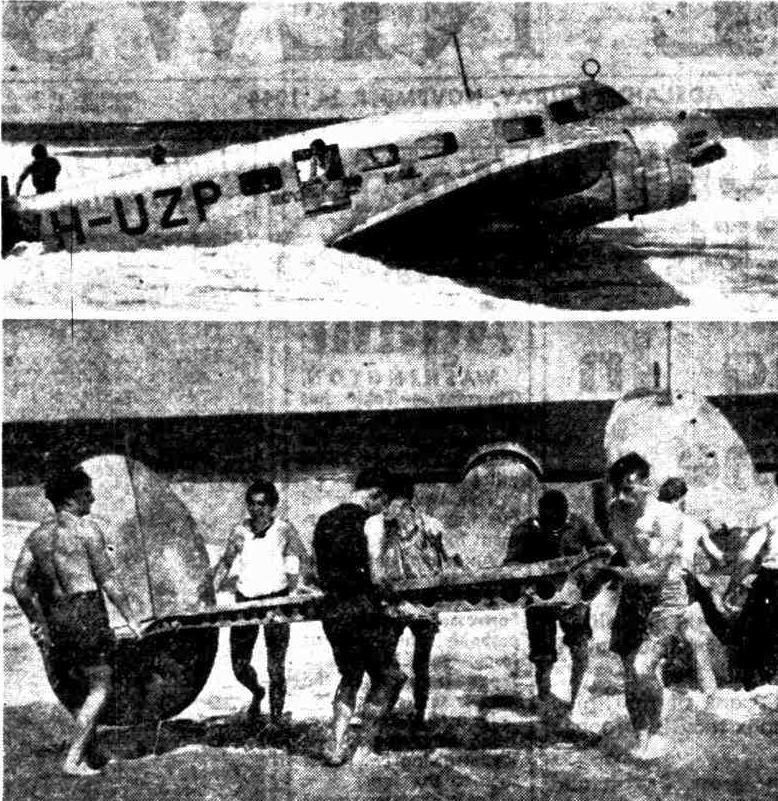
We will land them on the beaches
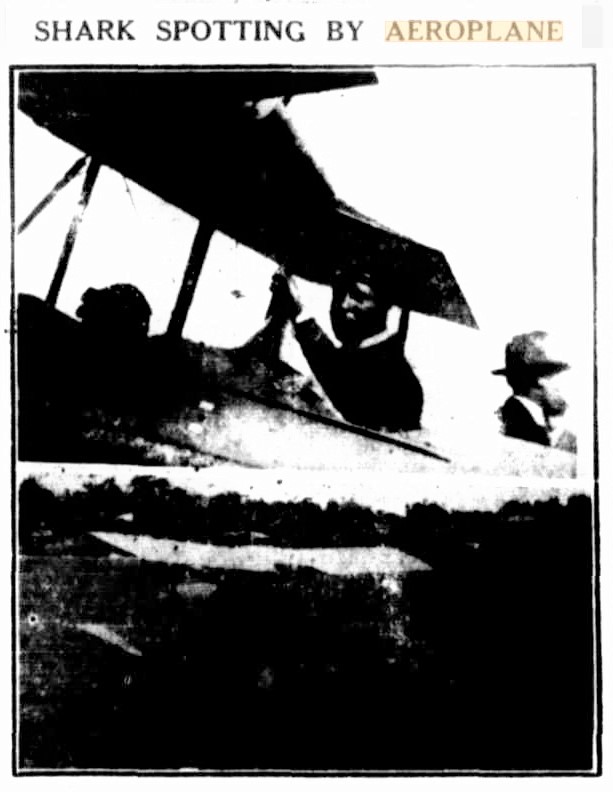
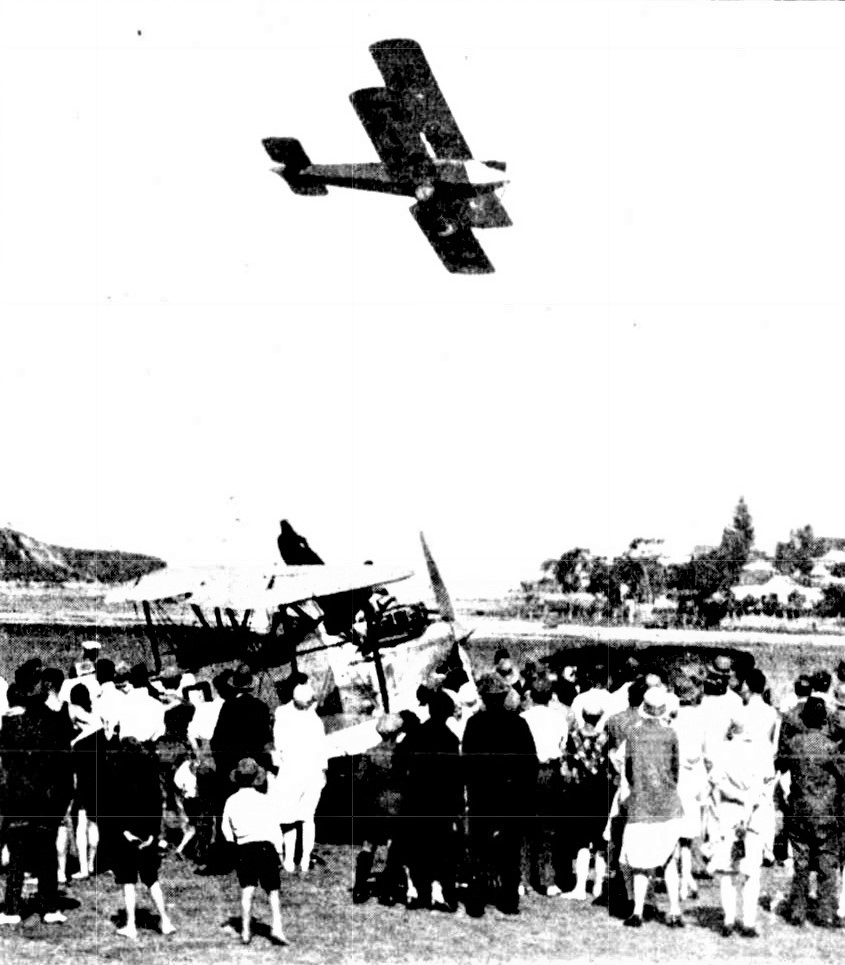
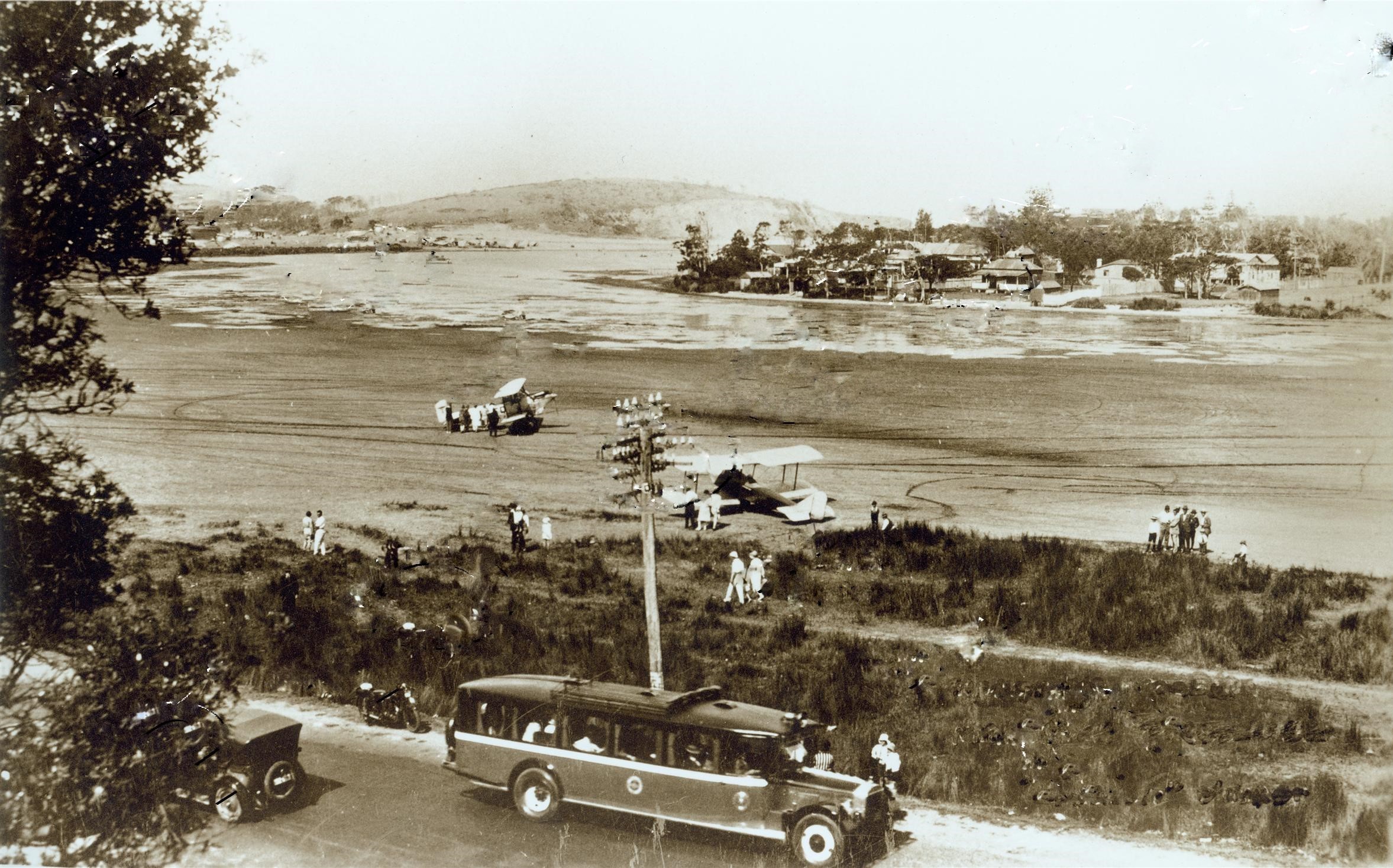
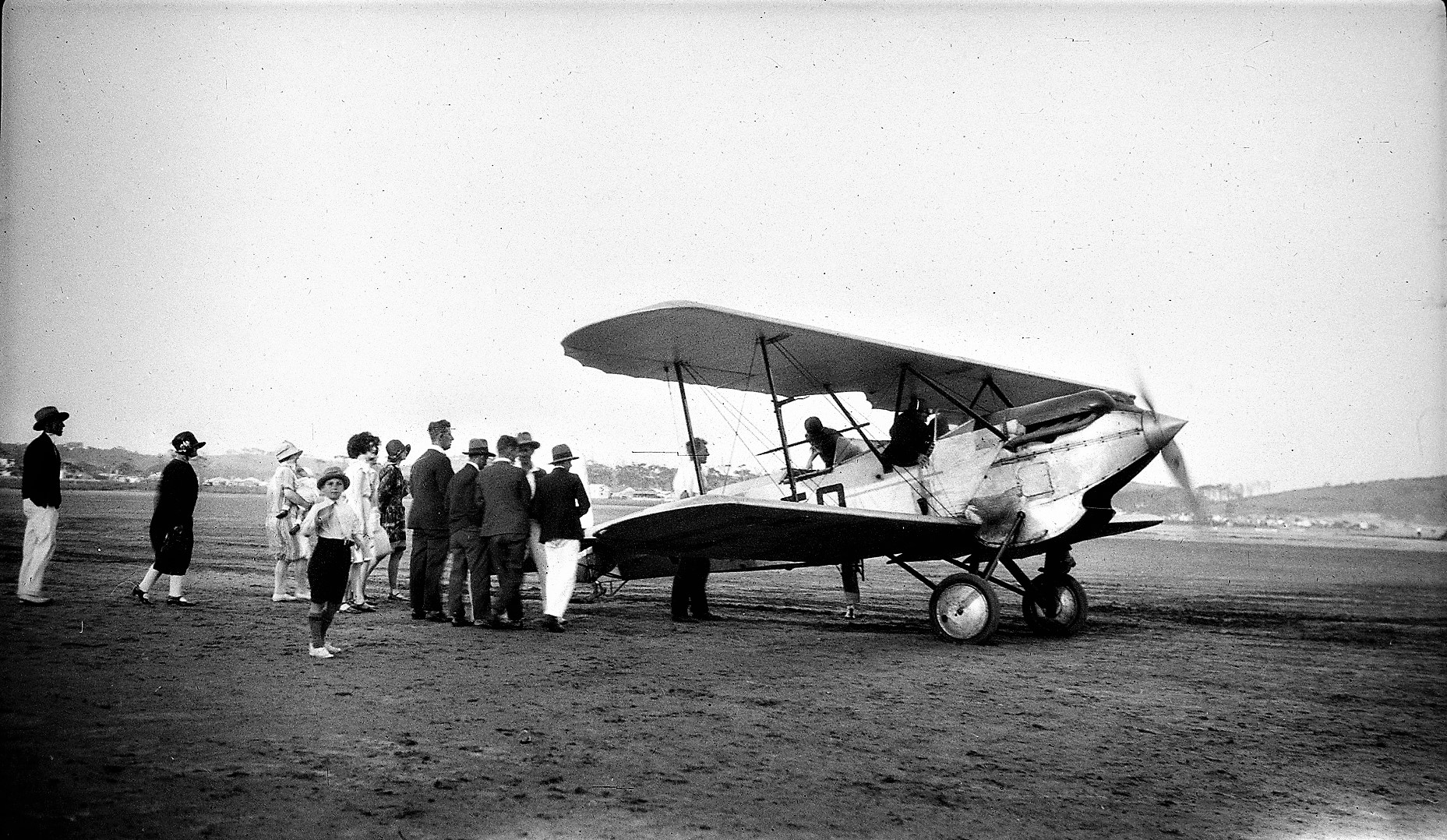
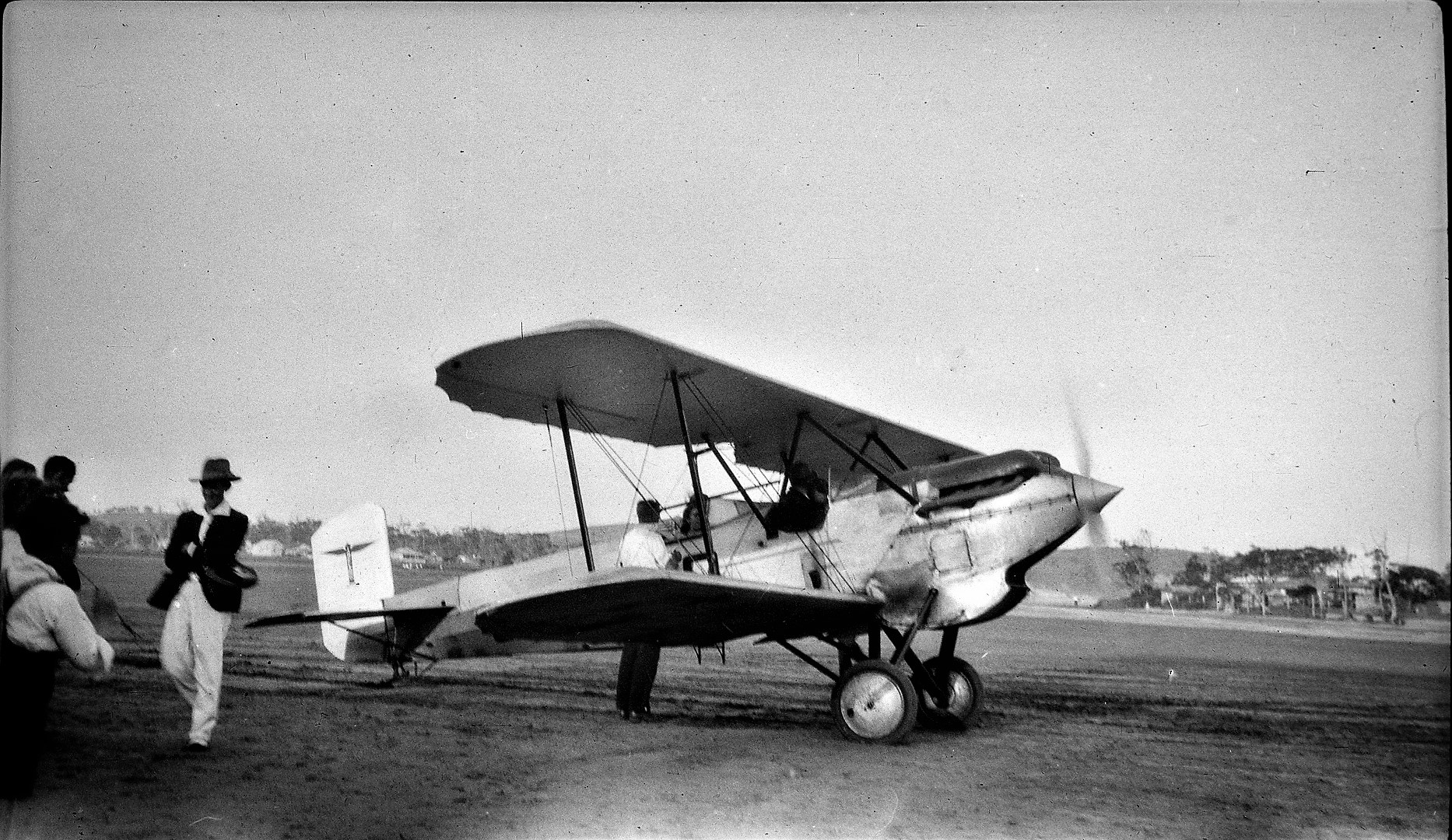
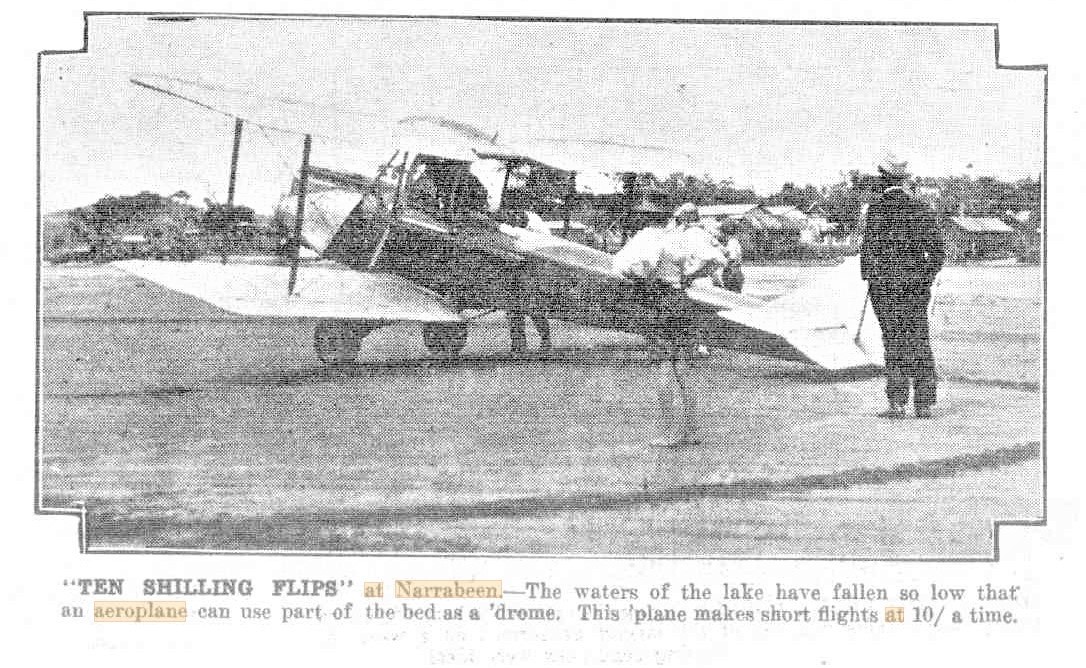
WILD DIVE INTO NARRABEEN LAKE CLOTHES ABLAZE air mechanic's escape
A sheet of flame to-day almost enveloped the mechanic of an aeroplane which regularly makes pleasure flights over Narrabeen. He was boiling soiled overalls In a kerosene tin when his clothes suddenly caught fire. The mechanic was severely burned about the lower part of the body, and he was removed, suffering Intense agony, to a doctor's surgery. The victim, Clarence Boyd, aged 26, who lives in Lagoon-street, Narrabeen, had placed the kerosene-tin, containing his overalls over a fire in the bush near the landing ground of the 'plane. The clothes he was wearing were stained with petrol and oil, and burned rapidly.'
The pilot of the 'plane (C. R. Gurney), ran to Boyd's assistance, but Boyd, driven to desperation by extreme pain, dashed for the lake and took a header into the water. Gurney then took Boyd to the surgery of Dr. Mclnnes, who treated the burns, and then ordered Boyd's removal to the Royal North Shore Hospital in the Manly Ambulance. Boyd was admitted Immediately. His condition this afternoon was reportod to be satisfactory. Three Shot and House Burnt in Shocking Tragedy Near Woy Woy (1929, August 22). The Sun (Sydney, NSW : 1910 - 1954), p. 13 (FINAL EXTRA). Retrieved from http://nla.gov.au/nla.news-article222951890
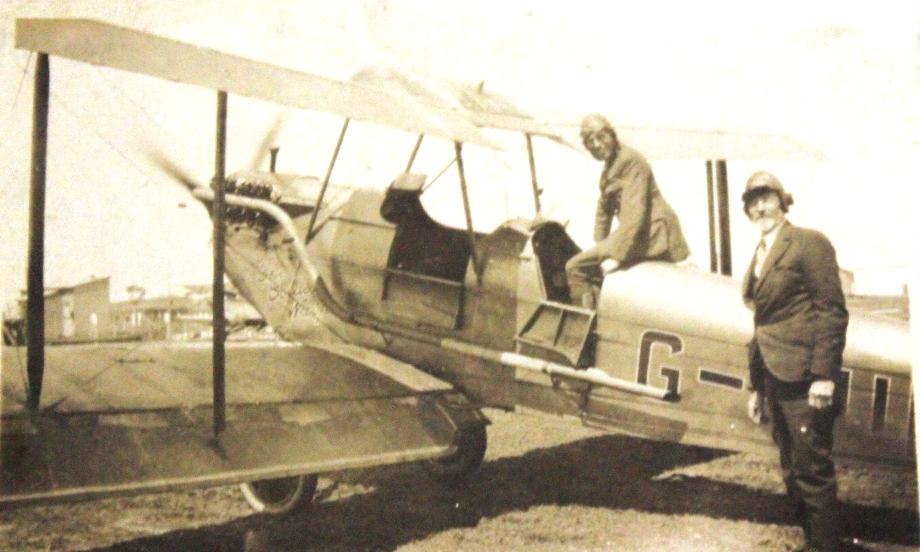
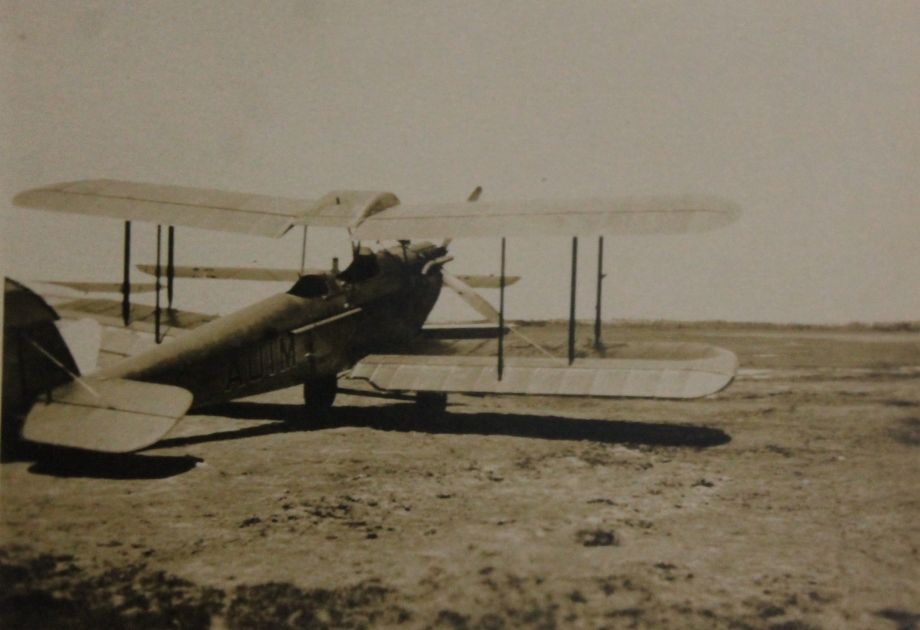
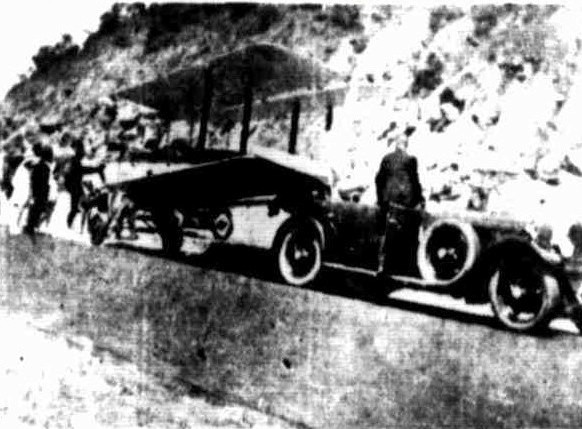
With the increasing popularity of the light aeroplane, this spectacle is likely to be seen more often on the highway: The picture shows Mr. W. Taylor' s plane being towed to Palm Beach after he had landed at Narrabeen, following a flight from Cootamundra. Hitched on to the back of the car, with its wings folded, the plane presented no difficulties in transport. A NEW VEHICLE ON THE ROADS. (1929, January 15).Evening News (Sydney, NSW : 1869 - 1931), p. 1. Retrieved from http://nla.gov.au/nla.news-article115697905
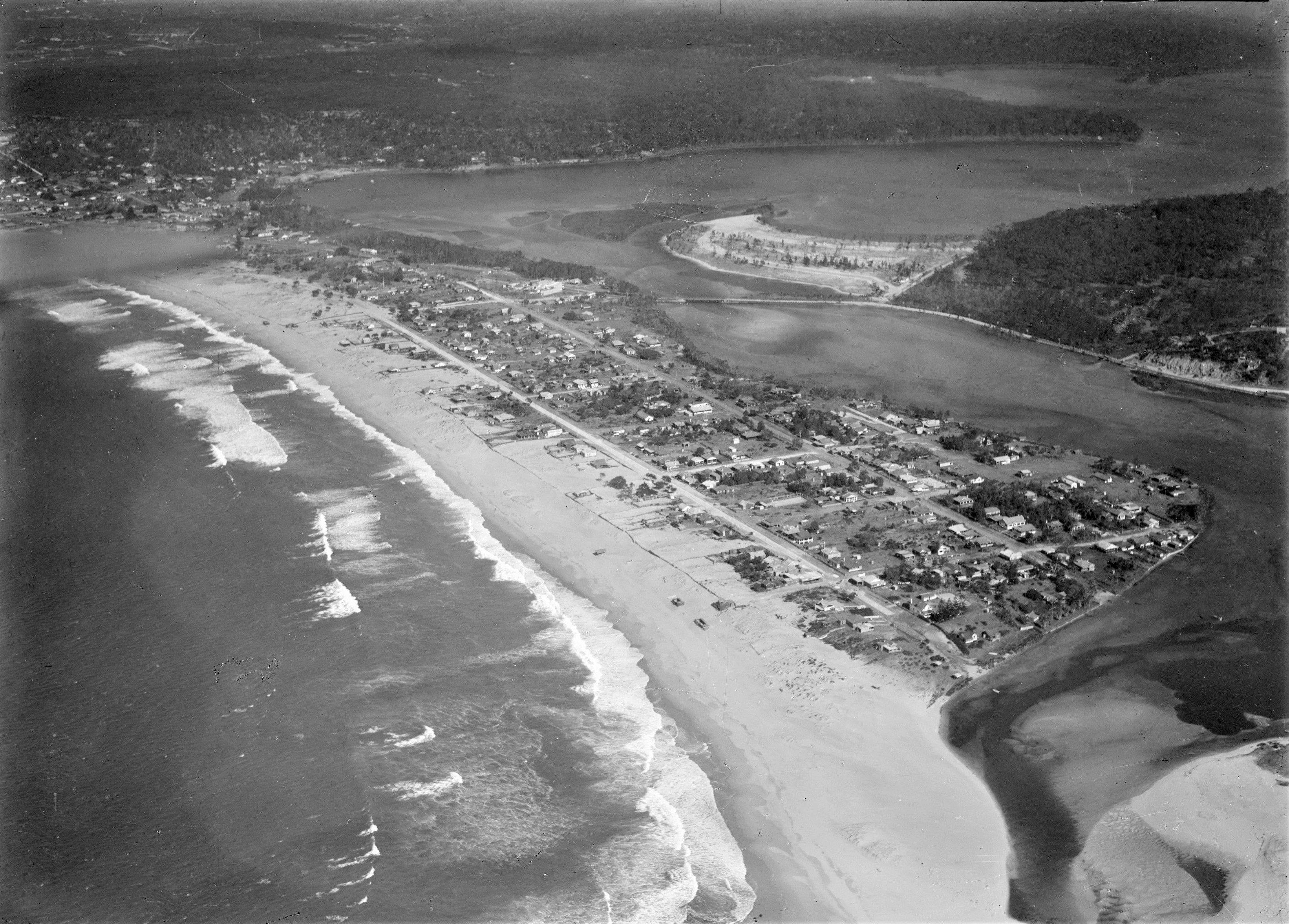
Narrabeen Lagoon aerial, from album Milton Kent aerial views of Bondi, Cronulla, Granville, Haberfield, Middle Harbour, Narrabeen, Mascot, Sydney, Sydney Harbour, Tempe, between 1926-1928, Item: c111660015, courtesy Mitchell Library, State Library of New South Wales - and sections from to show details; NB - no Bridge from Ocean street across Lagoon present, and old Nth. NSLSC still on beach - so pre-1927. Visit: Pittwater Roads II: Where The Streets Have Your Name - Narrabeen
Striking Aerial Views : Newcastle and Narrabeen

NARRABEEN, BETWEEN OCEAN AND LAKE. This fine strip of ocean beach runs from North Narrabeen through South Narrabeen to Collaroy (on the left). Narrabeen proper is situated on the peninsula in the centre of the picture. The main road from Manly to Newport, Avalon, and Palm Beach runs through the upper portion of Narrabeen, crossing the lake by the bridge, beyond which is seen a portion of low -lying land now being reclaimed. Striking Aerial Views : Newcastle and Narrabeen (1928, August 22). Sydney Mail (NSW : 1912 - 1938), p. 17. Retrieved from http://nla.gov.au/nla.news-article158401835
.jpg?timestamp=1615403587952)
A SECTION OF THE NEW ROAD FROM NARRABEEN TO NEWPORT.
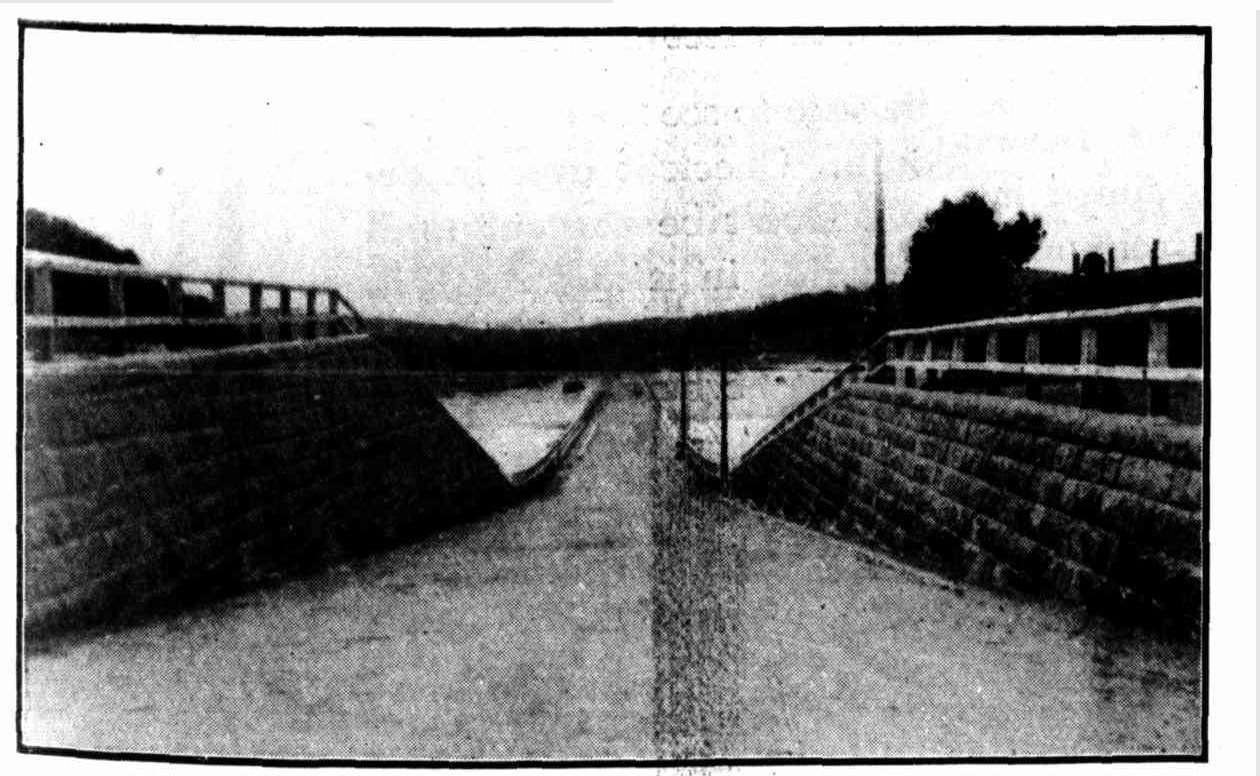
ANOTHER SECTION OF THE NARRABEEN-NEWPORT ROAD.
The trip from Sydney through Manly and Narrabeen to Newport and on to Palm Bead) is a very popular one. The scenery Is indescribably beautiful. A Good Road Performance (1928, November 14). Sydney Mail (NSW : 1912 - 1938), p. 47. Retrieved from http://nla.gov.au/nla.news-article158404160
NARROW ESCAPE
'Plane Falls into Lake
SYDNEY, Sunday. — A woman passenger and the pilot of an Avro Avian aeroplane, narrowly escaped death yesterday, when the machine struck the water at Narrabeen and capsized.
Hundreds of onlookers rushed to the scene, fearing those in the aeroplane were in danger of drowning, but there : was only 18 inches of water where the crash occurred, and the occupants soon scrambled out. The- pilot (Mr. Carter) had been giving flights over the lake. He received injuries to the face, and the woman, who refused to give her name, suffered minor injuries and shock. The propeller was broken, and the rudder and other parts damaged. NARROW ESCAPE (1930, January 6). Tweed Daily (Murwillumbah, NSW : 1914 - 1949), p. 3. Retrieved from http://nla.gov.au/nla.news-article193571809
The idea of a 'surf plane' was to be revisited a few years later when radio station 2UW paid for a plane and then increased this to two planes, one of which spent a night on Avalon Beach. Some insights from the pages of the past provides:
SURF PATROL 'PLANE CHRISTENED & READY FOR DUTY
THE christening of the special de Havilland Moth machine operated by Station 2UW to patrol Sydney beaches from Maroubra to Palm Beach was performed by Mr. Oswald Anderson at Mascot Aerodrome on Saturday afternoon prior to the 'plane's Inaugural flight. The machine Is fitted with dual transmitting and receiving radio and Is In constant communication with Station 2UW.
If the pilot, Mr. E. W. Collibee, sees a shark prowling near a beach he immediately flashes a message to 2UW, which passes the warning -on to the surf club concerned. During the whole of the time the 'plane Is on duty all surf clubs keep tuned in to 2UW. The machine, which is known as the "Surf Patrol 'Plane," also carries a supply of lifebelts, and In the event of the pilot sighting a bather In difficulties, he swoops down and drops' one to which the surfer can cling until he is rescued. SURF PATROL 'PLANE (1934, December 10). The Labor Daily (Sydney, NSW : 1924 - 1938), p. 4. Retrieved from http://nla.gov.au/nla.news-article236470851
Readers Say—
SURF PATROL PLANE
At a meeting of the Manly Council held on the 15th instant, Alderman Gourlay is reported to have stated that the Surf Patrol Plane was Increasing the alarm felt by surfers at Manly. Has this alderman been correctly reported? If so, I beg to differ from Alderman Gourlay. To my knowledge at least four life saving clubs have written to the firm which provides the Surf Patrol Plane, expressing unqualified appreciation of their efforts towards the protection of life on our ocean beaches. I am also informed that the members of the Surf Life Saving Association have given the project their support. If, at the close of the present surfing season, one can look back with satisfaction to the fact that no shark attack has been made on a surfer, then the surfing public will be greatly relieved. Surely, also, the sponsors of the Surf Patrol Plane will be able to derive some satisfaction from the fact that their patrol was perhaps instrumental in bringing about this very happy state of affairs.— E. P. CAHILL. Readers Say (1935, January 19). The Daily Telegraph (Sydney, NSW : 1931 - 1954), p. 6. Retrieved from http://nla.gov.au/nla.news-article246498096
A second surf plane is added in and a Queensland journalist vies for the same north of the border:
Aeroplanes to Combat the Shark Menace
Day with the Patrol on Sydney Beaches
By R. R. PERRY
The shocking tragedy at North Narrabeen (N.S.W.) beach last weekend, in which a surfer died as a result of frightful injuries by a shark, serves to call attention to the need for aeroplane patrols on all beaches where bathers congregate in sufficiently large numbers to make the introduction worth while in the interest of public safety. The success of the aeroplane patrol this summer on the more popular Sydney beaches — Coogee, Bondi, and Manly — has been so notable (notwithstanding one unfortunate crash) that the Surf Life Association of New South Wales has decided to add another aeroplane to the service.
SHOULD not Queensland surf life-saving clubs give the subject serious consideration? Already these clubs do notable service— often with little or no reward. Should they decide to shoulder this further responsibility there would be an immediate quickening of public interest. Finance should not present a difficulty; indeed, the several seaside municipal authorities could be asked to subscribe among them sufficient for a three or four months' service every summer. If this were done the sur! life savers could still be the responsible sources, of organisation, because the patrol would be of little value without the co-operation of these valuable organisations.
A New Outlook
As in the carriage of mails so in the patrol of beaches the aeroplane has brought with it a completely new outlook. For those who have not seen the aeroplane patrol at work it is as well to sketch briefly a typical scare at Bondi on a sunny summer week-end. Long, lazy breakers roll in to where countless hundreds of men and women and children forget the care of the week In the flying spray. Far out the seasoned surfers lie along their surf boards watching with experienced eye for the 'big Bertha' that will sweep to the edge of the burning sand. Sunbrowned, straight, slim young men are these. When properly settled on the crest of the roller they stand upright for the long, exhilarating shoot to shoreward. One expert, indeed, stands upright on his head on the flying board to the astonishment of visitors from all parts of Australia who have never seen such consummate artistry in the water.
The Foolhardy Few
Between these 'board-men' and the beach are others on the rubber floats, and always a foolhardy few who, lacking even the protection of a board' or a float, venture out far beyond a reasonable distance from the shore in such shark-infested waters. Beach patrol men and surf life savers keep vigilant watch for those who are In danger of drowning, and also {or the appearance of the dreaded fin of a cruising shark. But unless the fin cuts the surface of the water — which occurs only on rare occasions — the shark could be among the helpless bathers before being noticed from the beach. This., Indeed, has been a frequent occurrence. This is where the value of the aeroplane patrol comps in. Prom his position on high the aviator has no difficulty in seeing sharks through the water, which assumes transparent qualities from a height.
Struggle For the Shore
Having sighted a shark the pilot immediately drops an alarm rocket. The beach, inspectors ring the bell, and there is a wild struggle for the safety of the beach. But the aviator does not end his service here. He swoops to show precisely where the shark is cruising— often alarmingly close to scores of bathers, and between the sand and the foolhardy swimmers. The surf life savers go to the rescue of those in danger, risking life and limb in gallant efforts to get these ashore safely. Surf boats are run out with the consummate skill that only long experience can give, headed for the shark, and an attempt is made to harpoon the monster. Meantime the aviator keeps swooping down towards the shark, and If the harpooners fail literally drives it out to sea. Once more he circles on the lookout for other sharks, then drops a green ribbon to Indicate that all Is clear, and the bathers go back to the water.
Off To Another Beach
The aeroplane swoops away to a neighbouring beach, and the gallant work is repeated there. Day long the service goes on. And the surfers enjoy a feeling of safety, they had never known in years gone by. Perhaps the summer season is too far advanced for the introduction of such a system this year on the popular beaches near Brisbane. But it should becomes regular feature of the beach services from the beginning of next summer. The use of the type for a powered, 'lighter than all' craft known as the blimp would be an Improvement even on the aeroplane for this service, for it would enable a less speedy survey of the water. The aeroplane is here to stay; it has brought with it blessings that are only beginning to make themselves fully evident. Let us avail ourselves of these; let it not be said that Queensland lags a decade behind the sister States in those things that make life worth the living. Aeroplanes to Combat the Shark Menace (1935, March 10). Sunday Mail (Brisbane, Qld. : 1926 - 1954), p. 6. Retrieved from http://nla.gov.au/nla.news-article97841541
AEROPLANE IN SEA Mishap at Narrabeen FAILED TO TAKE OFF
SYDNEY, Sunday. The pilot and his observer had a narrow escape from serious injury to-day when an aeroplane nose-dived into several feet of water. Ernest Victor Collibee, the pilot, was in charge of a shark patrol machine, and had been in the air for more than two hours, when the engine overheated. He looked for a suitable place to land. In spite of the soft, bumpy sand, he was able to make a splendid landing at Narrabeen. An inspection revealed that a piece of the cowling had broken away. After the motor had cooled down, the pilot attempted to take off, but sand clung to the wheels, and the aeroplane failed to rise. An incoming wave struck the machine, and it nose-dived into a channel containing several feet of water. Beyond a ducking, the pilot and observer were none the worse for their experience. AEROPLANE IN SEA (1935, March 18). Newcastle Morning Herald and Miners' Advocate (NSW : 1876 - 1954), p. 7. Retrieved from http://nla.gov.au/nla.news-article136845521
And then he crashed again:
Aeroplane Crash At Harbord
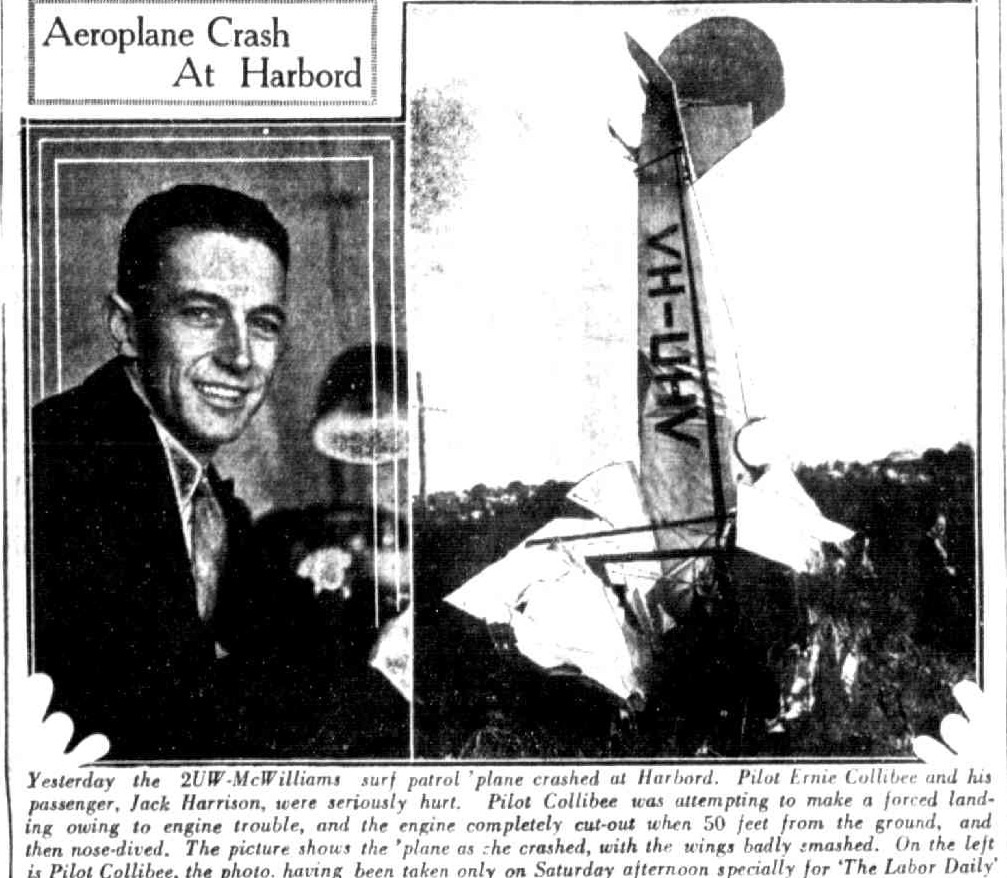
Yesterday the 2UW-McWilliams surf patrol 'plane crashed at Harbord. Pilot Ernie Collibee and his passenger. Jack Harrison, were seriously hurl. Pilot Collibee was attempting to make a forced landing owing to engine trouble, and the engine completely cut-out when 50 feet from the ground, and then nose-dived. The picture shows the 'plane as she crashed, with the wings badly smashed. On the left is Pilot Collibee, the photo, having been taken only on Saturday afternoon specially for 'The Labor Daily
BEACH 'PLANE CRASH; MEN BADLY HURT
INTO THE SCRUB AT HARBORD
SERIOUSLY injuring its two occupants, the pilot, Ernest V. Collibee, 30, of Hopetoun Avenue, Vaucluse, and a city advertising man, John Harrison, of Dudley Street, Rosebery, the 2UW.McWilllams beach patrol plane nose-dived-with terrific force into some undergrowth at Harbord at 11.30 a.m, yesterday. Rather' than endanger the lives of a number of children playing in Pfoeffer's Park, where he intended to make a forced landing owing to engine trouble, Collibee steered the 'plane away at the last moment. ' It narrowly- missed some telegraph wires and then crashed.'. A number of residents heard the impact. both' men had an extraordinary escape from death, the 'plane being totally 'wrecked. They were entangled in the wreckage.
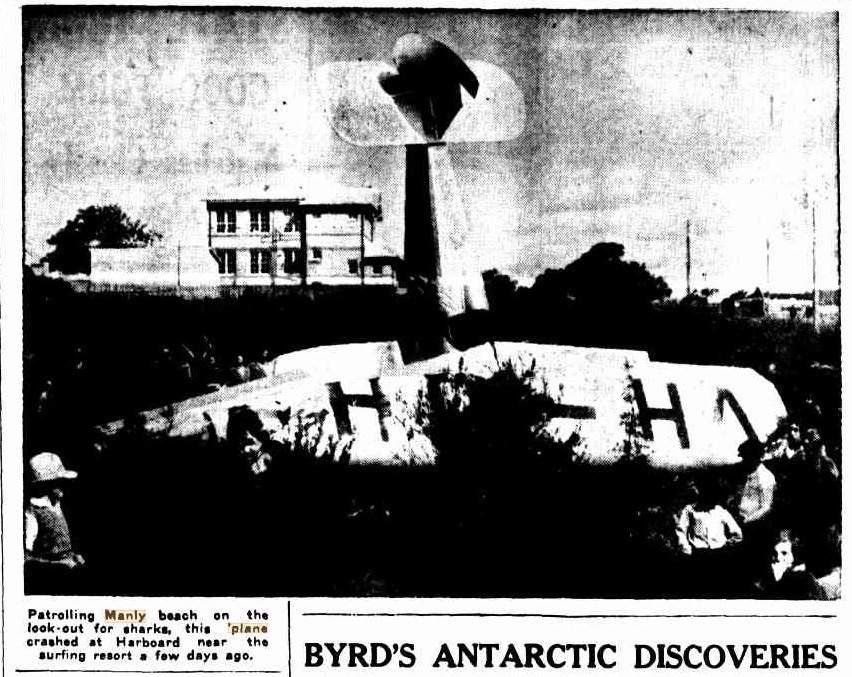
Collibee has a probable fracture of the skull, fractured ribs, probable Internal injuries, and a large wound on the top of his had. His companion had his left leg broken in several places, and incised wounds to his chin and right leg.
A crowd gathered quickly, and Constable Baxter of Manly, and Mr. Fennell, of Bennett Street, Harbord, extricated the airmen from twisted woodwork and steel. Despite their injuries, both men were conscious. Manly Ambulance was quickly on the scene.
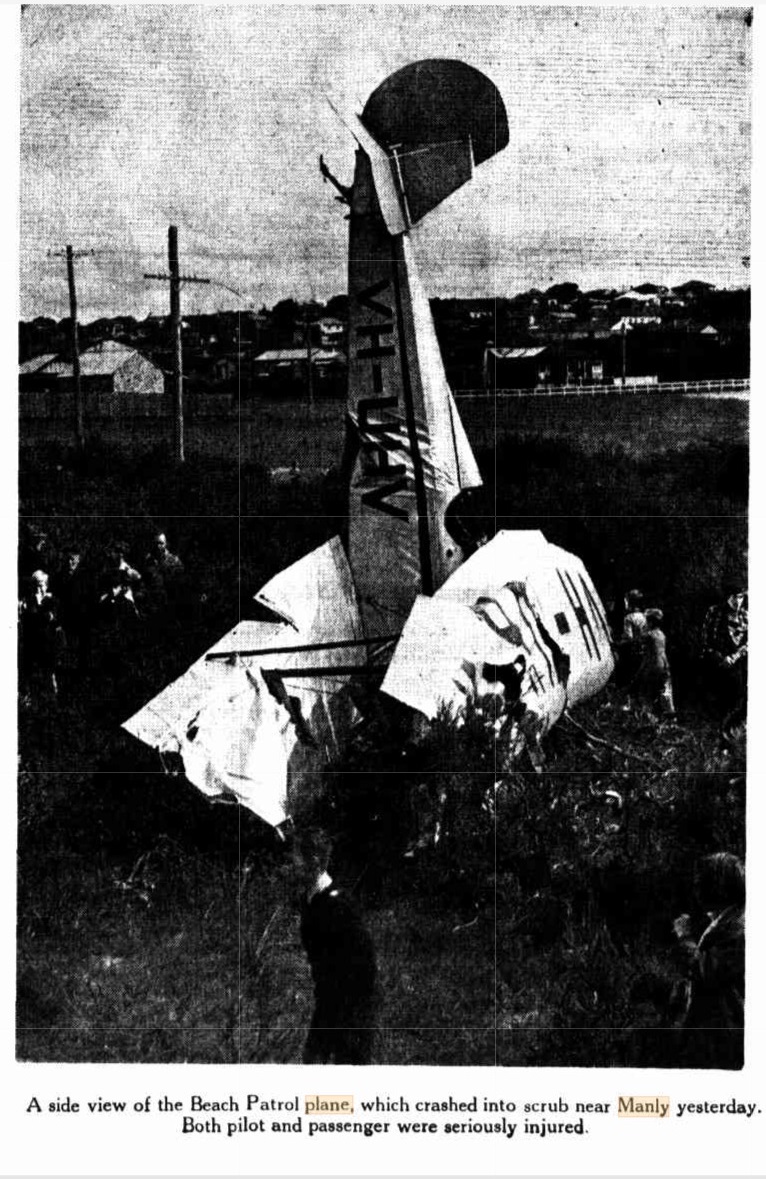
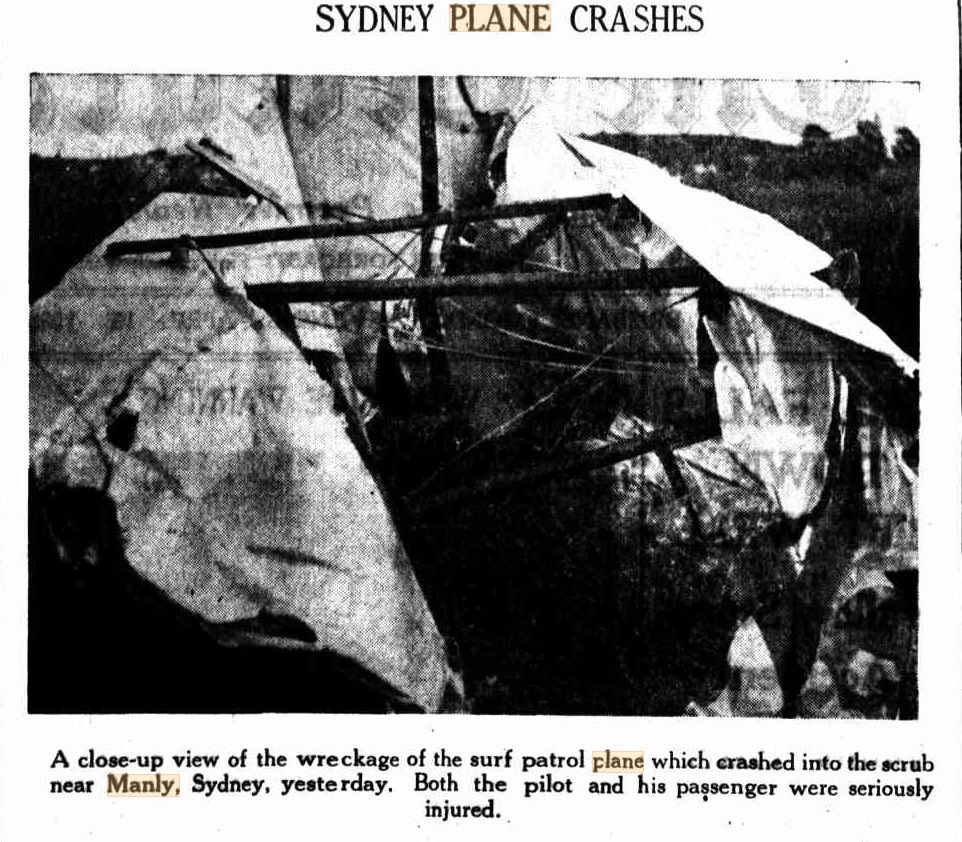
"I'm sorry, old man," Collibee, who was verging on unconsciousness, kept repeating, to Harrison; "So sorry that this had to happen,"
Somebody asked him what happened, but he was dazed and only shook his head. .
Beforo the injured men were taken to Manly Hospital, Harrison - said:
The first thing I know was when the earth came up to meet me,'?
Collibee's life is In danger, but Harrison's condition Is not considered to' he critical.
Harrison had gone up with Collibee to take some notes of the beach patrol. They had gone from beach to beach on the look-out for sharks.
Chose the Park .
They were flying at a normal altitude in the American Eagle two-seater when the engine spluttered. Collibee apparently picked out the park on which to make a forced landing. The engine was threatening to cut out at any second.
When about 100 feet up he noticed the youngsters frolicking in the park prior to this. People on the beach, seeing that the 'plane was in trouble, feared that the pilot would attempt
a landing there, and hastily left to give him room.
When 50 feet up the engine gave out and nose downward, the 'plane dived into the undergrowth.
The machine's nose buried itself in the ground, splintering the propeller. Both wings were broken off, and the fuselage and tail damaged.
Yesterday's flight was to have been the second last of the season.
During the week-end Collibee reported the presence of several sharks. A large grey-nurse came close in at Curl Curl.
Collibee made a successful forced landing on Narrabeen before on March 17, but, in attempting a takeoff, the machine crashed into the water. He was not injured. Aeroplane Crash At Harbord (1935, April 15). The Labor Daily (Sydney, NSW : 1924 - 1938), p. 1. Retrieved from http://nla.gov.au/nla.news-article236515241
PILOT COLLIBEE IMPROVING.
Ernest Collibee, 30, of Hopetoun-avenue, Vaucluse, who was seriously injured on Sunday when the aeroplane he was piloting crashed at Harbord, is steadily improving in the Manly District Hospital. Five of his ribs were fractured, and he is suffering from ex-tensive lacerations to his head. PILOT COLLIBEE IMPROVING. (1935, April 17). The Sydney Morning Herald (NSW : 1842 - 1954), p. 23. Retrieved from http://nla.gov.au/nla.news-article17152692
ERNEST COLLIBEE
LISTENERS who have learned to link the name of Mr. Ernest Collibee with the McWilliams-2UW surf patrol 'plane will be pleased to hear that he has now quite recovered from his recent accident and will b: heard over the 2UW microphone' as from June 10. Three weeks spent at South west Rocks has enabled Ern. to quite recover his usual form and he Is returning to the 2UW microphone full of enthusiasm. His many listener friends will no doubt be eager to congratulate him on his very lucky escape. ERNEST COLLIBEE (1935, June 9). Truth (Sydney, NSW : 1894 - 1954), p. 12. Retrieved from http://nla.gov.au/nla.news-article169340708
'PLANES LANDED ON BEACHES
BOTH ESCAPED DAMAGE AT AVALON, CRONULLA
Two aeroplanes landed on beaches yesterday afternoon. When engine trouble developed over Avalon, the surf patrol 'plane was put down on the sand. The wheels sank, but no damage was done. The 'plane remained overnight.
The other 'plane landed, undamaged, on the beach at North Cronulla, where Mr. Paul Bowie, the pilot, lives. 'PLANES LANDED ON BEACHES (1937, January 17). The Sun (Sydney, NSW : 1910 - 1954), p. 2 (NEWS SECTION). Retrieved from http://nla.gov.au/nla.news-article230797192
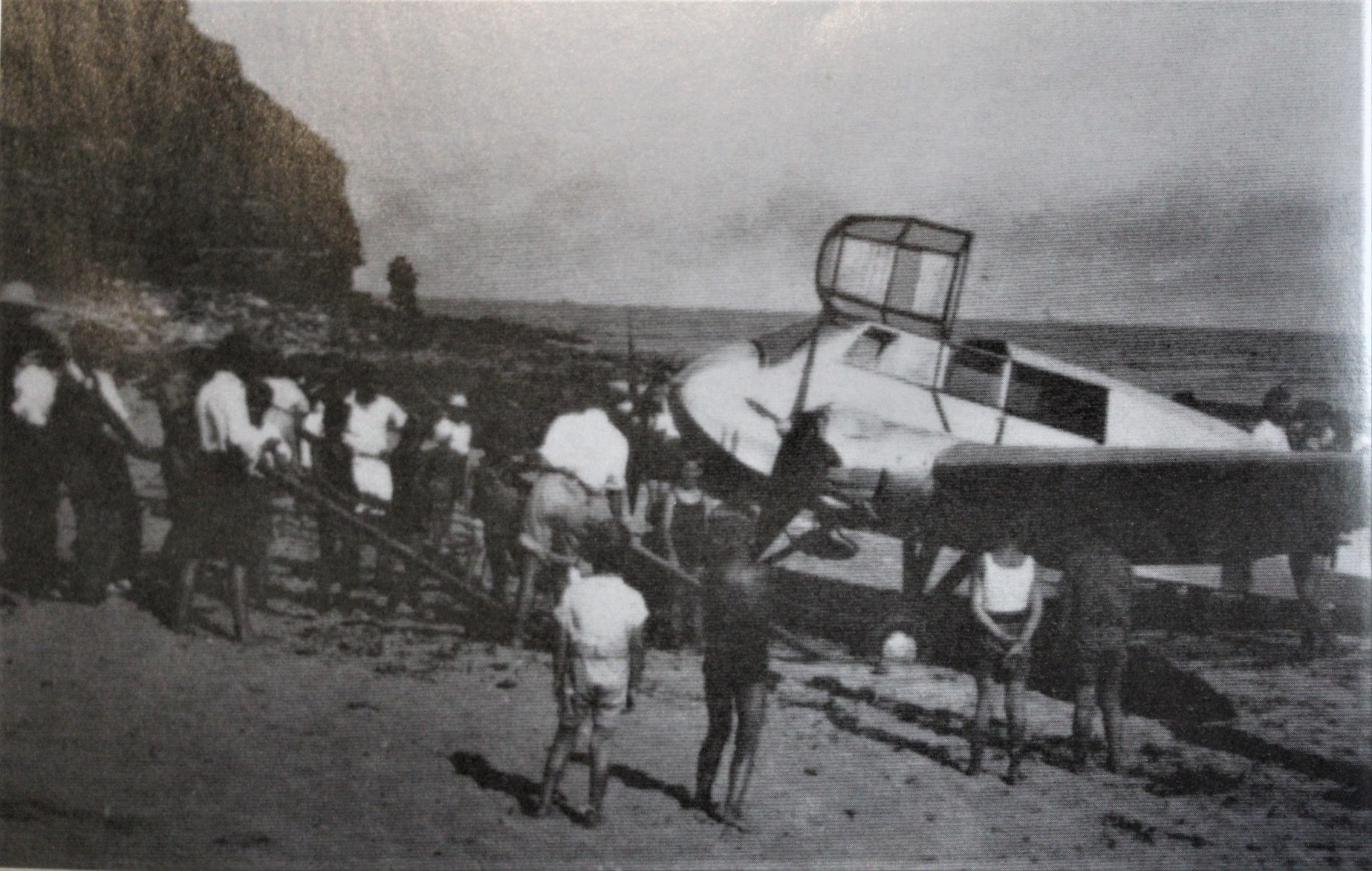
Plane on North Avalon Beach, January 1937, photo courtesy Avalon Beach Historical Society
SURF PATROL 'PLANE.
Government Refuses Subsidy.
A letter received by the Surf Life-saving Association from the Minister for Local Government Mr. Spooner stated that the Government, having devoted £20.000 to the cost of meshing for sharks, considered that this would ensure the safety of surf bathers. The request for a subsidy for the aeroplane safety patrol, therefore, could not be acceded to. The annual meeting of the association will be held next Tuesday night at the association's head-quarters, Phillip House, Phillip Street. SURF PATROL 'PLANE. (1937, October 13). The Sydney Morning Herald (NSW : 1842 - 1954), p. 21. Retrieved from http://nla.gov.au/nla.news-article17416101
Ernest Victor Collibee was born November 12th 1904 in Singleton, New South Wales. He would continue to fly planes into the 1930's, not without incident:
PILOT TO PAY
Plane Damaged in Landing
SYDNEY, Tuesday.
The Kingsford Smith Air Services Ltd. was to-day awarded £400, the full amount claimed against Ernest Victor Collibee, air pilot. The plaintiff company alleged that Collibee had been negligent in the control of an aeroplane he had hired from the company. The plane made a forced landing at Catherine Hill Bay. It was badly damaged. Collibee obtained a stay of proceedings PILOT TO PAY (1939, May 3). The Canberra Times (ACT : 1926 - 1995), p. 4. Retrieved from http://nla.gov.au/nla.news-article2499115
At the end of the peninsula, Palm Beach, with its long stretch of sand, has had her plane visitations as well, commencing with when it too was a place to take off for joy flights and extending into when people would just 'drop in' to visit friends:
Some of those early 'plane mishaps at Palm Beach:
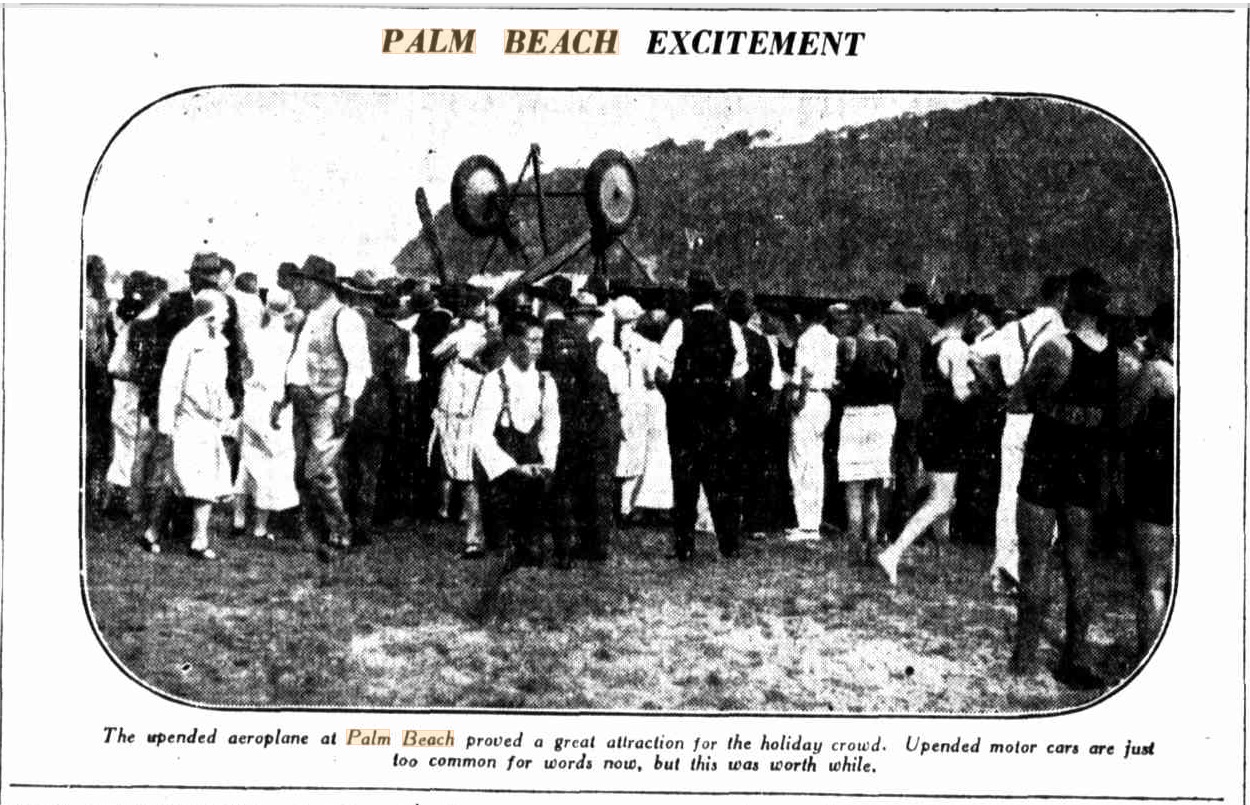
Upended plane at Palm Beach PALM BEACH EXCITEMENT (1926, February 15). The Sun (Sydney, NSW : 1910 - 1954), p. 10 (FINAL EXTRA). Retrieved from http://nla.gov.au/nla.news-article224060139
PLANE NOSE DIVES.
On Palm Beach.
OCCUPANTS' LUCKY ESCAPE.
As it was about to land, an aeroplane, in which Captain E. W. Percival was conducting passenger flights at Palm Beach yesterday, nosedived into the sand. The pilot and two lady passengers escaped injury. Damage to the machine was estimated at several hundreds of pounds.
Captain Percival was about to taxi along this stretch on the completion of a flight when a boy ran across the path of the 'plane. The pilot skilfully raised the machine, and flew well clear of the boy's head.
Just as the 'plane made a re-descent it struck loose sand, into which the nose dipped, throwing the body of the machine almost upright.
Captain Percival drew himself clear and assisted the ladies to alight. No sooner were they free than the 'plane toppled over. 'PLANE NOSEDIVES. (1926, February 15). The Sydney Morning Herald (NSW : 1842 - 1954), p. 11. Retrieved from http://nla.gov.au/nla.news-article16273960
Passenger plane mishap at Palm Beach.
SYDNEY, Monday,
An aeroplane in which Captain Percival was conducting passenger flights at Palm Beach yesterday afternoon, nosedived into the sand. The pilot and two lady passengers escaped injury, but the damage to the machine will cost several hundred pounds to repair. The mishap was due to Captain Percival trying to avoid a boy who .ran across the path of the plane as it was about to rise. PASSENGER PLANE (1926, February 16). Daily Examiner (Grafton, NSW : 1915 - 1954), p. 5. Retrieved from http://nla.gov.au/nla.news-article195638552
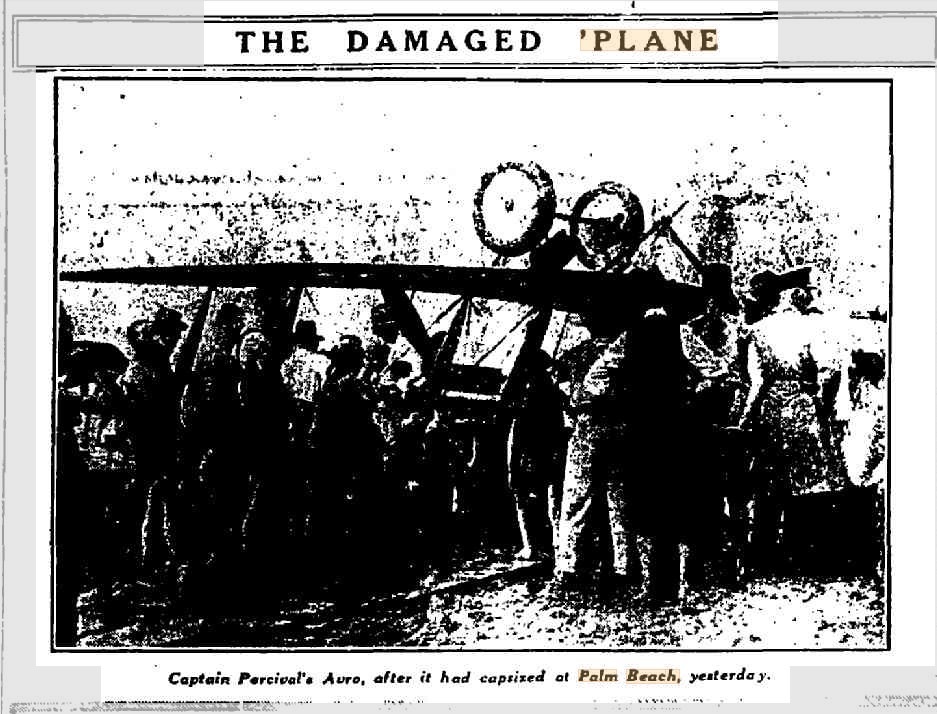
THE DAMAGED 'PLANE (1926, February 15). Evening News (Sydney, NSW : 1869 - 1931), p. 1. Retrieved from http://nla.gov.au/nla.news-article126139317
Captain Percival frequented Palm Beach prior to this:
WEDDINGS
BROWN— PERCIVAL
At, St. Stephen's Church, Phillip-street, Sydney, on Wednesday night, 28th January, the wedding was celebrated of Miss Elma Percival, second daughter of Mr. and Mrs. W. Percival of Richmond, and Mr. Henry Stratton Brown, of Kuala Lumpur, Malay States.
A beautiful sheath gown of white crepe romain, over silver lace was worn by the bride. Her long court train was of white crepe romain, shirred and mounted on pink, and her tulle veil was worn with a Russian coronet of silver and orange blossoms. Miss Madge Maze, in a frock of mauve over silver, and Miss Essie Hart, wearing beaded orchid pink georgette, were the bridesmaids. Both wore tulle caps to match their frocks, and carried sheafs of pink la France roses.
The trainbearer was Miss Bebe Percival, in pale pink. The best man was the bride's brother, Captain E. W. Percival, the well-known airman, and Mr. George Bryant was the groomsman. The reception was held at the Ambassadors, Mrs. Percival receiving the guests in a gown of black georgette beaded in steel and a black hat with an aigrette.
At the reception were: Mrs. G. Salisbury Eskdale, Mrs. John Newton, Rev. and Mrs. Milne, Mr. Philip Percival, Mr. Campbell, Mr. Robert Percival, Mr. F. A. Macarthur Onslow, Mr. and Mrs.Paterson, Miss Paterson, Mrs. Maze, Mrs. Sedgebeer, Mrs. Roberts, Mrs Poskett, Mr and Mrs. Ferguson, Miss Ferguson, Miss Margot Onslow, Mr. and Mrs. Vale Wikner.Miss Lilla Jones, Mrs Knight, Miss Maxwell Mr. and Mrs. Carr, Mr. John Bryant, Miss M. Carr, Miss Betty Carr, Mrs. W. Hart, Mr. B. Hart, Mrs. Folkard, and Miss Gwen Folkard.
AN AERIAL HONEYMOON
With less fuss than a couple embarking on the Melbourne express or an interstate steamer, or even a suburban motor bus, Mr. Harry Stratton Brown and his bride set out on their aerial honeymoon from Mascot.
"Looks a bit bumpy," said a gloomy aerial authority, as Captain E. W. Percival's ma-chine was swung out of the hangar shiver-ing in the wind.
The bridegroom grinned.
The bride smiled.
What did it matter to them? He had flown dozens of times before, and so had she. In fact she had piloted machines before this, and had proved capable of handling the trickiest of them in the dirtiest of weather. The explanation was that the bride was Elma Percival, a sister of Captain Edgar Percival, the crack Australian pilot.
"This flying's a family affair," her mother explained. "We're all fliers, Elma particularly. She's, a good pilot and a wonderful mechanic."
Only a dozen friends clustered around the machine as the pilot, Captain Percival, and the young couple climbed in. There were hurried handshakes, and, then the 'prop.' was swung, and the 'plane roared into the wind, climbed round the 'drome and dis-appeared over the city, heading for Palm Beach. It might have been the aerial mail taking off, it might have been an official machine 'feeling' the air. It might have been any-thing but the start of an aerial honeymoon — for there was no fuss, no excitement, no anxiety.
The honeymoon at Palm Beach will not be a long one, because in a few days the couple will leave for the Malay States. Mr. Brown has just finished a course at the Hawkesbury Agricultural College — he is only 21— and is taking his bride to the rubber plantations, where his people live. He intends to start dairying — in the Malay States almost a new industry. WEDDINGS (1925, February 13). Windsor and Richmond Gazette (NSW : 1888 - 1961), p. 11. Retrieved from http://nla.gov.au/nla.news-article85902668
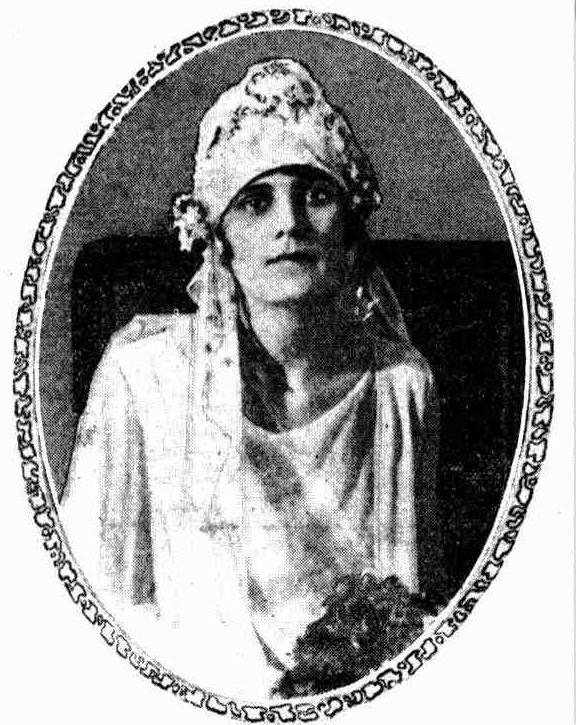
Edgar Wikner Percival (February 23 1897 – January 21 1984) was a noted Australian aircraft designer and pilot whose aircraft were distinguished by speed and grace. Percival went on to set up the Percival Aircraft Company, a British aircraft company in his own name. Percival was born in 1897 at Albury, New South Wales, the son of Blanche Hilda Leontina Percival, née Wikner and William Percival, a butter manufacturer. Edgar Percival's maternal great uncle was the Swedish philosopher Pontus Wikner.
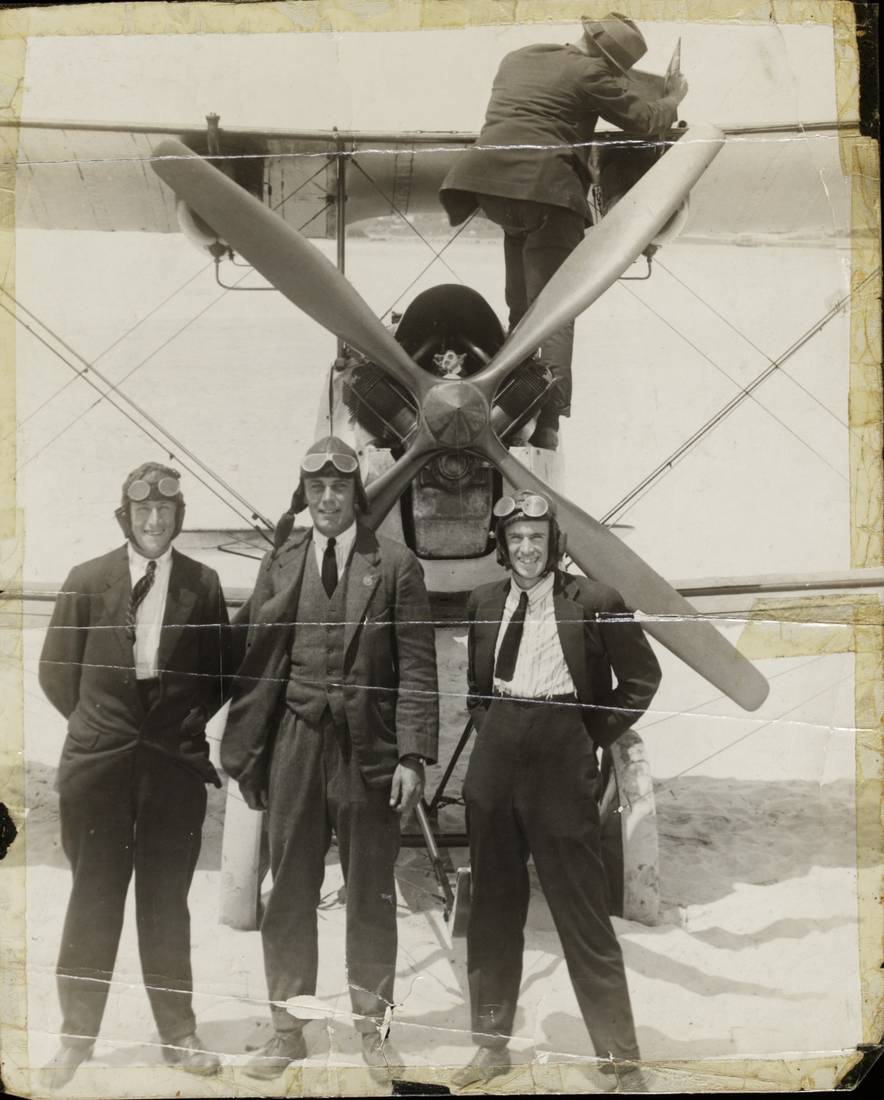
A black and white photograph of four men and a bi-plane on a beach. Edgar Percival is identified standing in between two men in front of the aircraft propeller, with a third man above the propeller pouring fuel into the tank in the top wing. Label attached to back of photograph with inscription: "Commercial Flying in the 1920s Australia. EWP between two assistants". Courtesy National Museum of Australia (NMA), Item: nma.img-ci20051391-049-wm-vs1_o3_1100
The Dr Robert C Percival collection consists of hundreds of objects recording the career of Edgar W Percival and his aircraft manufacturing companies, between 1897 and 1984. Items include material from Percival's military service in the AIF and RFC from 1915 to 1918; photographs, flying helmet and gloves from his commercial flying activities in Australia during the 1920s; photographs and documents recording his design and manufacturing work with Percival Aircraft Company in England during the 1930s and 1940s; trophies, certificates and medals awarded to Percival; travel documents, photographs and correspondence related to Percival's aircraft design and manufacturing work during the 1950s and 1960s; and documents and audio recordings made by Edgar Percival and his younger brother Robert Percival documenting the achievements and life story of Percival's aviation career.
Edgar Wikner Percival was inventive and mechanically minded from an early age, working with his father, William Percival, on their property, Clarendon Park, at Richmond, New South Wales. As a child Percival assisted at his family's farm, on the flats of the Hawkesbury River at Richmond, New South Wales. He became fascinated by aviation, especially after seeing an aeroplane for the first time in 1911, when local dental surgeon and pioneer aviator and the first qualified pilot in Australia, William Ewart Hart, landed on the council field in Richmond, near the Percival property. After helping to maintain Hart's aircraft, Percival received, as a reward, his first flight. By 1912, when he was 14, Percival had designed, produced and flown his own gliders. He attended Fort Street High School, in Sydney. Percival left school at the age of 15, to become an apprentice engineer at a Sydney firm. He later enrolled at Sydney Technical College, before undertaking a short course in aeronautical engineering at Sydney University.
While Percival studied engineering at Sydney Technical College and was apprentice to a marine engineering firm in Sydney, he was able to watch and fly with William (Bill) Hart, when he moved his aviation school operations from Penrith to Ham Common, now Richmond Aerodrome, a short distance from Clarendon Park.
In 1915, Percival joined the AIF, lying about his age to pursue a commission with the Royal Flying Corps. He volunteered for overseas service with the Australian Imperial Force, as a Private with the 7th Light Horse Regiment. After being promoted to temporary Sergeant, he embarked in April 1916 for Palestine. Percival requested a transfer from the AIF to pilot training with the British Royal Flying Corps (RFC), and was accepted in November 1916. After going solo in 20 minutes in 1917, Percival was assigned to No. 60 Squadron, a scout (fighter) unit in France, commanded by the Canadian ace Billy Bishop. Percival was noted for his flying skills and after he was promoted to Captain, transferred to No. 111 Squadron as one of its founding members. With 111 Sqn he saw service in the Middle East and Greece. In 1918, while serving in Egypt, Percival designed his first powered aircraft, "a special-purpose aircraft based on the Bristol F.2B, with the Rolls-Royce Eagle engine". In August 1919 he was elected as a member of the Royal Aero Club. Following the First World War, Percival returned to Australia with three surplus aircraft, two Avro 504s and a de Havilland DH.6 aircraft to do film work, stunt flying and barnstorming plus charter flights, operating his own charter company. A number of notable flights occurred: in 1921, he surveyed the Melbourne-Brisbane route in an Avro 504, in 1923, he won the Melbourne to Geelong Race. He undertook a variety of commercial flying activities, including aerial photography, map-making, geological surveying, joyflights and advertising.
In 1929, Percival travelled to England hoping to sell one of his aircraft designs to an English manufacturer, but without success. Instead, Percival founded his own company, Percival Aircraft Company, to design and manufacture Great Britain?s first low-wing cantilevered monoplane, the Gull. Percival won many competitions and awards flying his own aircraft, and the Gulls quickly established a reputation for high performance, attracting the era's most daring pilots.
The Tweed Regional Museum states that Captain Percival also made flights north during the Summer months and here, once more, the local surf club benefitted:
Each year he headed north, and did a brisk trade taking some of the thousands of holiday makers in the Twin Towns on joy flights over the town. On arrival over Greenmount, Percival would make a low pass over the beach to signal his intention to land and as the crowd dispersed he would land and taxi his aircraft to a position right against the hill. He had an arrangement with the Greenmount Surf Club who canvassed the customers and sold tickets, whereby they were given a percentage of the take for their club funds. A joy flight varied in price but mostly cost one pound ($2) or ten shillings ($1).
Percival also had contracts with Brisbane and local business houses to distribute advertising material from the air. It was a fantastic sight to see these thousands of leaflets falling from the air and the crowds rushing from the surf and chasing all over the beach to retrieve one. Certain leaflets contained lucky numbers or a free flight pass.
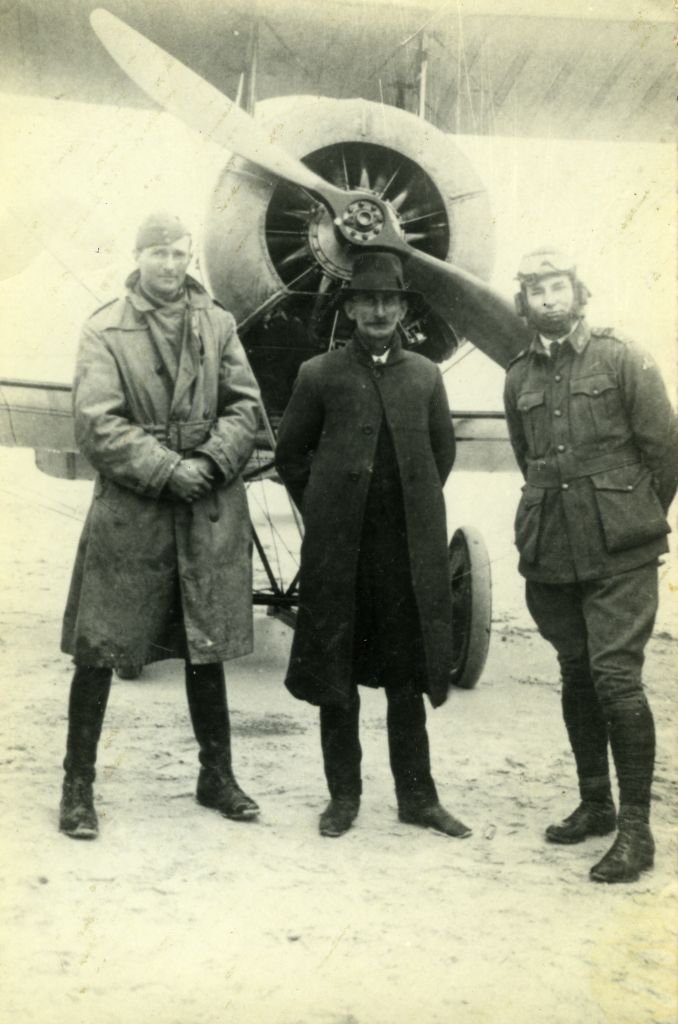
Captain Percival with his plane on Kirra Beach with Mayor R. G. Johnston circa 1920. courtesy Tweed Regional Museum Collection. Item: TH202.31
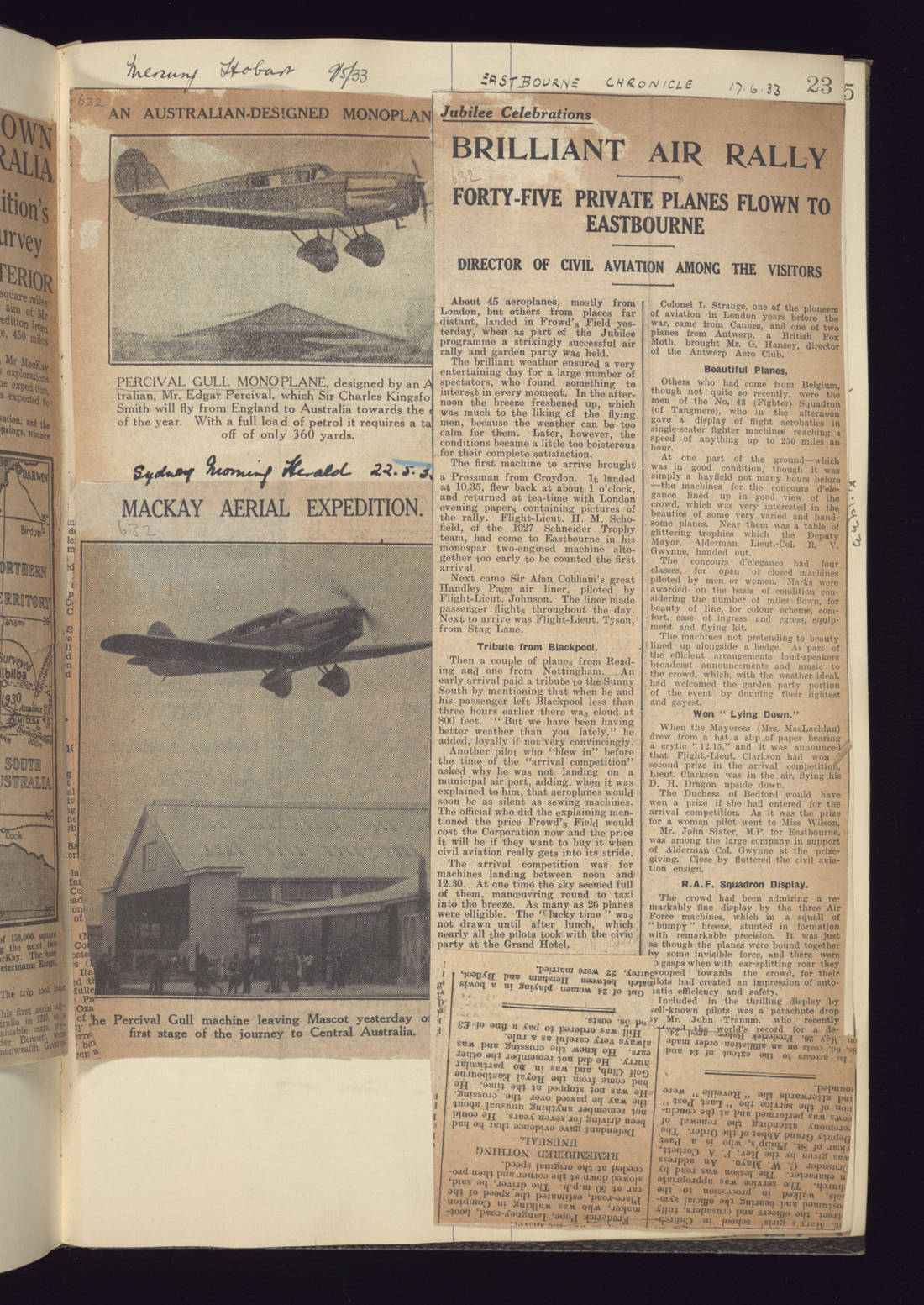
Percival Gull clippings - 1933, courtesy National Museum of Australia
More under Extras - More planes landing on Palm Beach:
'PLANE DAMAGED
LANDING AT PALM BEACH
An aeroplane named Miss Australia was damaged after landing at Palm Beach shortly after noon to-day. The owner and pilot, Reginald Annabel, of Rockdale, was uninjured. The 'plane left Mascot at noon for Palm Beach, where Mr. Annabel had arranged to have lunch with friends. When It touched the beach Its nose dropped, and the propeller was smashed. Mr. Annabel sent to Sydney for another propeller, and said he would fly home if he received It this afternoon.
Another Accident
While on their way to Palm Beach with a spare propeller for the damaged 'plane, three men from Mascot Aerodrome were thrown out of a car when It turned over on the Pittwater-road, Mona Vale, about 3.30 this afternoon. James McKeahnie, aged 22, air pilot, of Livingstone-road, Burwood, received a fractured left arm and abrasions to the body. Norman Lennon, aged 24, air-pilot, of Gardiner's-road, Daceyville, and Ronald Smith, aged 25, mechanic, of Albion-street, city, were slightly Injured. McKeahnie was taken by the Manly Ambulance to a private hospital at Homebush. The car was righted, and driven to Palm Beach. 'PLANE DAMAGED (1931, March 19). The Sun (Sydney, NSW : 1910 - 1954), p. 13 (FINAL EXTRA). Retrieved from http://nla.gov.au/nla.news-article224668576
Reginald Annabel was known as a daredevil. Born July 14, 1902, a dairyman, he gained his pilots licence in 1929 at the age of 26. He built his own plane at his workshop at James Street, Brighton-le-Sands, a Gipsy Moth he christened "Spirit of Fun Junior" and which he flew at many country airshows.
A year after he gained his pilot's licence, in 1930 he flew a then rare round-Australia flight covering 9,000 miles in 17 days. His plane for that trip Reg was the same Miss Australia he would later land on Palm Beach. He was accompanied by two other Gipsy Moths, Miss Cronulla piloted by Ken Wedgwood and The Gay Caballero piloted by Frank Bardsley.
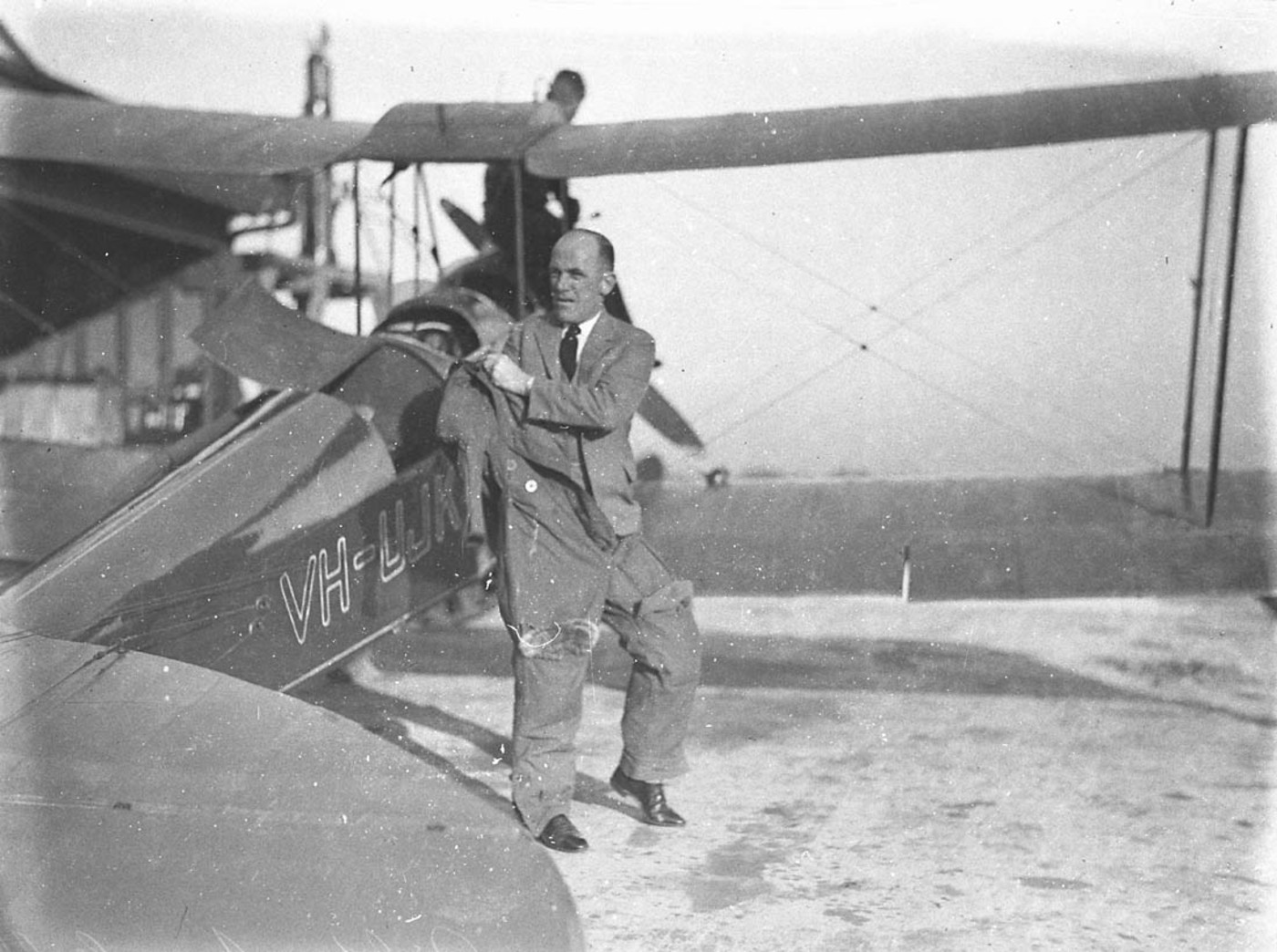
Air Pageant at Hargrave Park; Reginald Arthur Annabel arrives in his DH Gypsy Moth 'Miss Australia', Item: hood_04957h, courtesy the State Library of New South Wales.
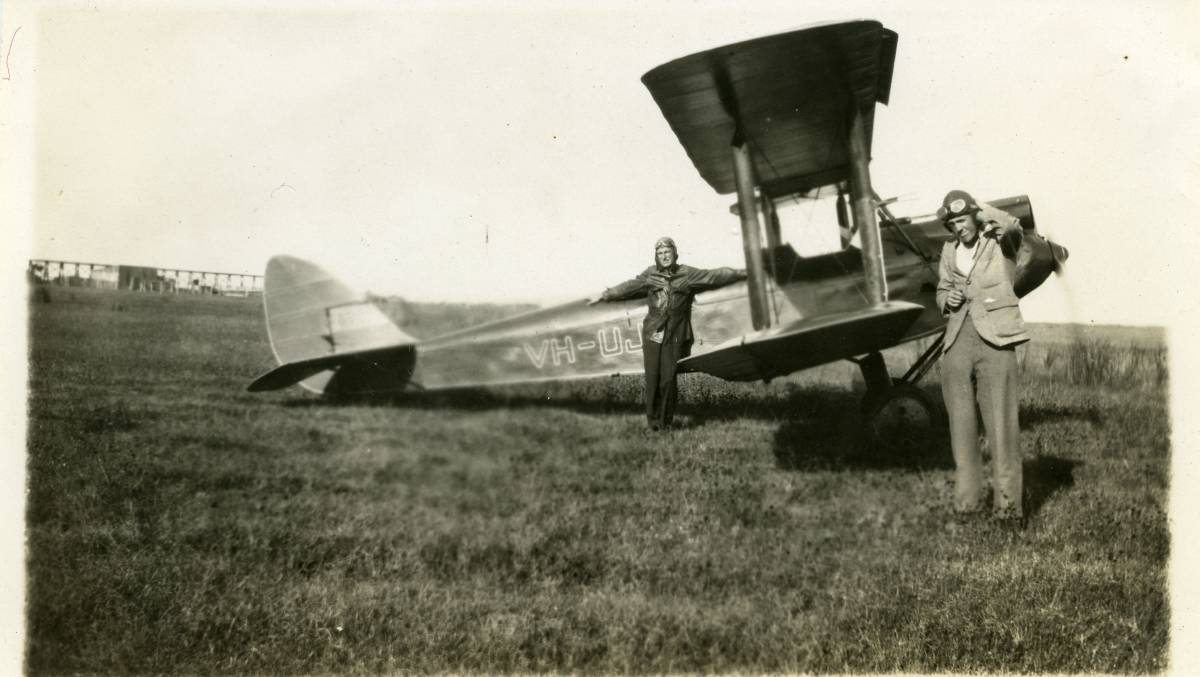
Reginald Annabel and the Gipsy Moth 'Miss Australia', April 3rd, 1930 at Mascot, possibly with engineer.
During the journey, the pilots were refused permission to fly to Tasmania as the machines were deemed by the then Director of Civil Aviation, Colonel Brinsmead as unsuitable for flying over water. Undeterred they continued on their journey and made it safely back to Mascot to be greeted by hundreds of people. For their efforts they were called "the beaut young blokes in flying machines".
He died at Mascot Aerodrome when The Spirit of Fun Junior stalled in a loop about 300 ft above the ground, diving to the earth with terrific force and exploding into flames.
An obituary relates he was held in high esteem in his community and the flying community of then:
OBITUARY.
MR. R. A. ANNABEL.
Impressive scenes were witnessed at the funeral yesterday of Mr. Reginald Arthur Annabel who was killed in an aeroplane accident at Mascot on Sunday. Crowds gathered in James street Rockdale where Mr. Annabel lived and the road from there to Rockdale station was lined with people as the funeral passed on its wav to Woronora Cemetery. The Professional Musicians' Band headed the procession until after it entered Prince's Highway. Shopkeepers closed their premises for the time being. As far as Hurstville, groups of people watched the pro-cession pass. Before George's River Bridge was reached aeroplanes from Mascot flow over the procession.
At the home a service was conducted by the Rev. W. W. Roger, who had known Mr. Annabel since boyhood. He was assisted by the Revs. Andrew Holliday and Joseph Walker. Mr. Roger also conducted the service at the graveside.
The chief mourners were Mrs Annabel (widow) and Mr and Mrs Annabel senior Mr and Mrs J L Crowther Mrs R Ainsworth Mrs G Caswell Mrs E Ainsworth Mr and Mrs A J Coles Mr and Mrs V Ainsworth Mr and Mrs H Ainsworth Mr and Mrs W Ainsworth Mr and Mrs F P Ainsworth Mr and Mrs H E Gllliver Mr and Mrs E O Bowden Mr S T W Annabel, Misses E. and L Annabel Mr and Mrs F A Harcourt. Mr and Mrs W J Mears Mr and Mrs J W Barker Mr and Mrs R B Hayes Mr and Mrs L N Annabel Mrs C Edwards Mr and Mrs F Wilks Mrs E Edwards Mr and Mrs H Edwars Mr and Mrs R J Cox Mr and Mrs G L Edwards Mr F Edwards Mr H L Gllliver.
Among those who attended were Alderman E O Barton (Mayor) and Mr W A Jackson, representing the Rockdale Council. Messrs P Judd L Redmond F Bang A Butterworth A H P Lewis N J Bruckhouser, J Wright R Lawler H Brewer (NSW Trotting Association) W D Elliott J L Mcclelland A Nutt R Nutt C M Miller, P Somerville J Campbell J E Campbell R J Lindsay N Rowlands W R Cox J Bradshaw J Bradshaw, Junior F Edson J R Bell C R, Middleton W A Beehag J H Geeves N Rodoni O Phillips J H Haddon. T Thomson G Edwards R Edwards, F Madden R Foster and C Cooper (representing the Metropolitan and Suburban Dairymen s Association) Captain Hammond and Mr J Stewart (Vacuum Oil Co Ltd ) Captain Follett and Mr A Adam (Adastra Airways Ltd ) Messrs V Connolly V Connolly Junior J and H Stevens J Burgess G Shirley J Colvin W E Keats and W O Elder (Rockdale Chamber of Commerce) L A Hunt W Martin A A Pierce M Kent and E Kelly (Aero Club), P Kinkade A Walker F Parker R Walters A Walters J Byrne (De Havlland Aircraft Proprietary Ltd ) Messrs E Willard S Hancock and A Berwick (Tooth and Co Ltd I R J Purdy P Robinson C Ansoombe 8 Richards A Mills D Fitzgerald C Fitzsimmons T Ramsay L Benjamin A Arnold, H Hcnrickson and E D Thane (Shell Co Ltd) Thos Parry and K D Gerastry (N Z Insurance Co Ltd ) A Allpress R Goode L Gould (Repatriation Department) and P Dawson.
The aeroplanes which flew over the funeral procession and the cemetery included three from the Aero Club piloted by Messrs G Littlejohn J McLaughlan and R Nichol. Adastra Airways Ltd was represented by Captain Gregory and Mr M Fowler, Kingsford Smith Air Service by Mr H C Durant and Air Travel Ltd by Mr Goya Henry. Three private planes were piloted by Messrs D Collins, J Palmer and A Cridland.
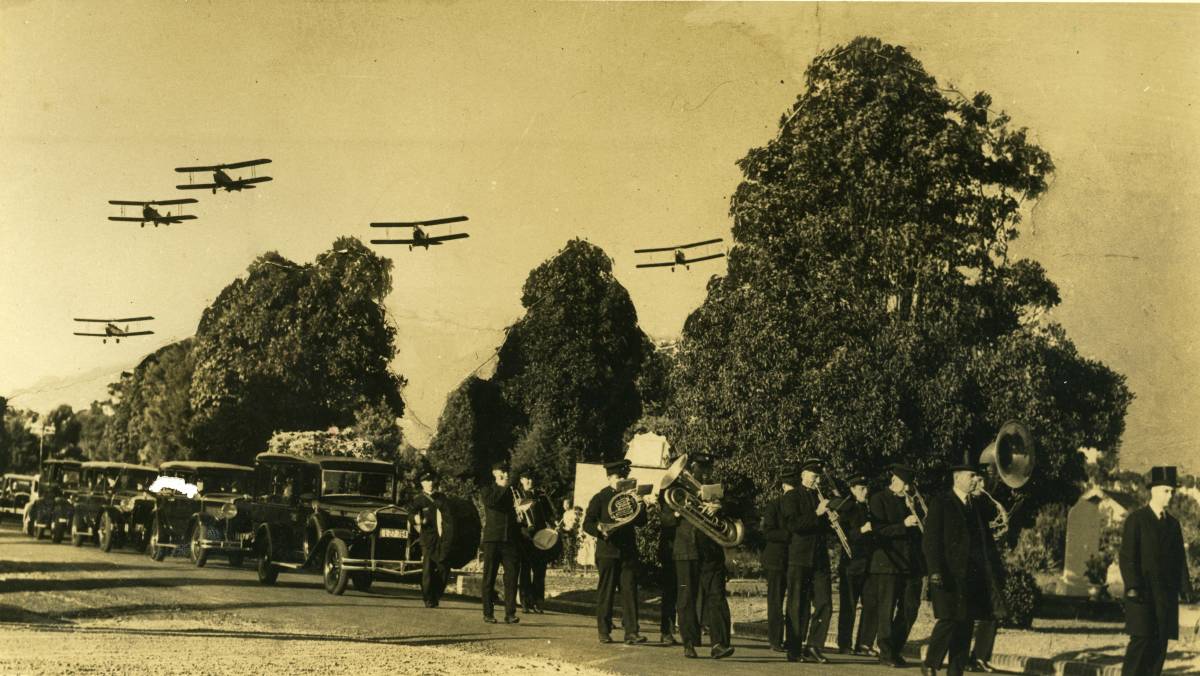
The funeral of Reg Annabel, July 10, 1934.
OBITUARY. (1934, July 11). The Sydney Morning Herald (NSW : 1842 - 1954), p. 10. Retrieved from http://nla.gov.au/nla.news-article17106184
A few more at Palm Beach:
AT PALM BEACH
AIRMAN'S LANDING
When a 'plane landed on Palm Beach early this afternoon rumor ran high that the pilot had had to make a forced landing. Flying from Newcastle, where he is aviation representative of the Vacuum Oil Co., Pilot Nicholls made a perfect landing on the beach, "just to see some friends who were staying there," it was explained.
Mr. Nicholls. it is understood, will stay until to-morrow with his friends. He anticipates no difficulty in taking-off with his Moth 'plane from the beach. AT PALM BEACH (1935, January 3). The Sun (Sydney, NSW : 1910 - 1954), p. 17 (FINAL EXTRA). Retrieved from http://nla.gov.au/nla.news-article230266855
'Plane Mishap at Palm Beach.
A new Avro passenger 'plane struck a soft patch of sand and tipped on its nose when attempting to take off at Palm Beach at dusk. The hundreds of picnickers on the beach were amazed to see the pilot and a woman passenger emerge unhurt. The propeller of the 'plane was smashed. Life-savers towed the machine to the clubhouse, where it will remain until repairs are effected. PLANE MISHAP AT PALM BEACH. (1936, April 15). Daily Examiner (Grafton, NSW : 1915 - 1954), p. 4. Retrieved from http://nla.gov.au/nla.news-article194268336
'PLANE DAMAGED LANDING AT PALM BEACH.
A Moth 'plane, which Mr. A. L Needham, of Australia-street, Camperdown, had flown from Sydney, when landing at Palm Beach yesterday morning, struck a hollow in the sand, which had been dug by children. The 'plane pitched forward on its nose, and one of the metal blades of the propeller was bent. A spare propeller was brought from Sydney, and Mr. Needham was able to take-off at 5 p.m. on his return to the city. PLANE DAMAGED (1937, January 18). The Sydney Morning Herald (NSW : 1842 - 1954), p. 10. Retrieved from http://nla.gov.au/nla.news-article17309660
Despite these 'mishaps' the Warringah Shire Council allowed, as recorded in the Minutes of he Meeting held November 26 1935:
Palm Beach Reserves. 20. A. A. Barlow. 11/11/35, requesting permission to use at weekends, a small portion of the beach about 300 yards north of the wharf, for joy-riding purposes with his amphibian aircraft. 20a. Vacuum Oil Co. fly. Ltd., 11/11/35, recommending granting of Mr. Barlow's application, stating his machine has proved an excellent attraction on the various beaches at Melbourne. Resolved,. - That permission be granted. (Crs. Hughes, Campbell)
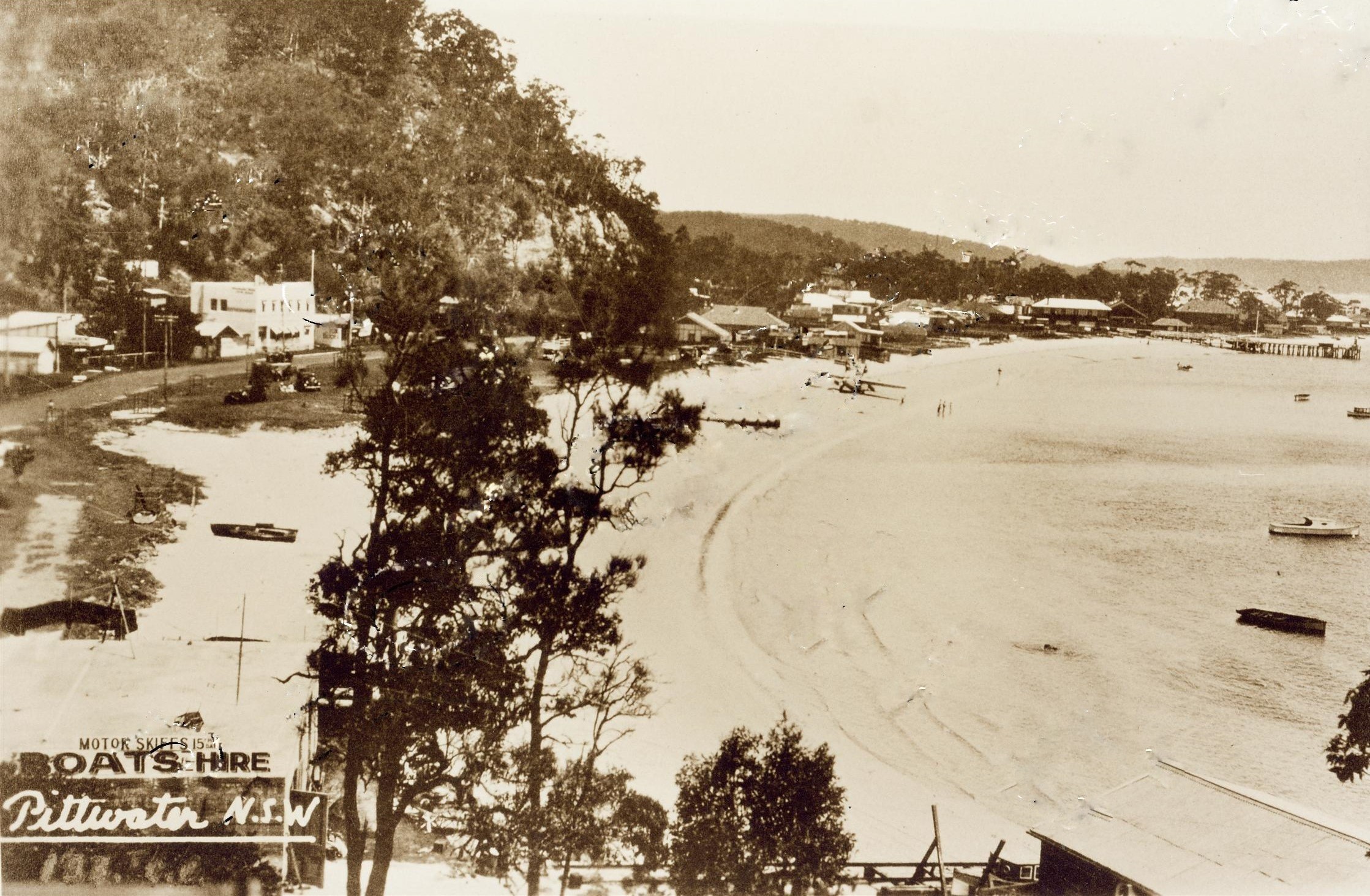
Snapperman Beach Palm Beach circa 1935-1936. Postcard from PON Editors collection
Palm Beach wasn't the only beneficiary of these visits residents, especially young boys and girls, could marvel over. Mona Vale Beach, with its long stretches of sand, was also a place to land when you needed to:
'Plane Lands on Beach
SYDNEY, Tuesday.
Bad weather forced Mr. T. Bowman, grazier, of Muswellbrook, to land his Klemm Swallow monoplane on the beach at Mona Vale today about 11 a.m. While flying from Muswellbrook he ran into blinding rain near Palm Beach and landed on the water's edge at Mona Vale. The soft sand presented difficulty in taking off when the weather cleared, so Mr. Bowman 'phoned to Sydney and Pilot Geoffrey King motored to Mona Vale and took the machine off with its owner as passenger. The 'plane reached Mascot at 1pm. 'Plane Lands on Beach (1935, December 17). The Newcastle Sun (NSW : 1918 - 1954), p. 7. Retrieved from http://nla.gov.au/nla.news-article166497235
Mr. Ronald Sharp - Plane which was forced to land on Mona Vale beach late this afternoon. The plane a Piper Cherokee 140 was piloted by Mr. Ronald Sharp 28, of Mortdale. Photo taken 19 August, 1963
we will land them On the Pittwater Estuary
The beaches weren't the only place to land in Pittwater - the estuary itself has been a place to touchdown and continues to be for modern seaplanes and visitors taking a scenic flight, although not all of them were planned. Just as is in the first days of 'coasters' seeking shelter in Pittwater from the early 1800's, the 1900's were marked by this occurring too:
NEWPORT'S SHOCK
SEAGULLS ON PITTWATER WAITING FOR LIGHT
Newport, lying peacefully in the hollow of the hills between Pittwater and the ocean, received a- shock just as dusk was falling yesterday. Two Seagull amphibians swooped down from the north and settled on Pittwater. They were nearing the end of their long journey from Bowen to Richmond, and the pilots decided not to go any farther, as it would have been dark before they could reach the Richmond aerodrome. They had left Port Macquarie at 2.30 p.m. and met head winds. The Seagulls are going on to Richmond today. They will take part in the air welcome to the Duke and Duchess of York on Saturday. NEWPORT'S SHOCK (1927, March 24). The Sun (Sydney, NSW : 1910 - 1954), p. 13. Retrieved from http://nla.gov.au/nla.news-article223228634
The stretch of calm still water has always been a mecca for visitors by water and air and was even named as a potential Air Mail base:
MCCARRS CREEK, PITTWATER. TO THE EDITOR OF THE HERALD.
Sir,-Easter is near at band, and usually at that time, Sydney yachtsmen make for this splendid sailing area. So I would ask you to give, through your columns, a warning to Intending visitors, that the usually safe anchorage of McCarrs Creek contains a risk of which they cannot possibly have any knowledge. Quite, recently the Telephone Department has placed across McCarrs Creek at Its entrance, four telephone wires, which stretch from Church Point to the opposite shore, about 550 yards across.
These wires are suspended at such a height that no big yacht could possibly avoid striking them, nor could those on board see the wires, till they are quite close to then it and the result of a broken spar falling on the deck might be very serious. Only as recently as Sunday a large schooner rigged yacht came up to her usual spot for mooring, quite unaware of the danger, and was warned by people in a launch of the impending danger, just In time to avoid a collision with the wires. There is also the risk to pilots in seaplanes, who are not infrequent visitors to these waters, and who descend into McCarr's Creek. I am not a flier, but I feel confident no pilot in a descent could possibly see the wires till too late, and the result might In the case of a seaplane may readily be fatal The Telephone Department may have its own reasons for not using a submarine Cable. I am, etc., Church Point, March 19. PETRON. McCARRS CREEK, PITTWATER. (1929, March 21). The Sydney Morning Herald (NSW : 1842 - 1954), p. 6. Retrieved from http://nla.gov.au/nla.news-article16539818
AIR MAIL.BASE. TO THE EDITOR OF THE HERALD.
Sir,-I am directed to suggest the use of Pittwater as the base for the air mail service in place of Rose Bay, and to express our surprise that this site should have received such small consideration, in view of its apparent suitability for the purpose. There we have a sheltered stretch of water about 6 miles long by an average of one mile broad, and, further, with an east-west width at the southern end of two miles, and a large area of flat land to the south and south-east, to facilitate the take off of planes to the south.
Then, for building docks, etc., there are about 40 acres of the Winnererremy Swamp which needs reclaiming. Should this be thought too exposed, or in any other way, unsuitable, there is McCarr's Creek, having deepwater of about 400 yards wide for about three-quarters of a mile, and about 200 yards wide for a further third of a mile, and sheltered from every wind that blows. Ample cheap land is also available for development. We feel that the authorities would do well to investigate Pittwater further before deciding elsewhere. I am, etc., F. T. JEFFERY, hon. secretary, Warringah Direct Transport League. AIR MAIL BASE. (1937, July 12). The Sydney Morning Herald(NSW : 1842 - 1954), p. 6. Retrieved from http://nla.gov.au/nla.news-article17372302
This echoes the post WWII scheme dreamed up by the first woman to fly in Australia, Florence Mary Taylor:
scheme for an aquatic airport at Newport - perhaps to rival that at Rose Bay, perhaps in deference to P G Taylor, who certainly had an aquatic plane at Bayview by this time. There had been 'talk' of Pittwater being a suitable location for an aquatic airport since the late 1930's - Rose Bay won:
NARRABEEN LAKE.
Protest Against Dredging Lease.
A deputation yesterday protested to the Assistant Minister (Mr. Fitzsimons) against the proposal to grant a shell-dredging lease for Narrabeen Lake.
Mr. A. E. Reid, M.L.A.. who Introduced the deputation, said it sought protection of the public's playgrounds against commercial exploitation. It was contended that the lease applied for at the lake entrance, would permit the lessee to turn a salt water lake into a fresh water lake, as the terms of the lease permitted the erection of tide gates.
Mr. B. W. Ford, president of the Town Planning Association, said that Narrabeen Lake was one of the most beautiful and popular recreation areas around Sydney. If dredging for shell was permitted the lake would be spoiled. He understood it was proposed to establish cement works with shell-dredging, but the locality should not be commercialised. If dredging was necessary it should be done under Government control and expert super-vision.
Mr. A. J. Small, acting president of the Parks and Playgrounds Movement, said that the Mines Department was not required to consult any other body or department. The Lands Department would not have granted such a lease. The lessee's proposals would, result in the dredging of a channel 20 feet deep, while the spoil from the lake bottom, if deposited on the bank, would create a public nuisance.
Dr. Bean, secretary of the Parks and Play-grounds Movement, said the Warringah Shire Council had made a mistake when it approved the lease. The destruction of one of the most beautiful natural playgrounds should not be risked for the sake of one private enterprise.
Mrs. Florence Taylor supported the protest.
The deputation also protested against the opening by the Main Roads Department of a quarry on the main road above Bilgoela Beach.
Mr. Fitzsimons, in reply, said that the problem of the dredging lease seemed to be difficult, as the lease had been approved and a company had been formed to operate under it. All he could do was to bring the representations before the Cabinet. The quarry question also was difficult. The Main Roads Department was autonomous, and the arrangement it had made with the shire council was one within its powers. He was sure the Main Roads Commissioner would give sympathetic consideration to the protest. He would bring the matter before the Minister for Transport. NARRABEEN LAKE. (1934, December 12). The Sydney Morning Herald (NSW : 1842 - 1954), p. 21. Retrieved from http://nla.gov.au/nla.news-article17124456
PITTWATER AIR BASE PROPOSAL
Pittwater was urged as a suitable site for' the terminal of the. London-Sydney seaplane service by Mr. Playfair, M.L.C., yesterday.
He was speaking at a luncheon given to the Premier (Mr. Stevens), at Manly by Warringah Shire Council. Pittwater was long and broad, and the waters were sheltered from the rough, seas. Mona Vale Progress Association has written to the Acting-Minister for Defence (Mr. Thorby) suggesting that the area between Bay View and Lion Island would be suitable for a base. PITTWATER AIR BASE PROPOSAL (1937, July 2). The Daily Telegraph (Sydney, NSW : 1931 - 1954), p. 3. Retrieved from http://nla.gov.au/nla.news-article247219200
What's Wrong With Rose Bay?
"We cannot expect these days to have our flying fields close to the city," says a member of the Parks and Playgrounds Movement. He shows a curiously archaic attitude towards air transport. In the city of the future the airport will be the logical civic centre. To suggest Pittwater as an air-base, when Rose Bay is available, is to bring a bullock-track mind to stratosphere problems. What's Wrong With Rose Bay? (1938, July 9). The Daily Telegraph (Sydney, NSW : 1931 - 1954), p. 6. Retrieved from http://nla.gov.au/nla.news-article247348380
Florence's scheme, in conjunction with New Zealand born Francis Graham Hood, one of many such drawings that would be published in her 'Construction' journal with her name beside his:
THE AIRPORT OF TO-MORROW
AUSTRALIA'S INTERNATIONAL AIRPORT BASED AT NEWPORT, N.S.W.
The outbreak of war found commercial aviation on the brink of big developments, chiefly in the provision of regular services across the North Atlantic. Although the war interrupted the immediate plans of £he air transport companies it eventually brought amends in the form of service traffic that swelled to a volume undreamed of in peacetime. While this traffic receives little publicity it has nevertheless, served to finally establish the practicability of trans-ocean flying and to bring this branch of aviation well out of the pioneering stage. Giant aircraft are now being mass-produced and, although the larger number are designed as heavy bombers, plants that are manufacturing bombers can easily switch over to the production of civil aircraft of similar or larger sizes. British aircraft firms that have had, perforce, to concentrate on bomber production are already considering modification of their designs to serve the" purposes of civil aviation in the immediate postwar years, while they are developing the prototypes of the real commercial aircraft of the future. The largest aircraft so far built is the flying boat, Martin Mars, which has a gross weight of 140,000 lb. The U.S. Navy acquired the first one for use as a cargo carrier and ordered twenty more from the makers. A more ambitious project is that of Howard Hughes and Henry
J. Kaiser who visualise an eight-engined flying boat carrying 120,000 lb. of cargo and having a gross weight of 400,000 lb. Consolidated Aircraft is reported to have in hand a design for a mammoth aircraft with accommodation for from 200 to 250 passengers. The Douglas Company's plans are more modest but the DC 7 will have a speed of 400 miles per hour and a cruising range of 4,000 miles while carrying 86 passengers by day or 76 by night. The competition between the land plane and the flying boat for trans-ocean service is still proceeding and no finality appears to have been reached. The cost ot aerodrome pavements capable of carrying enormous loads on one pair of wheels and stretching in runways of a mile or more in length will serve to set a limit on the growth in size of the land plane. On the other hand long stretches of sheltered water will be required for the winged ships of the future. In the light of present developments, therefore, both giant land planes and mammoth flying boats will require to be accommodated on the trans-ocean terminal airport of the future. With this fact in mind a Sydney architect, Francis G. Hood, in association with Florence M. Taylor, architect, and Charles O. Harrison, B.E., has devoted much time and thought -to the design of an airport for combined trans-ocean
and trans-continental traffic. This design involves a number of original and interesting features. It will be observed that it is a dual-purpose airport accommodating both aeroplanes and flying boats. The airport services also are in duplicate and between the two sets of buildings run lines of railway track with branches serving platforms set out in echelon formation. Around the railway zone, road traffic circulates freely, passing under the rail tracks at the end intersections and everywhere avoiding level crossings. Cross traffic of goods and mails is provided for in subways traversing the full width of this land traffic zone and connecting the two systems of air traffic. Conveyors would be provided in these subways. Fuel tanks for the aircraft and the connecting system of mains are all buried underground. Another important feature of this layout is the unit design of the airport buildings. On the unit principle one air transport company or one country operating international services may leave its own unit or units as required on both the aerodrome and seadrome transport systems. Each unit extends through the offices set apart for mails and customs and includes also its own subway and railway platforms. (Description continued on plan overleaf.)
From "The Australasian Engineer Year Book."
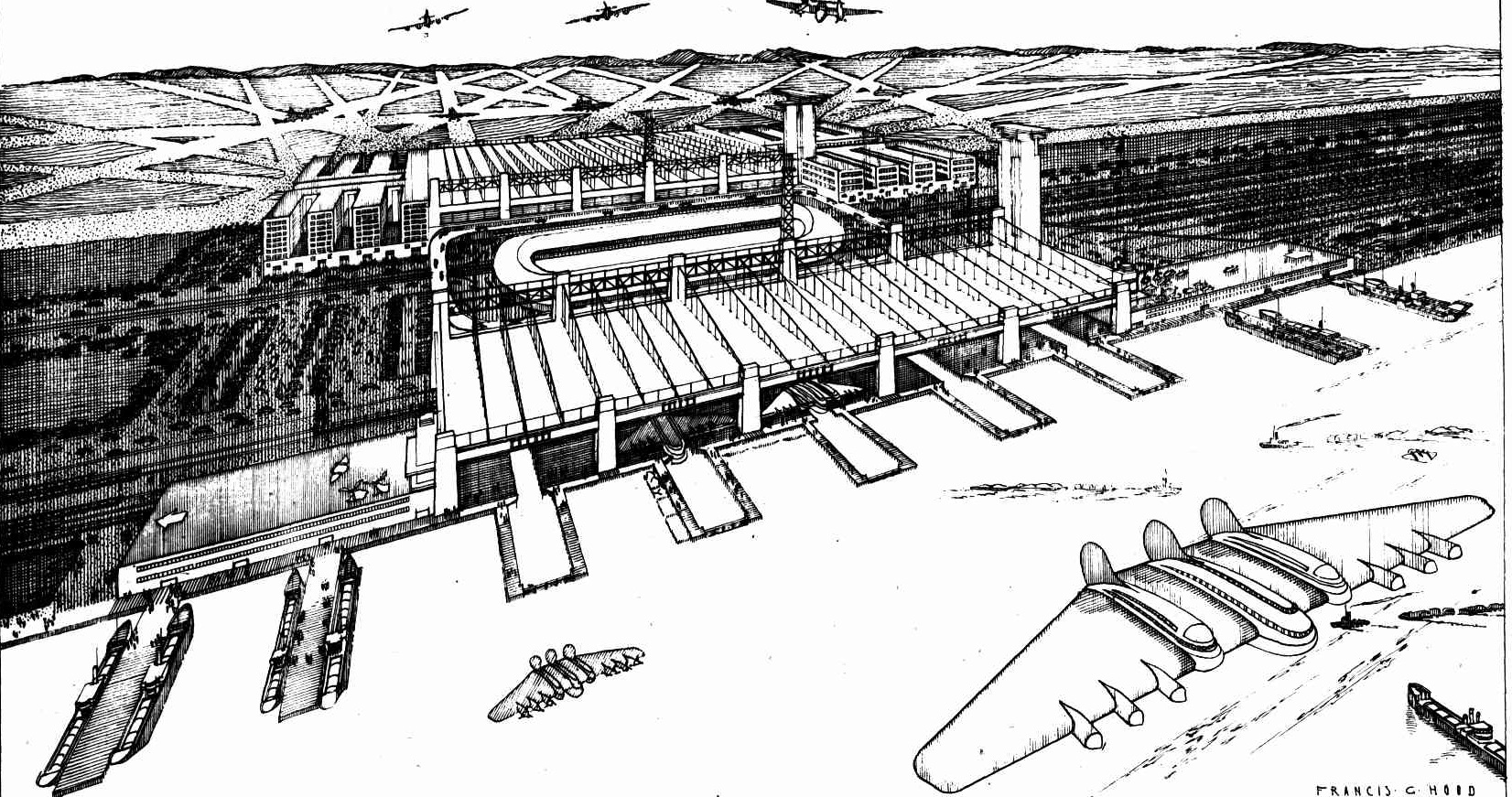
AERIAL VIEW.
THE AIRPORT OF TO-MORROW (1945, February 7). Construction (Sydney, NSW : 1938 - 1954), p. 10. Retrieved from http://nla.gov.au/nla.news-article223544443
THE AIRPORT OF TO-MORROW
AUSTRALIA'S INTERNATIONAL AIRPORT BASED AT NEWPORT, N.S.W.
From "The Australasian Engineer Year Book”
By Francis G. Hood, Architect, in association with Florence M. Taylor, Architect, and Charles O. Harrison, B.E.
An airport hotel, with ample lounge and dining room space, is easily reached by motor coach from either side of the airport. The circulatory road system also serves for mails and may likewise carry heavy vehicles transporting aircraft engines from the hangars to more distant workshops to undergo complete overhaul. Alternatively separate roadways, or railways served by gantries may be provided for this service. An important feature of Mr. Hood's design is the use of turntables for giant aircraft within the hangars where passengers, mails and goods are loaded or unloaded and top overhauls carried out between flights; these operations being assisted by portable platforms at the various levels which can be' swung aside to clear the aircraft. In the case of the seadrome, the flying boats are warped in through a lock to avoid changes in tidal level and are simply turned round as required in the circular basins within the hangars where the water level can be adjusted accurately to facilitate loading and unloading operations. Provision is made also for a dry dock for inspection of the hulls while in the hangars. Wide spans are called for at the hangars. In this case the necessary span is assumed to be 300feet. It is suggested that some type of suspended roof may be found practicable, though this is an independent structural problem. The roof, in any case, is designed on the louvred principle so that aircraft engines can be run in the hangar without causing undue wind disturbances.
Wharf facilities are also indicated on the plan adjacent to the seadrome thus linking the airport directly with another major transport system. Administration offices and workshops are also provided tor and another necessary feature is a' bond store or stores. The workshops and stores are served by rail as well as by the circulating road system. In this as well as in the other features, the airport design shows considerable flexibility. Although drawn to a scale the sizes of the various buddings and structures are based on assumed data and can be readily modified to meet the requirements of an . individual airport as regards capacity or natural physical features.
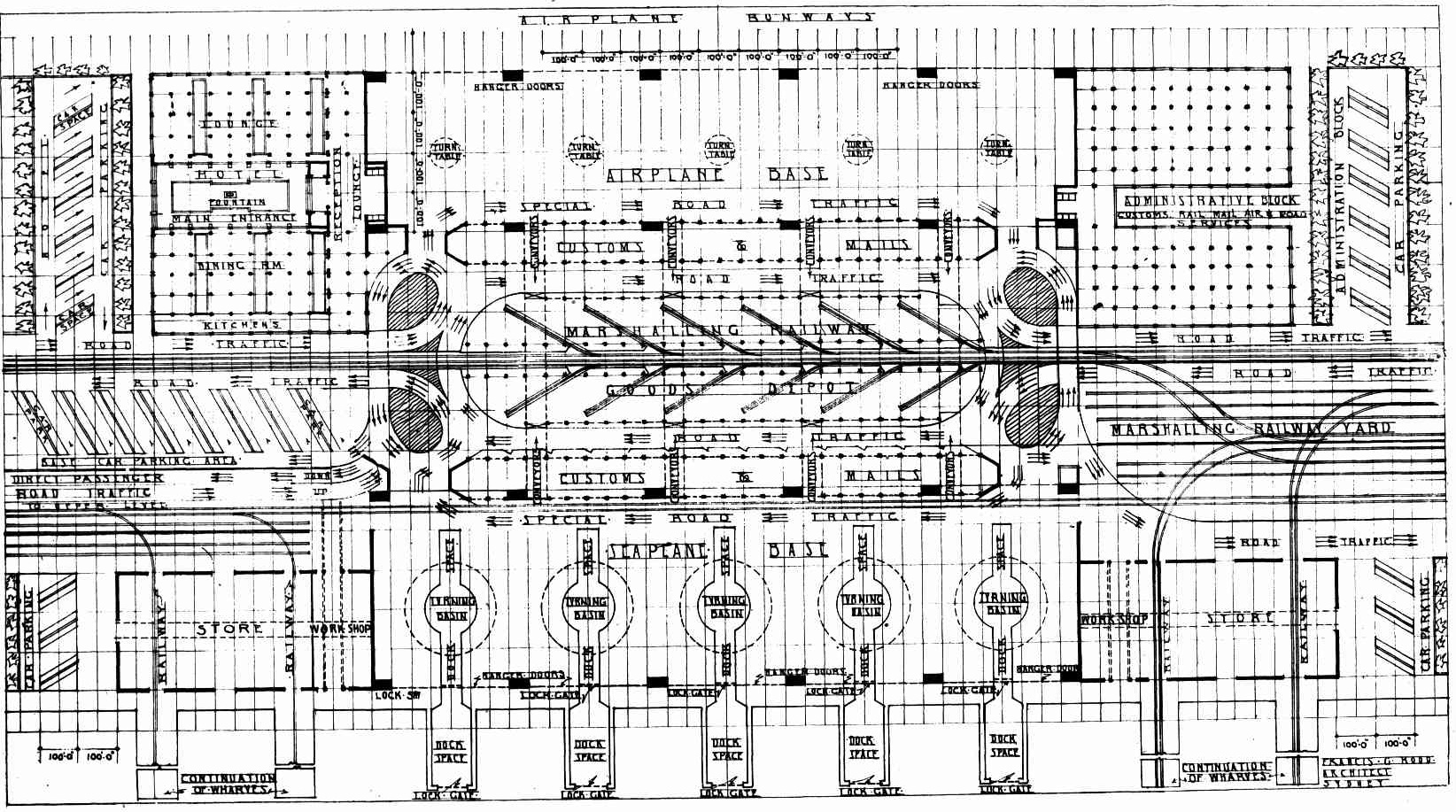
LAYOUT PLAN SHOWING BUILDINGS AND RAIL WAY, AIRWAY AND ROADWAY CIRCULATION.
THE AIRPORT OF TO-MORROW (1945, February 7). Construction (Sydney, NSW : 1938 - 1954), p. 9. Retrieved from http://nla.gov.au/nla.news-article223544444
ELEVATIONS AND SECTIONS FOR BUILDINGS FOR AN INTERNATIONAL AIRPORT.
Francis G. Hood, Architect, in association with Florence M. Taylor, Architect, and Charles O. Harrison, B.E.
In these elevations the aerodrome is on the left and the seadrome on the right. The hangar buildings have high louvred roofs with long clear spans to accommodate the largest aircraft. Subways connect the two sections of the airport and above these subways are the railway yards surrounded by a loop access road. The plan view shows also the hotel and administrative blocks. ELEVATIONS AND SECTIONS FOR BUILDINGS FOR AN INTERNATIONAL AIRPORT. (1945, February 7). Construction (Sydney, NSW : 1938 - 1954), p. 13. Retrieved from http://nla.gov.au/nla.news-article223544481
Sir P G Taylor's seaplanes permanently at Bayview is remembered fondly by locals. Don Taylor, nephew of P G Taylor recalls:
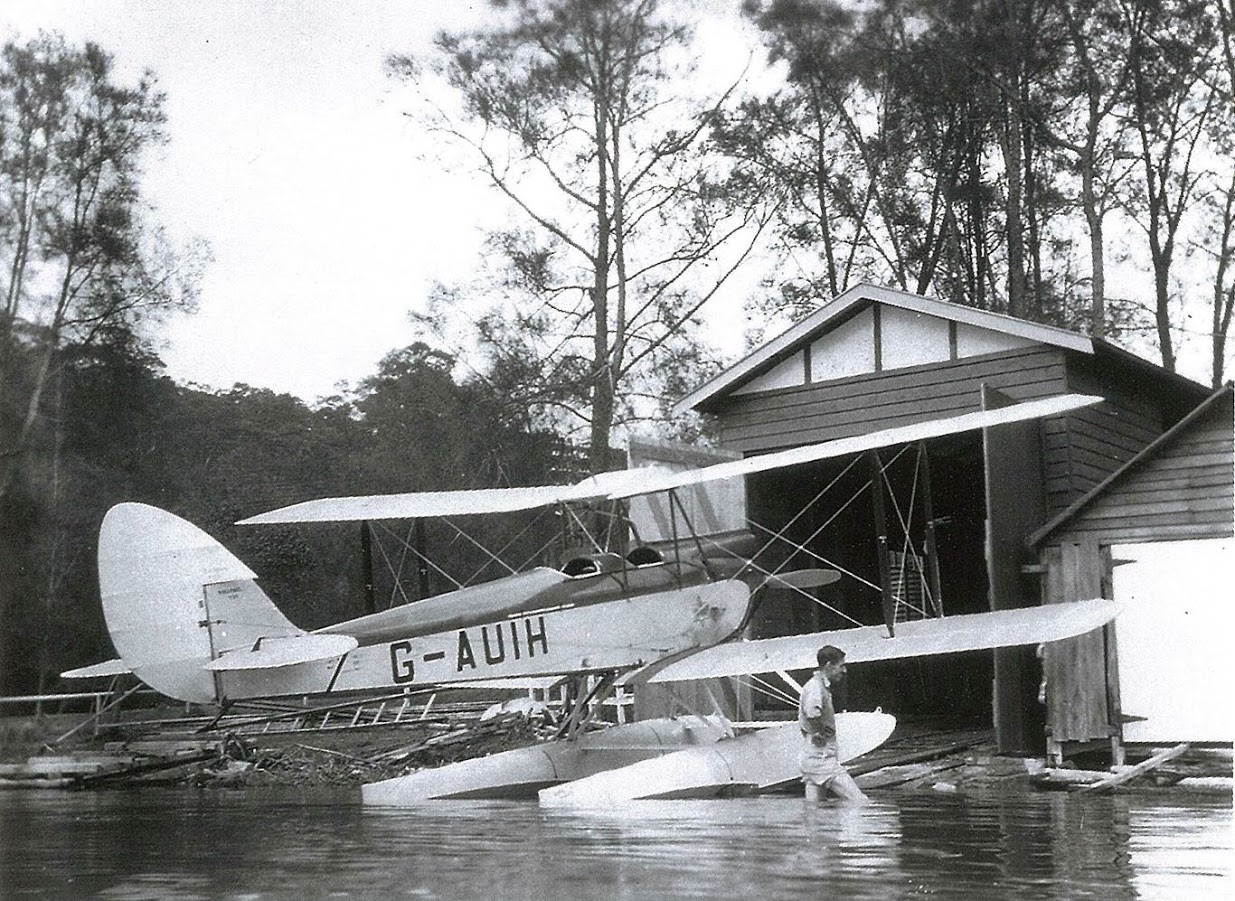
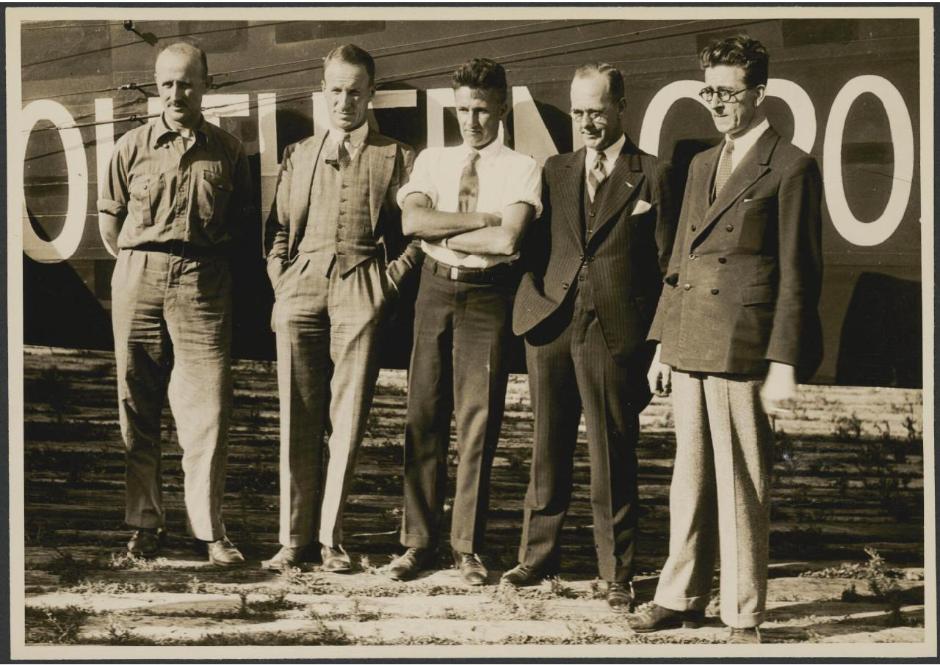
Left to right, P.G. Taylor, Smithy [i.e. Charles Kingsford Smith], John Stannage, Stan Nielson and Jack Percival, before Australia-New Zealand flight to Gerringong, Mascot Aerodrome, 1933 [picture] / Sydney Morning Herald and Sydney Mail, Sydney 1933. Photo courtesy National Library of Australia, Image No.: PIC/3394/938
I also remember at the end of the war P G Taylor brought three Catalina planes down to Bayview. They were delivered to the boatshed and we put them on moorings there. The Navy took the engines and gave the rest to dad who took some of them for parts – the anchors were still great, as was the steel. Dad used them in boats. PG Taylor put one together out of all three and it was placed in Catalina Park in the Blue Mountains – dad knew the manager of the Guest House up there at Katoomba.
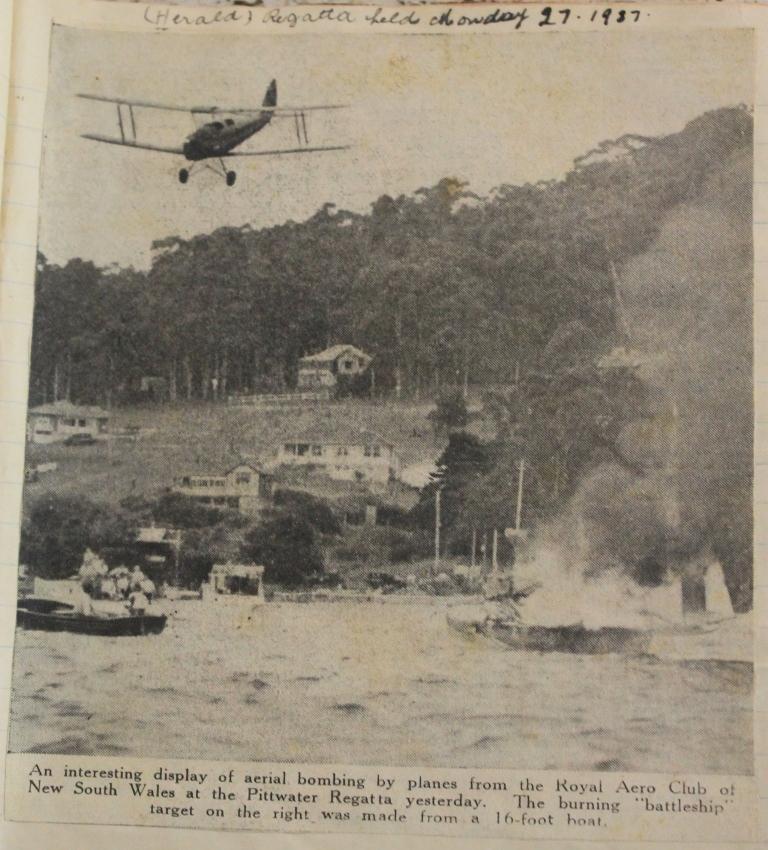
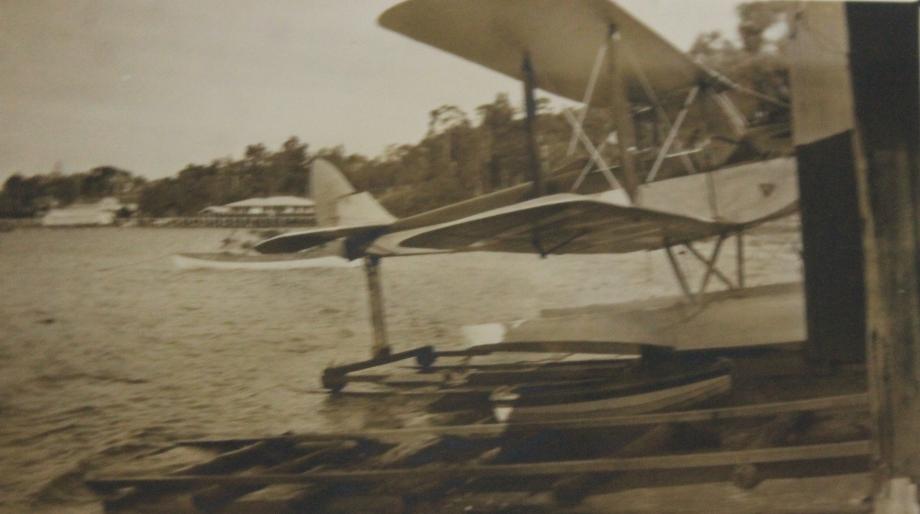
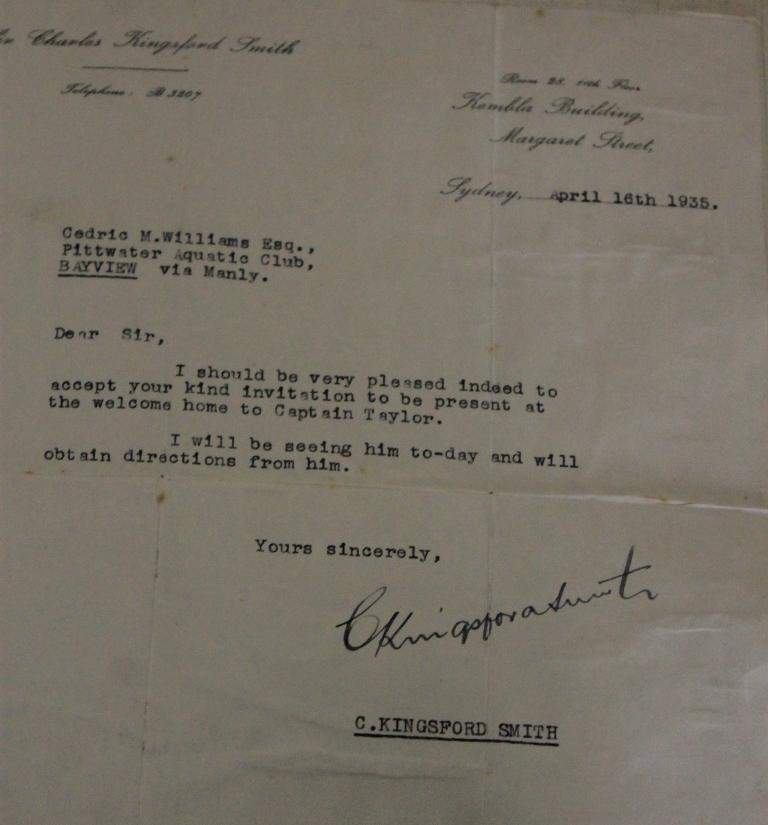
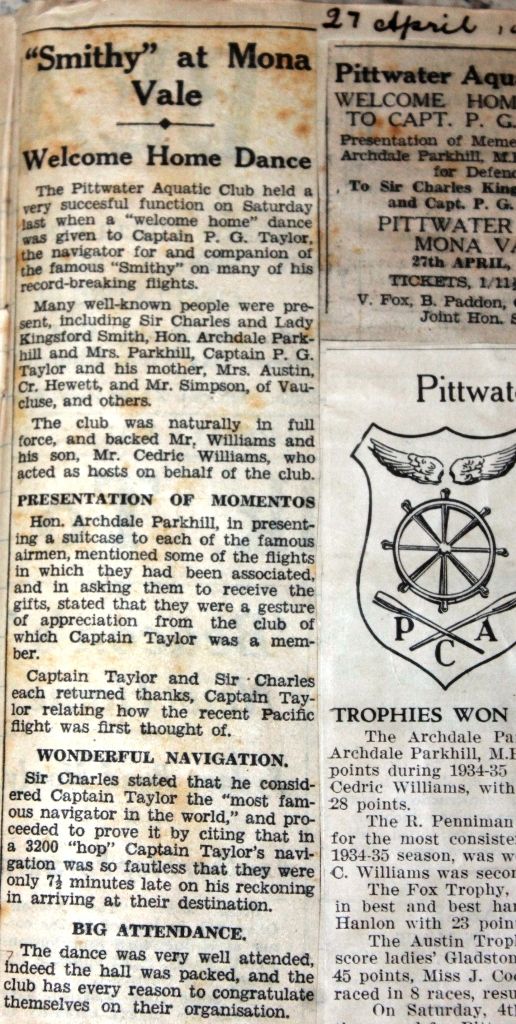
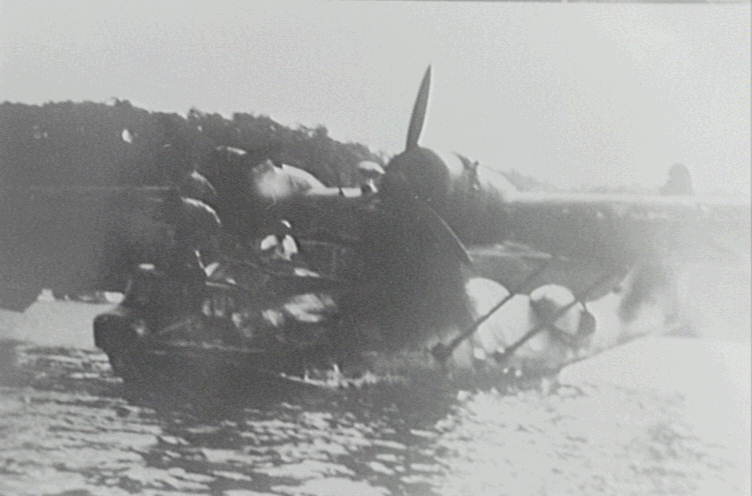
Flying boat owned by P. G. Taylor in water near Bayview. Williams family and also courtesy Mona Vale Library: Local History Collection
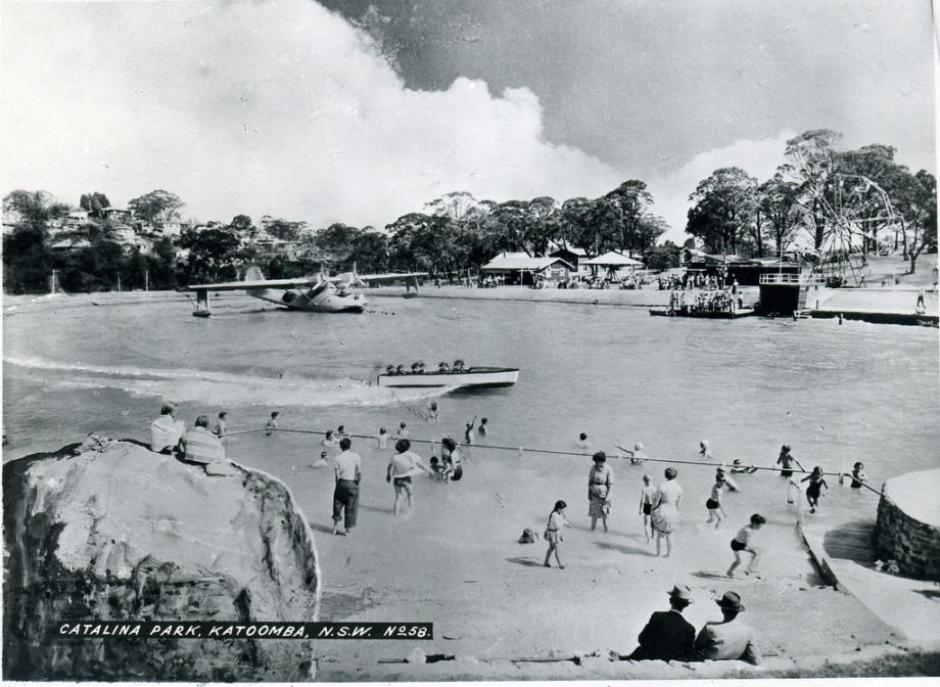
Catalina Park, Katoomba c.1950
Looking south east, showing the Catalina flying boat on the swimming lake, speed boat ride, fun fair, Ferris wheel, "monkey house" shelter constructed of cement over wire netting in the foreground. The land was purchased by Horace Gates owner of the Homesdale Guest House and Wentworth Cabaret who, in 1946, felt that a new attraction was needed to bring tourists back to the Blue Mountains after peace was declared. Accordingly he dammed Katoomba falls creek and had an ornamental lake and amusement park constructed offering ‘every facility for fun and food’.
The park was an instant success and in 1948 the shell of a Consolidated Catalina PBY-5 flying boat was added to the attractions which included speed boat rides, tea rooms, miniature train, Ferris wheel, merry-go-round, swimming pool and a Giggle House showing Charlie Chaplin films. Although many people believed the plane had flown there, it had in fact been dismantled and brought to Katoomba by truck, where it was re-assembled and anchored to a concrete block in the middle of the lake.
Up to thirty passengers paid two shillings each to be taken out to the flying boat by punt where, in the dark, stuffy interior, they viewed film of a flight over Sydney, heard the story of the Catalina and tried out the controls. While the film was showing, an assistant would stand on the wing rocking the plane to simulate flight while the speed boat would circle the lake providing waves and engine noise. Fun seekers emerged from this surround sound experience dizzy and gasping for air, many too ill to enjoy further amusements.
For many years the lake operated as Katoomba’s swimming pool and provided a fireworks display after the New Year’s Eve street parade, however as the town’s population increased, it gradually became run down and the water polluted.
Blue Mountains City Council purchased the land in 1952 with the purpose of turning the area into a public park and treated water swimming pool. In 1954 the Catalina, showing signs of age and wear, was pulled up onto the bank and left to the ravages of weather and souvenir hunters, until in 1958 it was sold to Sheffield Welding & Engineering, Auburn NSW, where it was dismantled and cut up for scrap. Courtesy Repository: Blue Mountains City Library www.bmcc.nsw.gov.au/library/ - Part of: Local Studies Collection
SERVICE WITH SEAPLANES.
Sydney to Newcastle.
HALF-HOURLY FLIGHTS PLANNED.
Plans for the establishment of a halfhourly seaplane service between Sydney and Newcastle, to be commenced before the end of the year, were announced yesterday by Mr. Stuart F. Doyle.
A company to be called Safety Airways (Newcastle), Ltd., is in formation with an authorised capital of £50,000, and its first directors will be Sir Alan Cobham, Mr. Stuart F. Doyle, and three Newcastle business men.
The decision to inaugurate the service was reached at a conference between Mr. F. S. Short, managing director of Short Brothers of Rochester, England, Sir Alan Cobham, and Mr. Doyle, during Mr. Doyle's recent visit to England. For the purpose, arrangements have been entered into for the importation of Short Brothers' "Scion" seaplanes, with accommodation for 10 passengers.
Mr. Doyle said that it was expected that the service would commence in August.
"The reason for using seaplanes is two-fold," Mr. Doyle said. Firstly the trip be-tween Sydney and Newcastle represents an unbroken series of sheltered waterways where a plane can land with absolute safety, and, secondly, by using seaplanes, the passengers can be landed in Newcastle Harbour and adjacent to the city in Sydney, without any delay of transport from aerodrome.
TOURIST TRIPS.
"It is intended to institute a half-hourly service, and to incorporate tourist trips, so that seaplanes will land on the various water-ways around Newcastle and Sydney. The continuous waterways on the route consist of Sydney Harbour, Deewhy Lagoon, Narrabeen Lagoon, Pittwater, Broken Bay, Bris-bane Waters, Terrigal, Tuggerah, Lake Mac-quarie, and Newcastle Harbour."
Mr. Doyle added that the reason for the adoption of Short Brothers' "Scion" sea-planes was that, under service conditions in India with the Irrawaddy Flotilla and Air-ways Company, they had been in daily service, and had given complete satisfaction. The plane's four engines gave an additional safety factor, because it could be flown satisfactorily on two engines alone.
Short Brothers are the manufacturers of the flying-boats, which will be used on the air mail service between England and Australia.
A flying schedule for the new service has been drawn up. The seaplanes will leave Rose Bay for Newcastle at 8 a.m., 10 a.m., 1 p.m. (lunch on board), and 4.30 p.m. They will leave Newcastle at 8.45 a.m., 10.45 a.m., 1.15 p.m. (lunch on board), and 5.30 p.m. Air tourist flights will be made daily at Newcastle and Sydney. The service will be maintained on Sundays.
Mr. Doyle said that the service would bring Hunter Street, Newcastle, within 40 minutes of King Street, Sydney.
(Picture on page 14.) SERVICE WITH SEAPLANES. (1938, April 2). The Sydney Morning Herald (NSW : 1842 - 1954), p. 12. Retrieved from http://nla.gov.au/nla.news-article17453800
The image, which has, on the same pictorial page the impact of bombers during the Spanish Civil War, shows the sleek look of amphibian planes by 1938, and in the images showing the devastation, and the death toll, an omen of what was to come just a short time later:
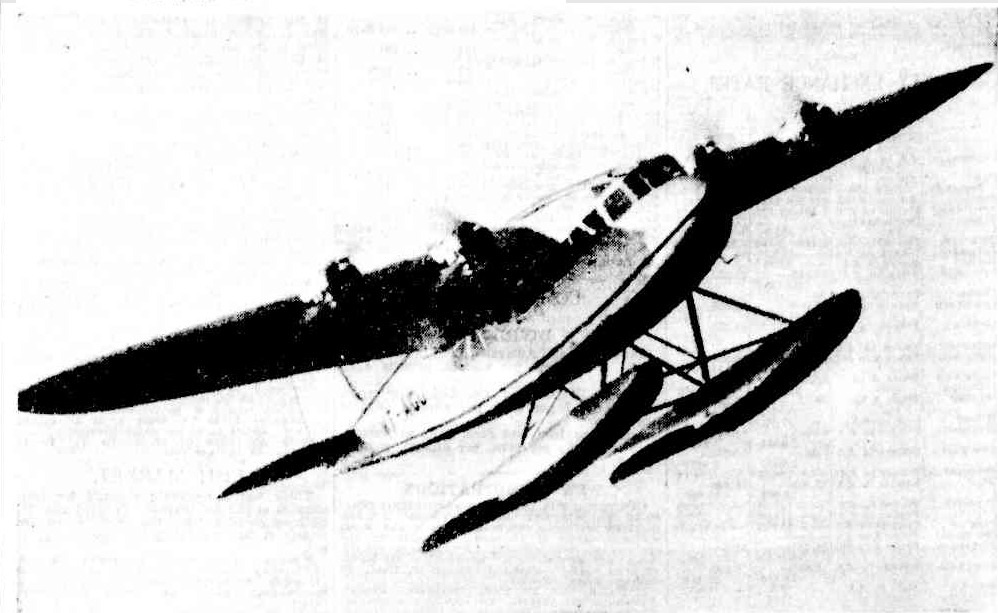
A Short Brothers' Scion seaplane-the type which it is proposed to use in a service between Sydney and Newcastle. The plane has accommodation for 10 passengers.
.jpg?timestamp=1615431843340)
.jpg?timestamp=1615431874861)
More than 1,300 people were killed and thousands injured during the rebel air raids on Barcelona about a fortnight ago. In the picture above, rescue workers are seen searching for bodies in a wrecked house; and at left, household goods are shown piled in the street. SIX KILLED IN NEW ZEALAND RAILWAY DISASTER—BOMBERS RAIN DEATH AND DESTRUCTION ON BARCELONA. (1938, April 2). The Sydney Morning Herald (NSW : 1842 - 1954), p. 14. Retrieved from http://nla.gov.au/nla.news-article17453783
Victor Walton - seaplanes at the Boathouse, Palm Beach
Photos courtesy Russell Walton, son of Victor - more in Barrenjoey Boat House
Captain Victor Walton leased the Barrenjoey Boathouse and wharf from Aub Allen to operate Aquatic Airway Australia, a coastal airline, from this site. Aub Allen built the Barrenjoey Boatshed in Governor Phillip Park in 1947 where he operated a fishing boat hire business. Aub Allen then leased the jetty and boatshed in 1975 to Captain Victor Walton who used it to operate his seaplane business Aquatic Airways, Australia's Coastal Airline, and began operations in December. In 1977 Aquatic Airways purchased a second Cessna 206, VH-FVW used for tourist and commuters and was so popular another Cessna was purchased in 1979. By 1980 Aquatic Airways was granted a Regular Public Transport licence by the Department of Aviation to run an airline service from Port Stephens to Palm Beach, and later to Rose Bay.
The North Shore area of Sydney was struck by a devastating storm 21st January 1991, damaging one of the Aquatic Airways floating Beavers, which was later rebuilt as well as a company office. Aquatic Airways ceased operations in 1993 and was replaced with Sydney Seaplanes flying a regular service over Pittwater to Newcastle and back, as well as charter and sightseeing flights. Department of Lands and Water Conservation leased the Barrenjoey Boathouse until 2022.
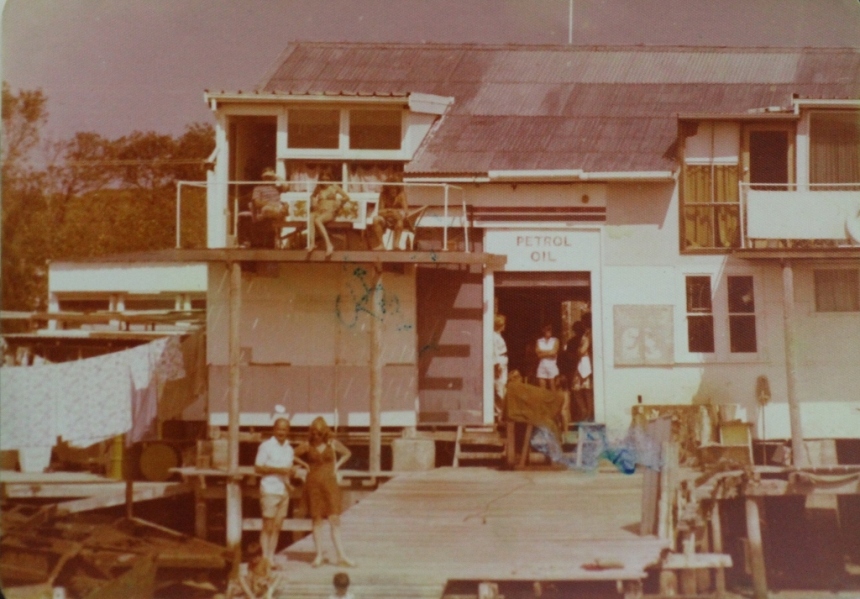
Capt. Victor Walton and wife Carmel at front of picture.
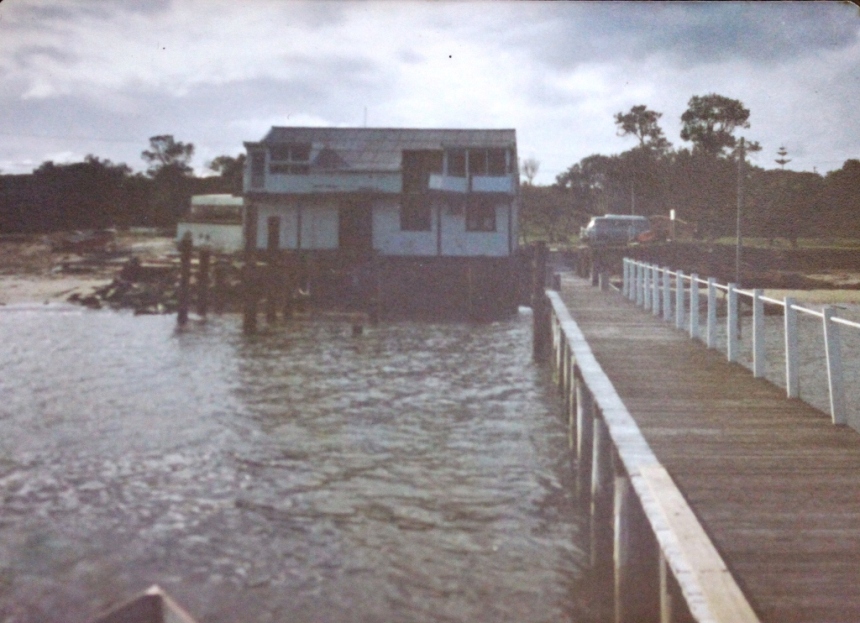
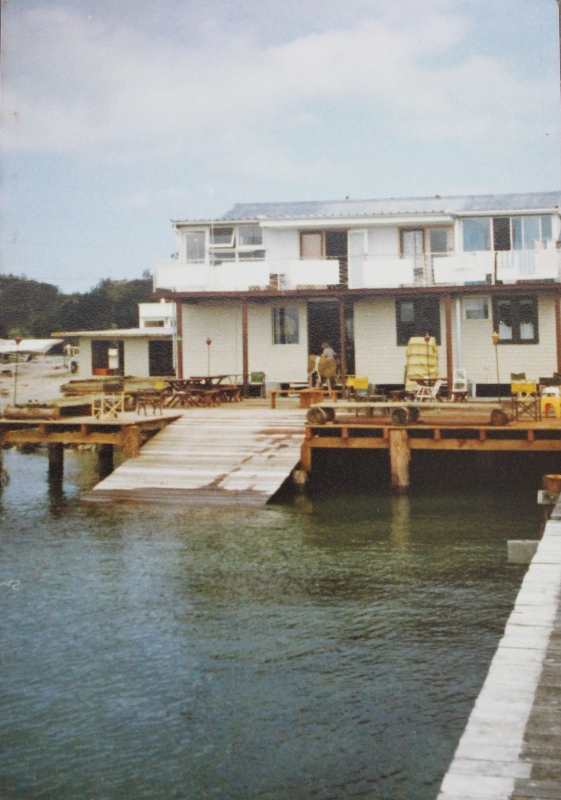
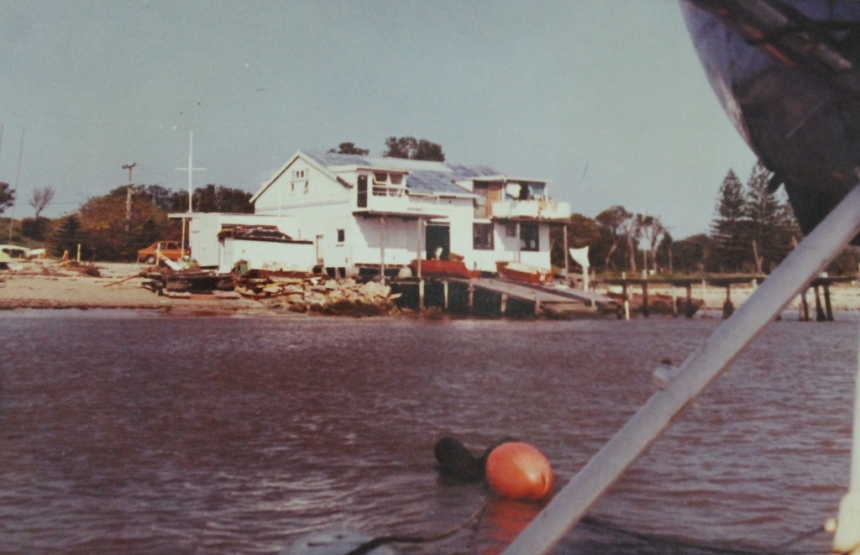
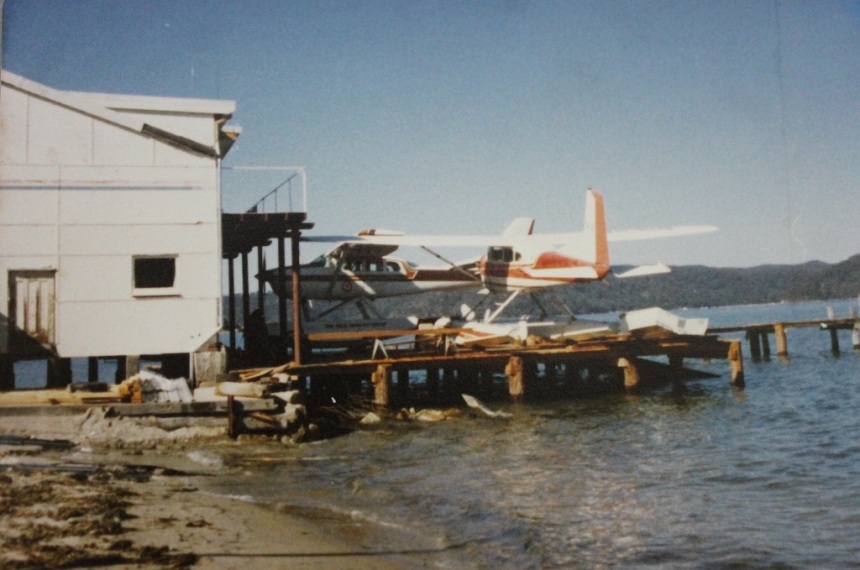
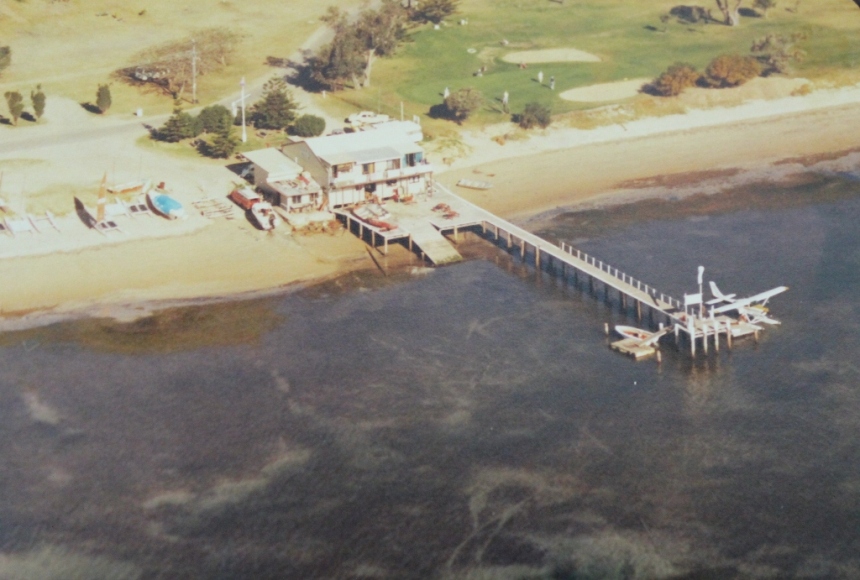
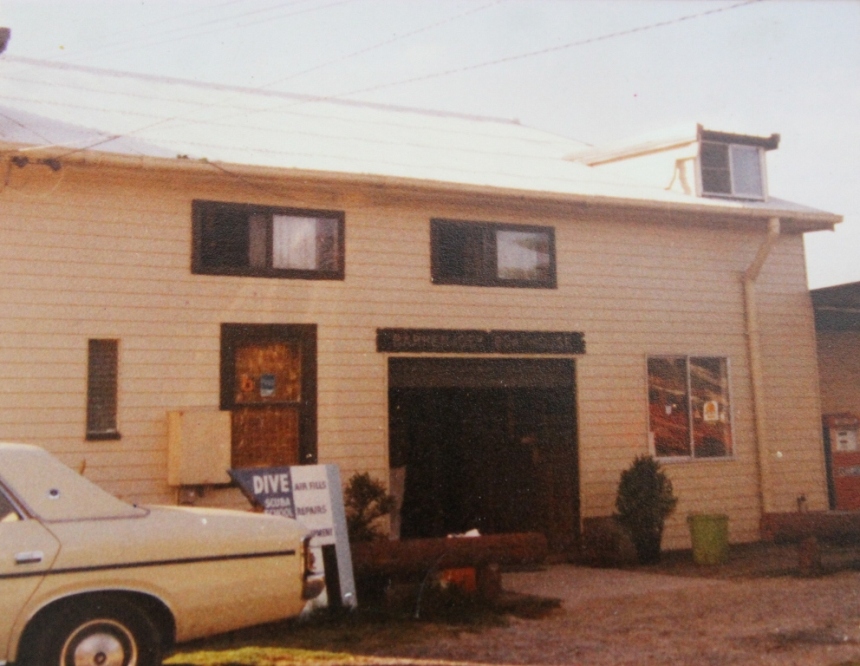
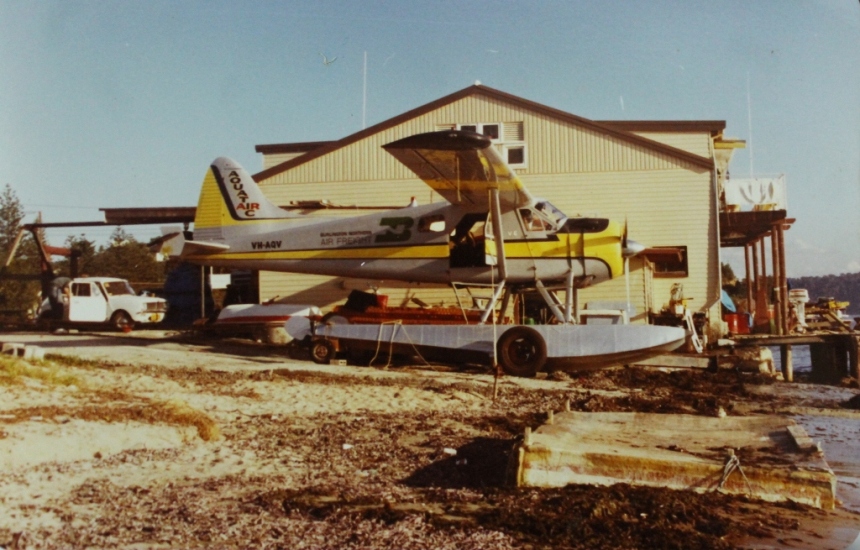
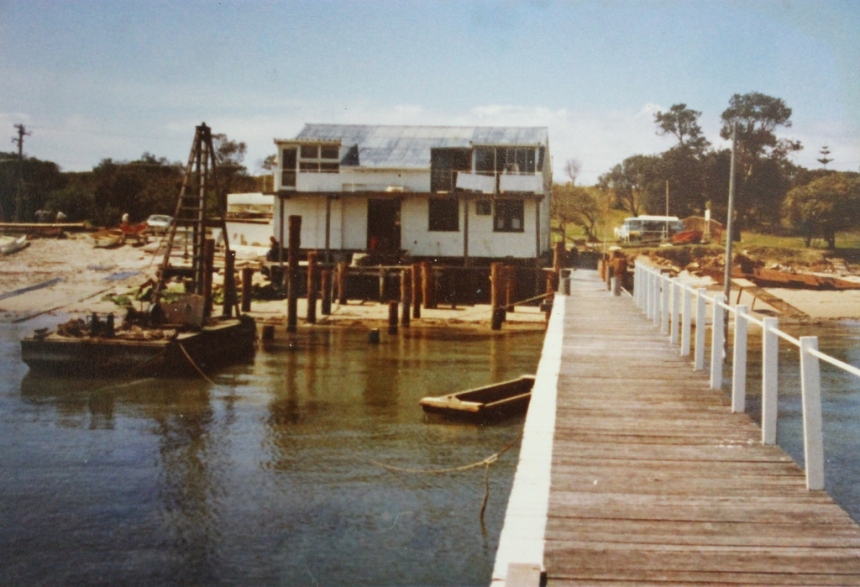
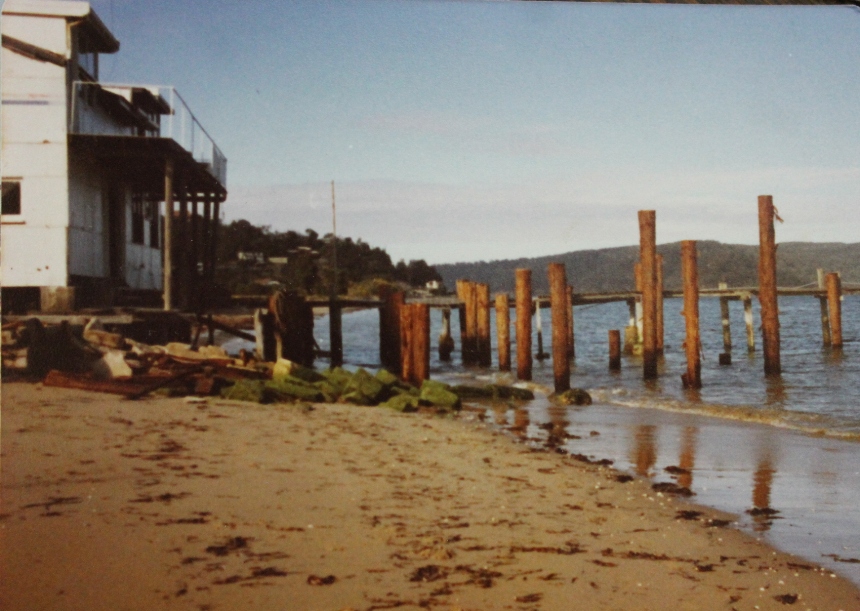
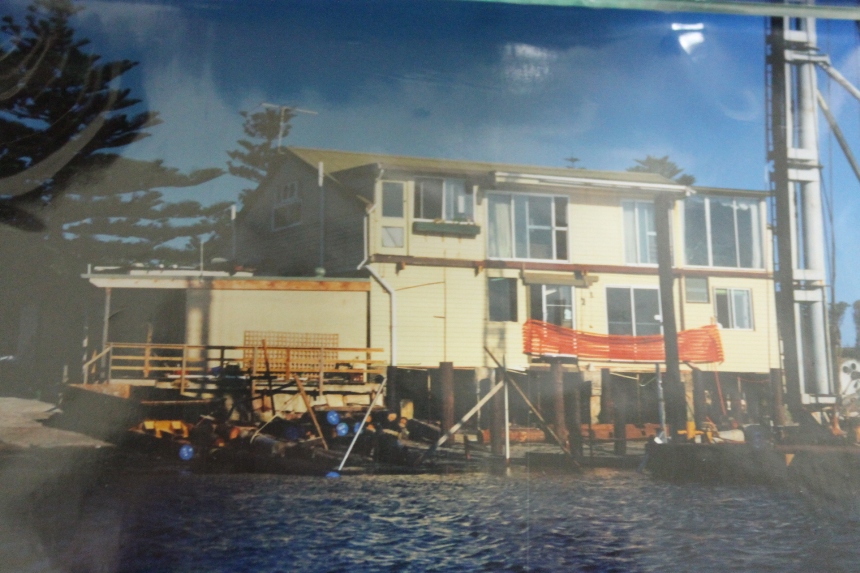
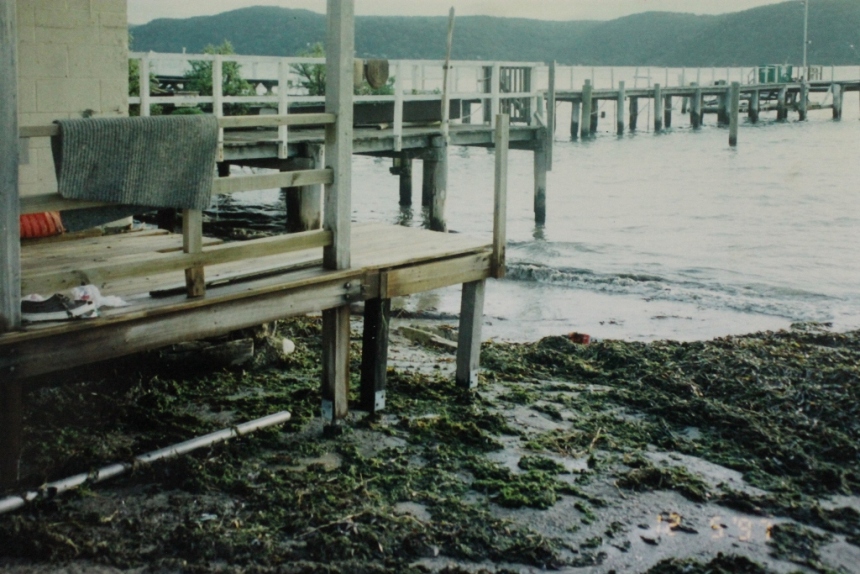
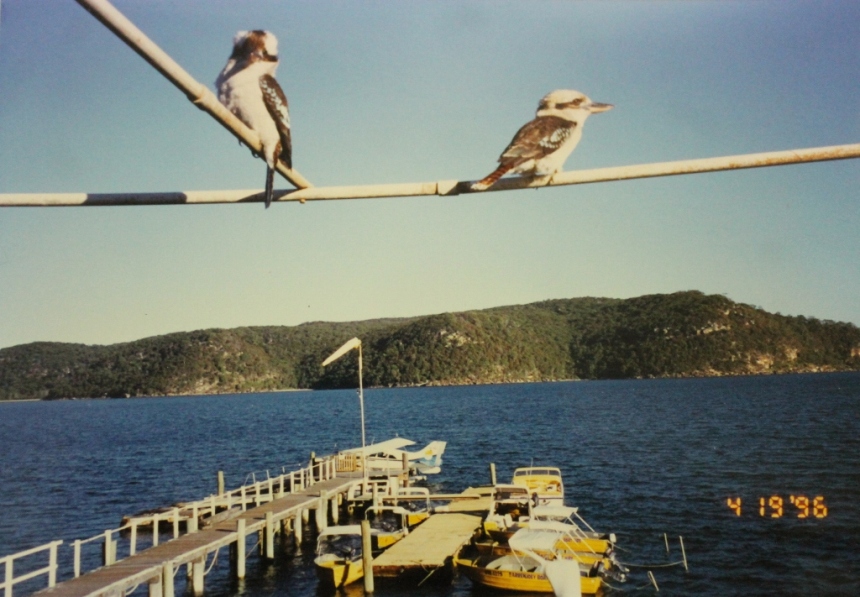
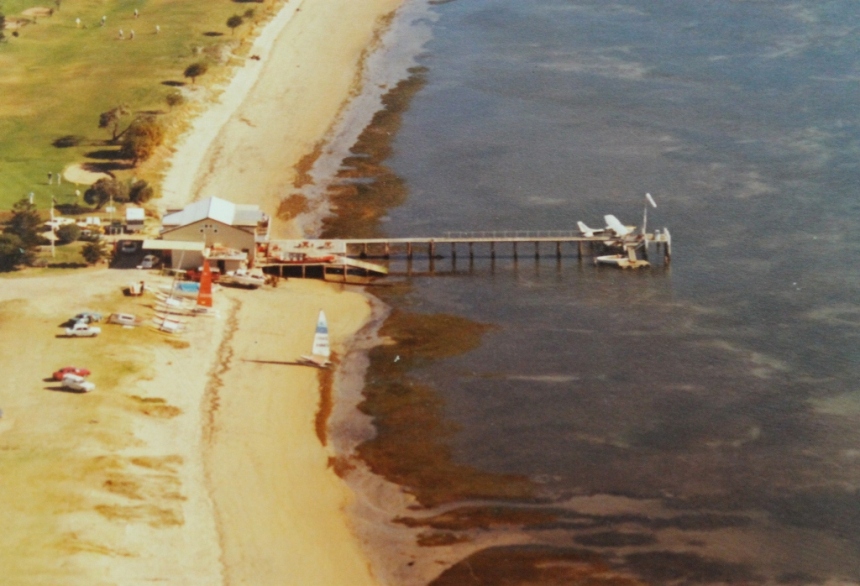
The northern end of the Pittwater estuary remains a place for seaplanes to land visitors on scenic flights or visiting some of our brilliant local restaurants - Jonah's atop Whale Beach for one, or returning to the Boat House on State Beach 'neath Barrenjoey.
Seawind 3000 On Station Beach
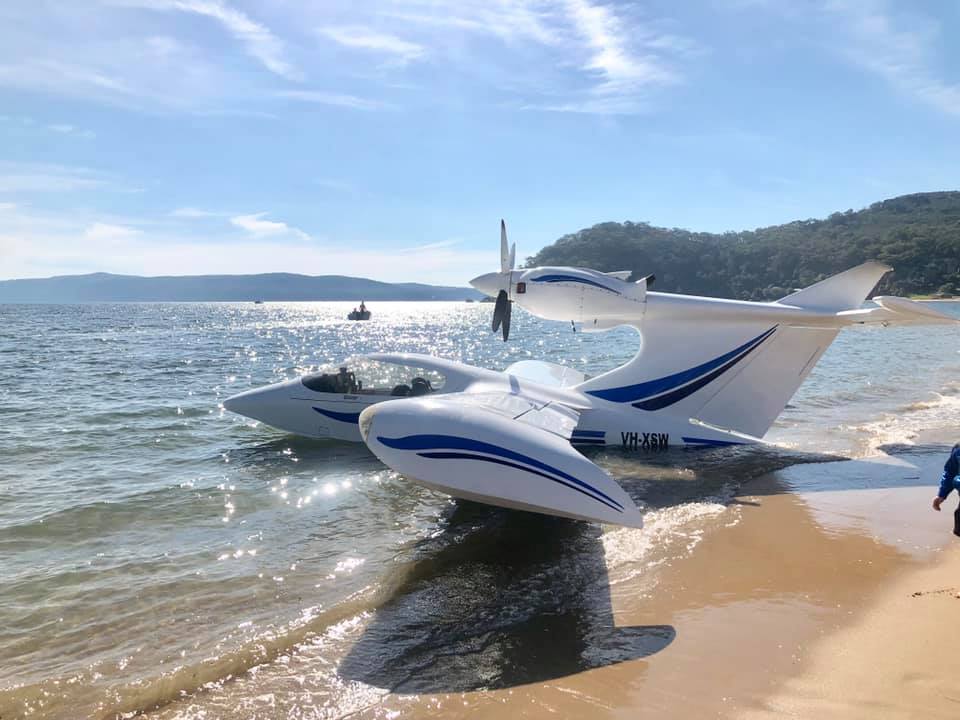
A few more captures from 2015 to 2020 taken at Station Beach, Barrenjoey and at Sandy Point, Palm Beach:
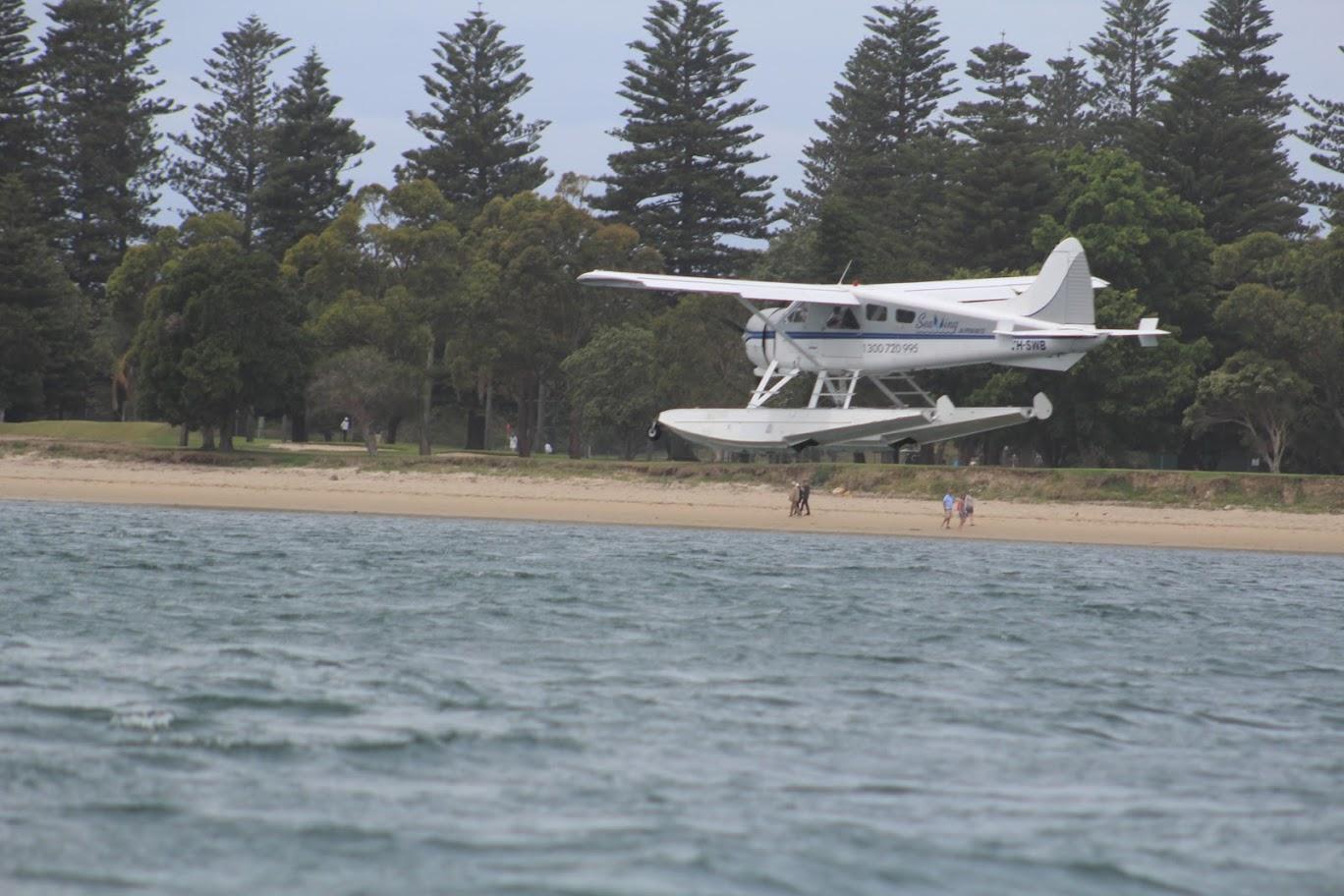
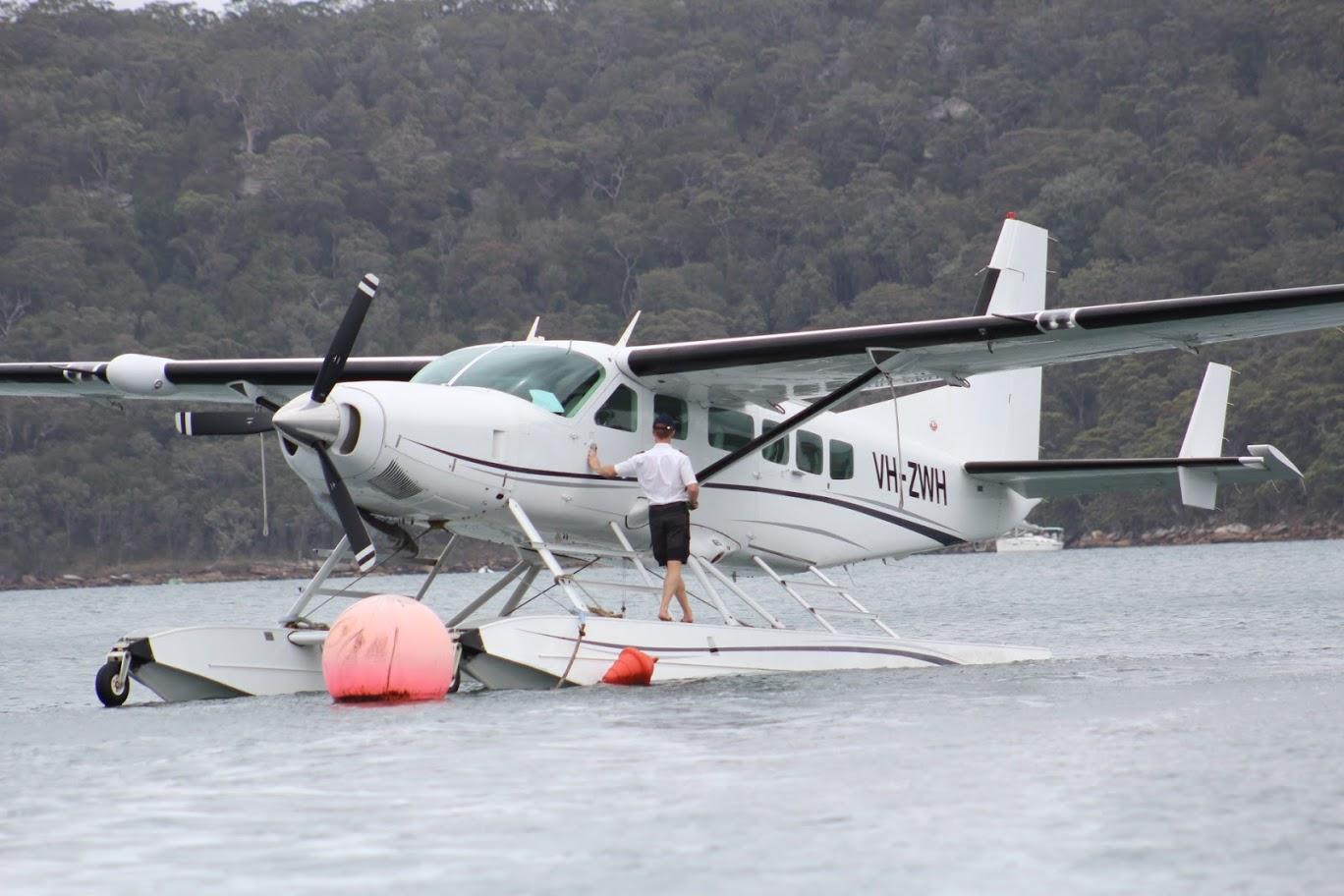
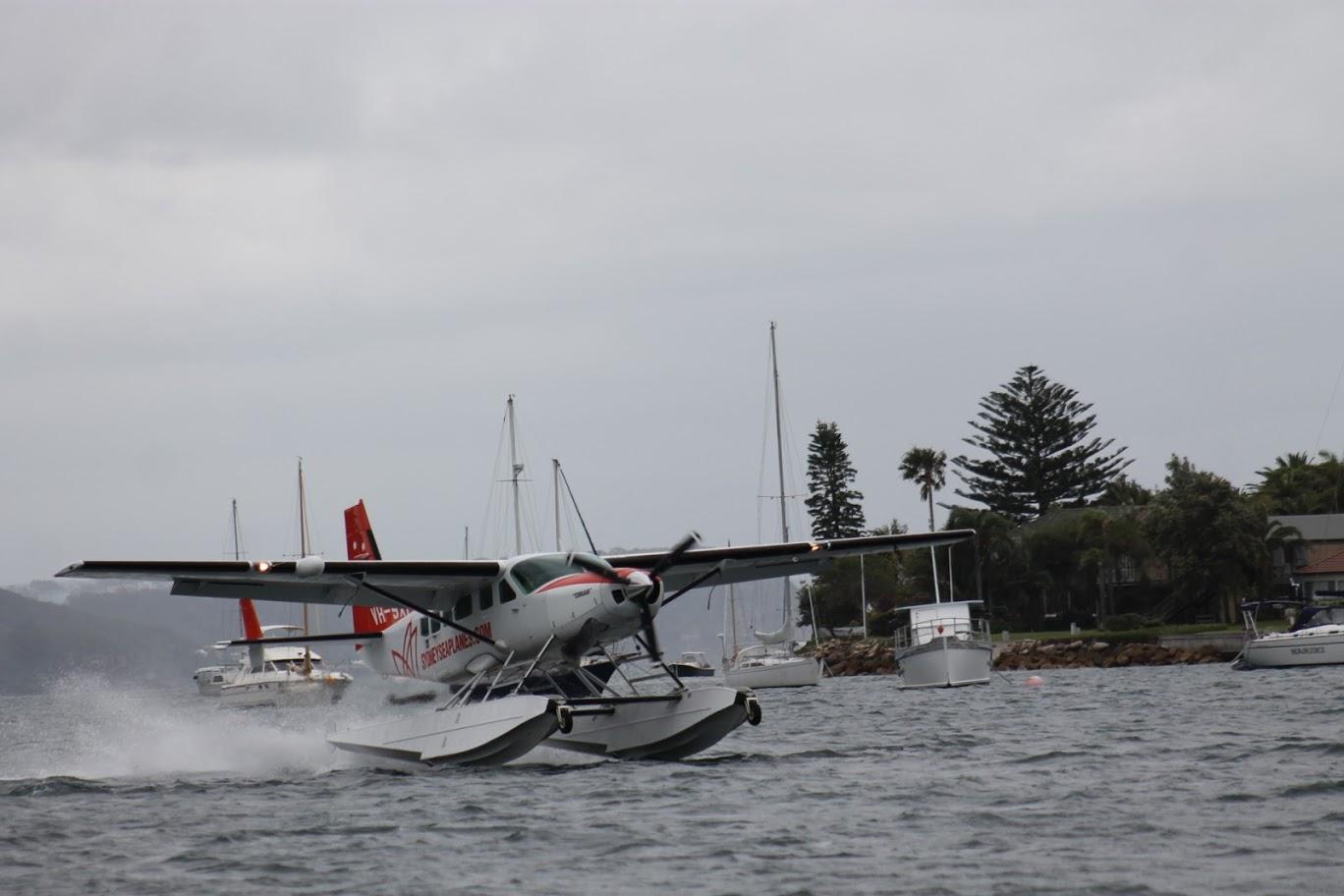
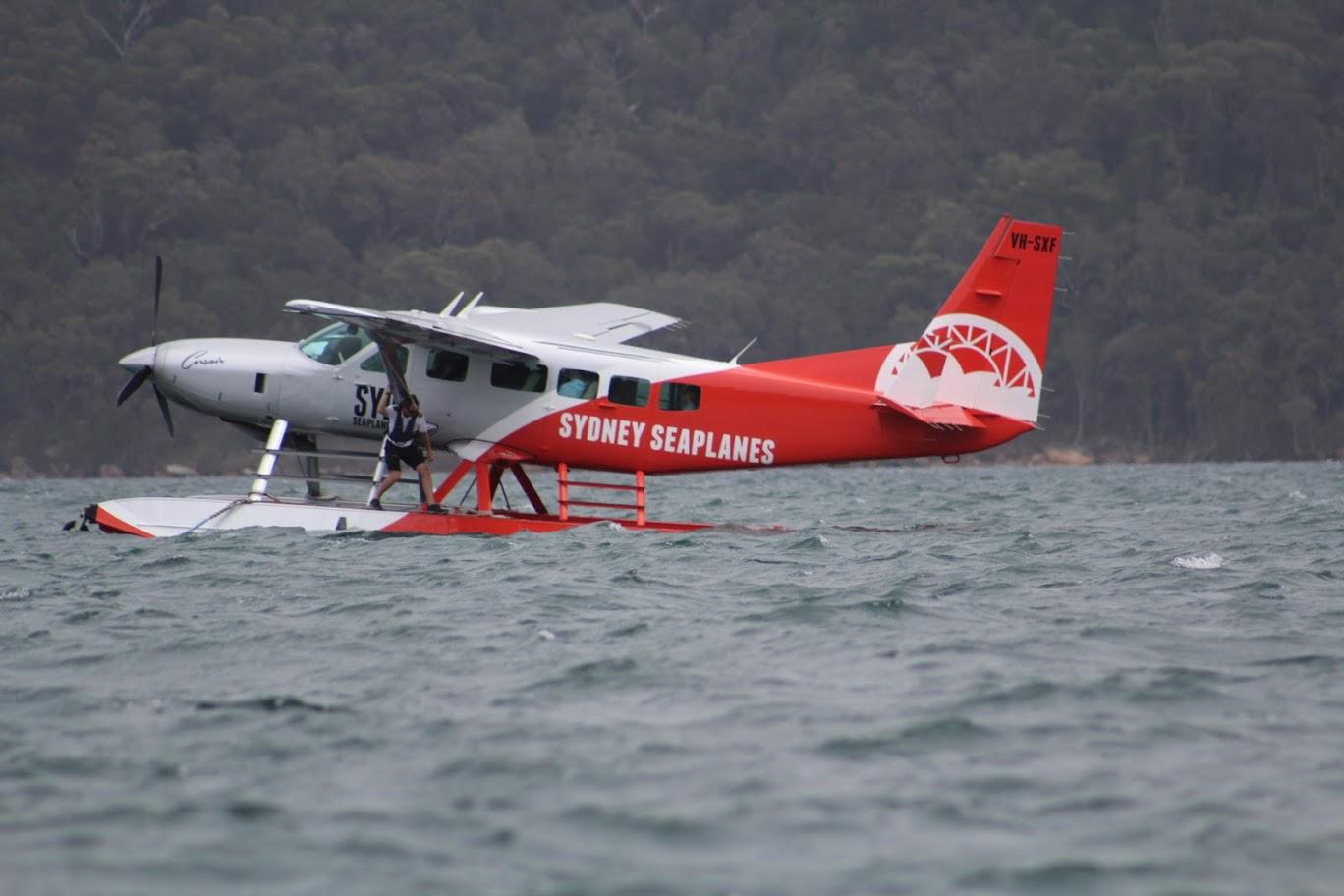
references and extras
- TROVE - National Library of Australia
- First To Fly In Australia, Sunday December 5th, 1909
- Pittwater Roads II: Where The Streets Have Your Name - Narrabeen
- Some Recollections Of Early Bayview - Barbara Tink and Don Taylor
- Cedric Vincent Williams - Profile
- Early Pittwater Paddlers, Oarsmen, Rowers And Scullers: The Williams
- Sir Patrick Gordon Taylor
- The Man Who Saved Smithy: Fighter pilot, pioneer aviator, hero: the life of Sir Gordon Taylor MC, GC
- Florence Mary Taylor
FIRST WINGS OVER AUSTRALIA
FROM BOX KITES TO NO. 1 PILOT'S LICENCE
By Norman Ellison
FIRST there was Lawrence Hargrave. He did not, could not, fly. No man could fly in the two decades before the present century, and that was when Hargrave did the greater part of his work. But Hargrave evolved a theory of heavier-than-air flight that has proved to be one of the foundations of the modern aeroplane, and his pioneering work on rotary engines also has a premier place in aviation history.
In these days of Empire flying-boats and 6000-mile land-planes, kites seem rather puerile. But Hargrave did his important work with kites. He had come to Australia from England at the age of 17 years and in Australia he received all his technical training, lived his life. By domicile and inclination he was truly an Australian.
IN 1894, he made what was the first heavier-than-air flight ever made in Australia. Maybe flight is rather a flattering term, for Hargrave went up only 16 feet, and the lifting power was supplied by four box kites. And only technicians can appreciate the fact that in the first aeroplane ever to fly publicly in the world — that was Santos Dumont's In France — was actually an arrangement of what has become known as the Hargrave kites.
Every Australian schoolboy knows that an American made the first aeroplane flight — 36 years ago. But few of them, outside this city, know that In the Sydney Technological Museum are some frail dingy models designed, made, and used by Lawrence Hargrave. Today any youngster with a model-aeroplane outfit can make models that look better, fly better. But those Hargrave models flew into history, and have remained there.
Linked with time, aviation marches on. The first aerial footsteps in Australia were taken by the late G. A. Taylor, of Sydney, They were very close to the ground. Taylor was experimenting with gliders. But ho was the first man in Australia to get off the ground In a flying machine. His gliders used to be launched from the sand dunes at Narrabeen, a Sydney beach.
J. R. Duigan, of Melbourne, strove magnificently to ride the skies. He built his very own plane, designed and built his very own engine. At Digger's Rest, Duigan flew. In distance and height, it was only a matter of feet, but fly he did. That was In July, 1909.
Houdini, American handcuff-proof master showman, was the first man to make a real aeroplane flight In Australia, a real flight because It did not require a worm's eye view to ascertain whether the aeroplane was really clear of the ground, and because It had a big public audience. It was done at Rosehill (Sydney) racecourse in 1910. The aeroplane was a Voisln box kite. A spot of commercial status came Into Australian aviation in 1911, when the Bristol Aeroplane Coy. sent out what could be called a business delegation.
New Zealander Joe Hammond, complete with big revolver In hip pocket, was in command and was chief, McDonald was mechanic and second pilot, and the party brought two Bristol box kites powered with a 60 h.p. Gnome engine — to sell to the Australian Government. Hammond flew over Sydney, crossed the Heads, and one day even put wings over the military camp at Liverpool. It was all very Impressive. But the Federal Government did not want aeroplanes. So Hammond went back home. He left behind one machine, and the mechanic.
About this time a young Parramatta man was forging out of the rut. His name was William Ewart Hart. He was born in 1885. His father had a timber yard and joinery mill at Parramatta, Young Bill showed unusual mechanical and commercial aptitude. As a schoolboy he built and sold bicycles. Before he was 18 years of age n , shingle Informed the town of Wyalong' (N.S.W.) that W. E. Hart was a dentist. Ho was .qualified, too. In those days there was no University course. An apprenticeship fulfilled requirements. Then, when he was 25 years of age, he saw Hammond fly tlie Bristol. That was the first of a chain of incidents that was to open Australia's register of air pilots. Hart bought the Bristol box kite thai was left In Australia. He paid £1300 for it. So far so good. But, declared the headquarters of the Bristol Coy., unless Hart gave an understanding not to build aeroplanes in Australia, the guarantee of flying tuition that was given with the purchase of the plane, would be withdrawn. Then, even before he had left the ground, Hart's blue eyes swept wide horizons. He would not give that undertaking. But the mechanic, McDonald, got round the difficulty. His company's Instructions prevented him from giving Hart flying instruction, but there was no ukase against instruction on the ground. That's how Hart learned to fly.
Hart freighted his aeroplane to Penrith, his choice of a flying field. Before the machine ever took the air a vilent wind swept the machine across the field, and crashed it, a tangled, twisted wreck, against the fence.
Judged by modern standards the machine was a complete write-off. But there was a determined jut to Bill Hart's jaw. He had staunch friends, and his father had a joinery workshop. A few weeks later Hart had another aeroplane.
Twenty-six years ago aircraft were of primitive simplicity — wings, an engine, a seat stuck out In the open for the pilot, and bits and pieces to hold the show together. No fallals. For Instance, the pilot read his altitude on an aneroid barometer which dangled from his neck on a cord. The engine had no throttle — it was either full speed or stop. Speed was regulated by pressing a button which broke the ignition current. Hart made history with the rebuilt machine. He flew it — at Penrith, In 1911. At his first attempt he made several take-off's and landings the same day. Next day he made a cross-country flight with his brother as passenger. The return flight to Parramatta was hailed ' In English and Continental papers as a world's record. But the two epochal days in Hart's career were when his status as a pilot was officially acknowledged.
First there was the certificate of The Aerial League of Australia — a document whose badge looks like two badly plucked wings of a chook, joined by an uncertain egg. However the League was then the governing authority of aviation in Australia. The certificate set out that William Ewart Hart "having fulfilled the conditions required by the Federation Aeronautique Internationale, is qualified as an aviator." And the certificate said "No. 1."
The second of Hart's pilot's certificates was a kind of Empire and international corroboration of the first one. Issued three months later (in March, 1912), it was from the Royal Aero Club of the United Kingdom, which was recognised by the Federation Aeronautique Internationale "as the sporting (aviation) authority of the British Empire." It awarded Mr. William Ewart Hart Aviator's certificate No. 199. Finicks will note that the Australian body used Hart's name in its nudity, that the Royal Aero Club gave him a "Mr."
Bill Hart has not flown for some years now. He has a big dental practice in Sydney, some wheat farms at West Wyalong (N.S.W.), and a son and heir aged one. But he is still an enthusiast— not in, but for, aviation.
.jpg?timestamp=1615405210132)
First licence issued to a pilot in Australia.
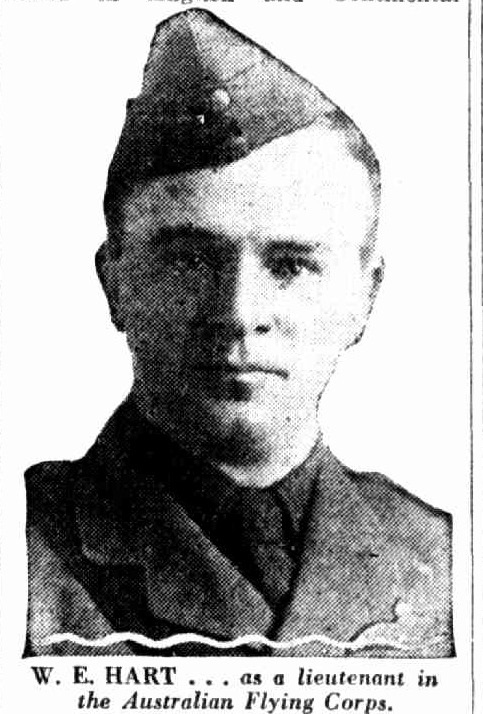
W. E. HART . . . as a lieutenant in the Australian Flying Corps.
First Wings over Australia (1937, October 23). Smith's Weekly (Sydney, NSW : 1919 - 1950), p. 46. Retrieved from http://nla.gov.au/nla.news-article235898009
Edgar Wikner Percival (February 23 1897 – January 21 1984) was a noted Australian aircraft designer and pilot whose aircraft were distinguished by speed and grace. Percival went on to set up the Percival Aircraft Company, a British aircraft company in his own name. Percival was born in 1897 at Albury, New South Wales, the son of Blanche Hilda Leontina Percival, née Wikner and William Percival, a butter manufacturer. Edgar Percival's maternal great uncle was the Swedish philosopher Pontus Wikner.
As a child Percival assisted at his family's farm, on the flats of the Hawkesbury River at Richmond, New South Wales. He also became fascinated by aviation, especially after seeing an aeroplane for the first time in 1911, when a local dental surgeon and pioneer aviator, William Ewart Hart, landed on the council field in Richmond, near the Percival property. After helping to maintain Hart's aircraft, Percival received, as a reward, his first flight. By 1912, when he was 14, Percival had designed, produced and flown his own gliders.
He attended Fort Street High School, in Sydney. Percival left school at the age of 15, to become an apprentice engineer at a Sydney firm. He later enrolled at Sydney Technical College, before undertaking a short course in aeronautical engineering at Sydney University.
In 1915 Percival volunteered for overseas service with the Australian Imperial Force, as a Private with the 7th Light Horse Regiment. After being promoted to temporary Sergeant, he embarked in April 1916 for Palestine.
Percival requested a transfer from the AIF to pilot training with the British Royal Flying Corps (RFC), and was accepted in November 1916. After going solo in 20 minutes in 1917, Percival was assigned to No. 60 Squadron, a scout (fighter) unit in France, commanded by the Canadian ace Billy Bishop. Percival was noted for his flying skills and after he was promoted to Captain, transferred to No. 111 Squadron as one of its founding members. With 111 Sqn he saw service in the Middle East and Greece. In 1918, while serving in Egypt, Percival designed his first powered aircraft, "a special-purpose aircraft based on the Bristol F.2B, with the Rolls-Royce Eagle engine". In August 1919 he was elected as a member of the Royal Aero Club.
Following the First World War, Percival returned to Australia with three surplus aircraft, two Avro 504s and a de Havilland DH.6 aircraft to do film work, stunt flying and barnstorming plus charter flights, operating his own charter company. A number of notable flights occurred: in 1921, he surveyed the Melbourne-Brisbane route in an Avro 504, in 1923, he won the Melbourne to Geelong Race.
In Australia, Percival began to take a further interest in aircraft design; he built the winning entry in the 1924 Australian Aero Club competition to design a light aircraft. In 1926, flying an aircraft that he helped design, he competed in a Federal Government challenge for both design and piloting skills, winning £940 in prize money.
Later in the same year, Percival was involved in a landmark series of proving flights that helped establish the use of carrier-borne fighters, culminating in his being catapulted in a "navalised" Sopwith Pup off the USS Idaho battleship, at Guantanamo Bay, Cuba.
Percival returned to England in 1929 where he was appointed as an Air Ministry test pilot, specializing in amphibians, seaplanes and Schneider Trophy racers and went on to set up his own firm, the Percival Aircraft Company, to produce his aircraft designs. Edgar Percival was also very active as a pilot during the interwar period; not only did he compete with regular success, but his designs were widely used by other racing and record-setting pilots who held his products in very high regard. Noted racing pilots of the time who also flew Percival's machines included C.W.A. Scott, Jim and Amy Mollison, Charles Gardner and Giles Guthrie. Many came to Percival to have their machines specially built and modified for the task in hand – usually to extend their already long range.
Percival was a noted character on the air racing scene at the time, and was often referred to in the aeronautical press of the day as "The Hat," an epithet resulting from his omnipresent hat, which, characteristically (and resplendent in a lounge-suit), he also wore while flying. He was respected as a highly competitive and able pilot, taking great pride in being awarded the prize for "fastest time" in handicap air racing, as well as being a rather fiery, impatient and irascible businessman and employer. During this period, Edgar Percival served in the Reserve of Air Force Officers, 1929–1939 and was a founding member of the Guild of Air Pilots and Air Navigators.
Percival's interest in aircraft technology led him to design the Saro Percival Mail Carrier (1930), one of a series of collaborative projects with Saunders Roe Ltd.. Having had interests in the company which he sold in 1932, Percival began searching for an established manufacturer to produce a "light" aeroplane that he had designed which he called the "Percival Gull."[2] Finding no company willing and able to take on production, Percival consequently started his own aircraft company as the Percival Aircraft Company. In collaboration with Lt. Cdr E.B.W. Leake (who was to become co-founder of Percival Aircraft), he arranged for the prototype Gull (registered as G-ABUR) to be produced by the Lowe-Wylde British Aircraft Company of Maidstone, Kent.
Running the business from his private address in London (20, Grosvenor Square[3]), Percival then arranged for series production to be contracted out to George Parnall & Sons, of Yate, Gloucestershire, an arrangement that lasted two years. Percival Aircraft was officially formed in 1933. In 1934, after 24 Gulls had been produced at Parnalls, Percival set up his own factory at London Gravesend Airport, Kent.
Edgar Percival's aircraft were renowned for their graceful lines and outstanding performance. As a noted test pilot, Percival continued to fly his own creations; in 1935, he flew a Gull from England to Morocco and back to England, winning the Oswald Watt Gold Medal. He was the first pilot to fly from Britain to Africa and back in one day. He left Gravesend at 1.30am and returned to Croydon at 6.20pm. "Day trips in the future will be as commonplace as trips to Margate" he said in a broadcast at nine o'clock. Other famous aviators were associated with Percival aircraft; in 1933, Charles Kingsford Smith flew a Percival Gull Four named Miss Southern Cross from England to Australia in the record breaking time of 7 days, 4 hours and 44 minutes. The New Zealand aviator, Jean Batten, also used the Percival Gull to fly from England to Australia in October 1936. A pure racing derivative of the Gull series, the Percival Mew Gull flown by other illustrious pilots such as Alex Henshaw and Tom Campbell Black would go on to set many speed and distance records in the 1930s.
In late 1936, Percival transferred production to larger facilities at the newly built Luton Corporation Airport in Bedfordshire. A two-bay hangar was constructed to accommodate the workshops while the design offices were set up in the original Georgian farmhouse situated nearby.[4] Production at Luton was then primarily focused on the Vega Gull. A small twin-engined machine, the Q6 was also produced in limited quantities, using a pair of de Havilland Gipsy Six Series II powerplants equipped with variable-pitch airscrews. Again, the same basic method of construction was employed and the finished result was an aesthetically pleasing and aerodynamically clean feederliner of its day that represented the final new design produced by the company prior to Edgar Percival selling his interests in the company.
In 1938 with war imminent, Percival developed a military communications and R/T operator training version of the Vega Gull known as the Proctor. This rugged three-seater was powered by a 205 hp Gipsy Queen II engine. During the Second World War, a great deal of Proctor production was sub-contracted out and the designs of other firms, including the Airspeed Oxford and de Havilland Mosquito were, in turn, produced by Percival Aircraft at Luton.
In March 1940, Percival resigned from the company, his dual roles being taken up by P.D. Acland (formerly Aviation Manager of Vickers Ltd.) who was appointed Managing Director and Arthur Bage who became the Chief Designer. During the war years, Percival served in the Royal Air Force Volunteer Reserve.
Percival Aircraft was bought in September 1944 by Hunting & Son Ltd; Edgar Percival sold his interest in his company and moved to the United States to continue work on engine technology. From 1954, his old company began trading under the name Hunting Percival Aircraft Ltd; "Percival" was not dropped from the company name until 1957.
Percival became a naturalized US citizen in 1948. He went to New Zealand in 1951, where he was involved with pioneering aerial application efforts. In 1954, Percival formed a new company, Edgar Percival Aircraft Limited, at Stapleford Aerodrome, England. The company's first design, the Edgar Percival E.P.9 was a utility aircraft well suited to agricultural use. A total of 21 were constructed before Percival sold his company in 1960 to Samlesbury Engineering; the new company formed Lancashire Aircraft Company to continue aircraft construction of the E.P.9. At the time of his death in 1984, Percival was working on aviation projects in the UK and New Zealand. - from Wikipedia, John McCarthy, 1988, "Percival, Edgar Wikner (1897–1984)", Australian Dictionary of Biography and Ellison, Norman H. Percivals Aircraft (The Archive Photographs Series). Chalford, Stroud, UK: Chalford Publishing Company, 1997. ISBN 0-7524-0774-0.
Landing In Pittwater: That Beach-Estuary-Lagoon Looks Like A Great Place To Touchdown! - threads collected and collated by A J Guesdon, 2021